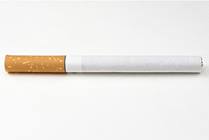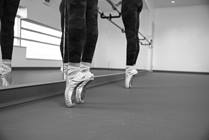Search Results
Viewing: 1-1439 of 1439 | All
Article
Hand Containment
Hand containment is a gentle and active way to help your baby into a tucked or flexed
position. This helps to soothe, console or calm your baby.

Helping Hands
Access Helping Hands™ resources about birth control options: written by medical professionals at Nationwide Children's Hospital.
Article
Exercises: Upper Extremities Infant (Passive)
Range of motion exercises help keep your baby's joints and muscles loose and easy to move. An exercise program is planned for each child’s needs.

Helping Hands
Access our patient education library and view dozens of articles created by our experts.
Article
Exercises: Arms and Hands (Passive)
Range of motion exercises keep your child's joints and muscles loose and easy to move. Your child should lie on his or her back on a firm surface while doing the exercises. You should be on the same side of his body as the arm you are working with. Motions should be smooth, not bouncy.
Article
Dental Home Care Goals Fact Sheets
Keep your child's teeth healthy and clean with these dental home care goals.
Article
Developmental Milestones: 6 to 12 Months
Developmental milestones are skills or behaviors that most children will start or master by a certain age. Children reach milestones in many ways: speaking, learning, moving, and playing. There are things you can do with your child to help them reach these milestones.
Article
Exercises: Upper Extremities (Active)
Active exercises help keep your joints and muscles from tightening up and becoming weaker. Your exercise program is planned for your specific needs because not all your muscles have the same degree of strength or weakness. The goal of active exercise is to keep your muscles strong and flexible.
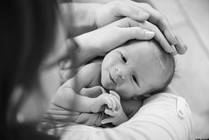
Blog
Hand Containment: How Gentle Touch Can Calm Your Baby
Human touch is healing. A warm embrace, a hand to hold and even a gentle touch on the arm can help most of us during times of distress. Holding, and the expression of care and emotional support through touching, are the main ways that infants learn to feel safe and secure.
Article
Droplet Precautions
The purpose of these precautions is to keep germs from spreading from your child to other patients, family members, visitors or healthcare workers.
Article
Exercises: Breathing, Posture and Chest Mobility
The following exercises will improve your posture (the way you stand). They will also make the muscles of your chest stronger and more flexible so that breathing is easier. Do each exercise 5 times.
Article
Contact Precautions
Your child may be placed on Contact Precautions as a safety measure as certain germs can be spread by contact.
Article
Exercises: Lower Extremities (Active)
Active exercises help keep your joints and muscles from tightening up and becoming weaker. Your exercise program is planned for your specific needs because not all your muscles have the same degree of strength or weakness. The goal of active exercise is to keep your muscles strong and flexible.
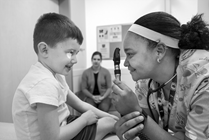
Article
Eye Surgery Under Anesthesia
This Helping Hand™ is about how to prepare for eye surgery under anesthesia.
Article
Crutch Walking
Crutches may be used to keep weight off a leg or foot while it is healing. Your health care provider will check one of the weight-bearing instructions below: Non-Weight-Bearing (NWB) – Do not put any weight on the injured foot or leg.
Article
Exercises: Stretching
Stretching exercises help keep your joints and muscles from tightening up. Your exercise program is planned for your specific needs because not all your muscles have the same degree of strength or weakness.
Article
Pasteurized Donor Milk for Your Hospitalized Baby
This Helping Hand™ is about what pasteurized donor milk is and why some babies may need it. It also talks about the process of pasteurizing and how you can become a donor.
Article
Cardiopulmonary Resuscitation (CPR): Puberty to Adult
This Helping Hand™ is a guide to general CPR for children that have gone through puberty and adults. It is not intended to be used as training material or in place of formal CPR training.
Article
Transcranial Doppler (TCD) Ultrasound
Children with sickle cell disease are at risk for stroke. Transcranial (trans-CRANE-ee-ul) Doppler (TCD) ultrasounds help predict that risk. A TCD measures how fast blood is flowing to the brain (Picture 1). When blood flows faster than it should, there is a higher risk for a stroke.
Article
Hard Splints
This Helping Hand™ explains how to care for your child while they have a splint.

Article
For Providers
Whether you’re seeking the latest birth control option information or resources to help patients make confident contraceptive decisions, our provider resources can assist.
Article
Airborne Precautions
Airborne precautions are used when germs, such as the kind that cause tuberculosis and chickenpox, can be spread through the air from one person to another.
Article
Exercises: Lower Extremities - Older Child (Passive)
Range of motion exercises help to keep your child's joints and muscles from tightening up. An exercise program is planned for the individual needs of each child. While doing the exercises, your child should lie on his back on a firm surface.
Article
Resources at Home
We want to help you take care of your baby once he/she is discharged. These resources cover everything from fevers to colic.
Article
Burns: Wearing a Pressure Garment
This Helping Hand™ is about using pressure garments after a burn to help reduce scaring.
Article
Tummy Time
It is important for babies to sleep on their backs to reduce the risk of Sudden Infant Death Syndrome (SIDS). However, a baby needs time on his or her tummy for stretching and strengthening his back and neck muscles.
Polydactyly
Polydactyly refers to extra fingers or toes that are present at birth. Polydactyly usually is genetic. These extra digits can be made up of one or more of the following: Skin, soft tissue and bone with joint, ligament, and tendon.
Article
Cardiopulmonary Resuscitation (CPR): Age 1 to Puberty
This Helping Hand™ is a guide to general CPR for children that are over 1 year old and have not gone through puberty. It is not intended to be used as training material or in place of formal CPR training.
Article
HIV Prevention
This Helping Hand™ is about how human immunodeficiency virus (HIV) attacks the immune system, how it spreads, and how to prevent it.
Article
Collar and Cuff Sling
A collar and cuff is a type of sling that the Nationwide Children's Hospital staff makes just for your child. This special sling will provide comfort to your child. It also helps keep the arm in the best position for proper healing of the injury and decreases swelling.
Educational and Clinical Resources
Access educational behavioral health resources for your patients and clinical tools for your practice.
Article
Innocent Heart Murmurs
Innocent heart murmurs are common in children and usually disappear before the child becomes an adult.
Article
Osteopathic Manipulative Medicine
Osteopathic Manipulative Medicine (OMM) is a set of hands-on techniques. They are used to ease pain, calm the nervous system and improve a variety of symptoms. This lets the body function better and move more easily to help your child feel better.
Article
Scar Management
Does your child have a scar forming? This Helping Hand can walk you through all of the scar management techniques.
Article
School and Illness: Should Your Child Stay Home?
This Helping Hand™ can help you decide when your child should stay home if they're sick.
Article
Developmental Milestones: 0 to 6 Months
Developmental milestones are skills or behaviors that most children will start or master by a certain age. Children reach milestones in many ways: speaking, learning, moving, and playing. There are things you can do with your child to help them reach these milestones.
Article
Advice for New Moms and Dads
There are many books to help new parents and their babies thrive. These are some quick tips to get you started.
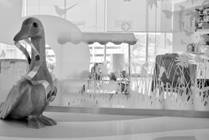
Condition
Nursemaid's Elbow
This Helping Hand™ explains what Nursemaid's elbow is and talks about how to prevent it.
Article
Eye: Tear Duct Massage
Tear duct massage is a way to help to open the duct and let the tears flow into the tear sac.
Article
General Eye Care and Safety for Children
How to care for your child's eyes and keep them safe.
Article
Tonsillectomy and Adenoidectomy
This Helping Hand™ is about having a tonsillectomy and adenoidectomy (T & A) surgery. During this surgery, the tonsils and adenoids are taken out at the same time.
Article
Infant Vision Birth to One Year
This Helping Hand™ describes what your baby sees from the time they're born until they're 1 year old. See how you can help your baby’s vision develop.
Article
Hospital Admission for COVID-19
This Helping Hand™ covers what to expect when your child is admitted to the hospital for COVID-19 (Coronavirus Disease 2019). This includes information about visitors, personal protective equipment (PPE), and preventing the spread of COVID-19.
Article
Female Reproductive System
This Helping Hand™ explains what body parts inside (internal) and outside of the body (external) make up the female reproductive system.
Article
Male Reproductive System
This Helping Hand™ explains what body parts inside (internal) and outside of the body (external) make up the male reproductive system.
Article
Inhalers: Spacers
Many medicines that help make breathing easier are taken by an inhaler. The inhaler must be used the right way, or the medicine will not get into the lungs to make your child feel better. A spacer is a device that helps the medicine get into the lungs.
Article
Suctioning the Nose Human Powered Nasal Suction Tube
This Helping Hand™ is about human-powered nasal suction tubes. Here you'll see how and when to use this to suction your child's nose.
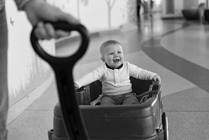
Congestive Heart Failure
Congestive heart failure (CHF) happens when the heart does not pump enough blood to the body for normal function and activity. When the heart is not pumping normally, fluid can build up in the lungs.
Article
Film Array Viral Panel (FARVPP)
Prepare for your child's Film Array Viral Panel test with this Helping Hand.
Article
Animal Bites
An animal scratch or bite can be very frightening. Your child may need extra comfort and attention in the next few days or weeks to get over the experience.
Article
Sickle Cell Disease and Stroke
Children with sickle cell disease (SCD) are at risk of having strokes. A stroke happens when the blood flow to or in the brain is blocked. This blockage slows down or stops oxygen to the brain. This can cause damage to the brain.

Article
Healthy Sleep Habits for Babies and Toddlers
Sleep is important at all ages. Newborns do not know day from night, so they sleep and wake up at all times. Toddler sleep may vary too. This can be hard for parents.
Article
Personal Hygiene
The body performs better when it is clean and healthy. Good personal hygiene should include clean skin and care of the mouth, teeth, hair, hands, feet and nails.
Article
Phototherapy for Skin Conditions
Phototherapy is a special light therapy prescribed to treat some skin disorders. Phototherapy uses ultraviolet (UV) light. The phototherapy light booth is similar to a standing-up tanning bed. It is operated by a trained nurse.
Article
Chiari Malformation Type 1
This Helping Hand™ explains how the brain is effected in Chiari malformation type 1.
Molluscum
Molluscum are smooth, pearly, skin-colored, benign bumps on the skin. They begin as small bumps and they may grow as large as a pencil eraser.
Article
Cardiopulmonary Resuscitation (CPR): Infants
This Helping Hand™ is a guide to general CPR for infants. It is not intended to be used as training material or in place of formal CPR training.
Article
Genital Exam - Male (Pre- or Early Puberty)
An exam of your child's genitals is done to check for possible disease, injury or abnormality.
Article
Dental Injuries: Follow-Up Care
If your child has had a serious dental injury, it is important to follow-up with your child’s dentist.
Article
Catheterization: Self-Clean Intermittent - Female
Learn how clean intermittent catheterization is done by putting a tube through the urethra into the bladder for females.
Article
Oncology: Homegoing Instructions
This Helping Hand™ will help you know what to do when going home after a cancer treatment.
Article
Tips and Suggestions for Taking Asthma Medicine
Here are some expert tips to help encourage and improve your child's experience when taking asthma medicine.
Article
Contrast Enema
A contrast enema is a test where contrast solution makes the large intestine (bowel) and part of the small intestine show up on the X-ray picture.
Article
Brief Resolved Unexplained Event (BRUE)
This Helping Hand™ explains what a brief resolved unexplained event (BRUE) is and how to care for your child if they have one.
Article
Radiation Therapy
This Helping Hand™ goes over the process of radiation therapy and what to expect.

Article
Pain Management: Dealing with Chronic Pain in Children and Teens
Dealing with chronic pain can be challenging for people of any age and their families. Along with good management of pain and stress, the following ideas can help your family break the cycle of chronic pain.
Article
Food Allergy and Anxiety
Children may have anxiety about their food allergies. This can cause extreme fear and worry that may change your child’s behavior.
Article
Condoms
Condoms should be used while having sex. They help prevent the spread of sexually transmitted infections (STIs) and reduce the risk of pregnancy.
Article
Asthma and Steroid Use
Asthma is when the airways, or bronchi, in the lungs overreact to certain things.

Specialty
Burn Center
Verified by the American Burn Association and American College of Surgeons, our program ensures children with burn injuries and their families receive the expertise and support of a comprehensive, multidisciplinary team.
Article
NTrainer® Pacifier System
The NTrainer is a special pacifier used to help premature babies with feeding. Many babies born before 35 weeks have trouble learning to breast or bottle feed and breathe at the same time.
Article
Treating Pain After Surgery
Nationwide Children’s Hospital wants to make your child as comfortable as possible. Having pain is normal after surgery, but there are ways to ease the pain.
Article
Intranasal Diazepam Spray
Diazepam is the generic name for Valtoco®. This medicine is a fine mist that is given through the nose and is absorbed quickly.
Article
Helping Very Young Children Cope after a Trauma
Most children do not have long-term emotional problems after a serious injury or traumatic event. However, behavior changes may occur while their brain tries to process what has happened.
Article
Sickle Cell Disease and Fever
Children with sickle cell disease (SCD) are more likely to get infections, especially bacterial infections. The spleen helps to fight infections. In patients with sickle cell disease, the spleen does not work as well. Fever may be the first and only sign of infection.
Article
What to Expect
What to bring and how to prepare for a visit to one of our convenient lab services locations.
Article
Tests, Procedures and Treatments
This section has some more in depth information about the tests all babies receive before leaving the hospital.
Article
Liver Injury
This Helping Hand™ is about liver injuries and discusses the grading system used to determine seriousness, treatment options and care at home.
Article
Emergency Phone Numbers and Directions to Nationwide Children's
Keep this information by the phone nearest your child at home.
Article
Use of Electronic Devices
This Helping Hand™ explains the guidelines for using cell phones and other electronic devices while visiting the hospital. Please follow these guidelines when visiting us.
Article
Tracheostomy Care: How to Prevent Trach Infections
This Helping Hand™ talks about ways to help keep your child from getting infections when they have a tracheostomy (trach) tube.
Article
Toilet Training
This Helping Hand™ goes over when to start potty training and tips to help make it a rewarding journey for you and your little one. Being consistent and positive will help your toddler succeed in potty training.

Article
Comfort Hold Techniques
These comfort hold techniques have been developed to help you hold your child during a procedure. The purpose of a hold is for your child to feel safe and to help him or her keep still and calm.
Article
Bronchoscopy and Laryngoscopy
What to expect and how to prepare for your child's bronchoscopy and laryngoscopy.
Article
Calming a Fussy Baby
Your baby’s cry is how they communicate with you. Babies cry so they can be fed, put to sleep, or have their diaper changed. All babies cry, especially in the first 6 months of life. During this period, most babies can cry for 45 minutes to 2 hours each day.
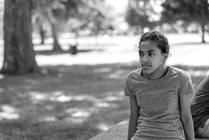
Article
Behavior Support - Using Planned Ignoring at Home
Planned ignoring, or extinction, is not paying attention to a problem behavior in order to decrease the behavior in the future. Your behavior support provider will teach you how to use planned ignoring.
Article
Brachial Plexus Injury
The brachial plexus is a group of nerves that starts in the spinal cord at the neck and controls the hand, wrist, elbow and shoulder. It can be injured during birth.
Article
Child Care and Illness: Should Your Child Stay Home?
Sometimes it is hard to decide if your child is too ill to go to childcare. Usually, children should stay home if illness keeps them from enjoying the daily activities of childcare.
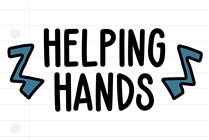
Article
Videofluoroscopic Swallow Study
This Helping Hand™ is about the videofluoroscopic swallow study (VFSS), which is a test to see how your child swallows food and liquids.
Article
Diabetes: When Your Child Should Stay Home from School
This Helping Hand™ covers when your child should stay home and get a school excuse for their diabetes and when they should stay in school.
Article
Diazepam Rectal Gel (Diastat)®
Your child’s healthcare provider or doctor has recommended Diastat® to help control some of your child’s seizures (Picture 1). It can be given by parents or other caregivers who know the child’s seizure patterns.
Article
Dental: Teeth and Gum Care
Use these instructions and tips to properly care for your child's gums and teeth.
Article
Fluorescein Angiography
Fluorescein Angiography is a simple diagnostic test. It involves fluorescein dye that is either injected into the bloodstream through a vein in the arm or taken by mouth as a drink.

Article
Behavior Support: Using a Schedule
Using a schedule helps you and your child create expectations.
Boxer's Fracture
This fracture in the hand is often caused by hitting something with a closed fist, thus the name Boxer’s Fracture. It is commonly seen in teenagers. The fracture will typically heal within 3 to 4 weeks from the date of injury.
Article
Developmental Care
From kangaroo care to tummy time, this section is all about your baby's developmental milestones and how you can help him/her reach them.
Article
Travel Bag for Trach Care
You will need a travel bag to take along every time you take your child out of the house.
Article
General Information
This section includes family guidelines, insurance information, WIC, care team members and more.
Article
Neurogenic Bowel Regulation
A child who has a neurogenic bowel cannot control when he or she has a bowel movement. Bowel control may not be possible, but bowel regulation can be done by following a daily schedule.
Article
Weaning Your Baby: Cup Feeding
Weaning is the time when your baby learns to drink from a cup instead of from a breast or bottle. Infants usually stay on formula until their first birthday. Give formula in the cup instead of cow's milk if you wean your child before one year of age.
Sickle Cell Trait
A person with sickle cell trait inherits one gene to make normal hemoglobin and another gene to make some sickle cell hemoglobin. Hemoglobin is the part of the red blood cell that carries oxygen to different parts of the body. Sickle cell trait is not a disease and will never turn into a disease.
Article
Buccal Medicines: Giving Buccal Medicines
A buccal medicine is a medicine given between the gums and the inner lining of the mouth cheek.

Specialty
Hand and Upper Extremity Program
Children who are born with hand or upper extremity differences or experience a traumatic injury face unique challenges. Our program is one of the few in the US that includes Orthopedic Surgery and Plastic and Reconstructive Surgery, offering a comprehensive approach.
Article
Home Safety for Infants and Toddlers
This Helping Hand™ is about making your home safe for your infant(s) or toddler(s).
Article
Caring for Your Child After a Burn Injury
This Helping Hand™ explains the special care needed if your child has a burn injury.
Article
Catheterization - Self-Clean Intermittent - Male
Clean intermittent catheterization is done by passing a tube through the urethra into the bladder. Catheterization empties urine from the bladder.
Article
COVID-19 Vaccine: Fast Facts
Now we have an extra way to protect ourselves from the virus - vaccines! If more people get the vaccine, COVID-19 will not be able to spread as easily, and fewer people will be sick.
Article
Sickle Cell Disease and Pain
Pain is a common problem for children with sickle cell disease (SCD). Sickled cells have a hard time moving through small blood vessels. They can pile up and clog the vessels, keeping oxygen from getting to certain parts of the body (Picture 1). This causes pain.
Article
Burn Prevention: Teens and Adults
Burns can be serious injuries at any age. Teenagers and adults are at risk for many different kinds of serious burn injuries. The following information shows the common causes of burns in teens and adults and the steps that can be taken to prevent the most common types of burns.

Ankle Sprain
An ankle sprain is a stretching or tearing of the ligaments. Signs of an ankle injury include pain, swelling or trouble walking. This often happens after an injury that involves twisting or rolling of the ankle. Sprains can often be treated at home, but a doctor may need to be seen if symptoms remain.
Article
Button Battery Safety
More and more household items have button batteries. These items include: remote controls, thermometers, games, toys, hearing aids, calculators, bathroom scales, musical greeting cards, key fobs, electronic jewelry, holiday ornaments, cameras, and candles

Article
Discipline
Every child needs discipline. Use this guide to aid you in teaching your child right from wrong, and good from bad.
Article
Aromatherapy: Essential Oils
This Helping Hand™ is about how to use essential oils for aromatherapy safely.
Article
Radiology: Lead Shields or Aprons
For many years, patients had to wear lead shields when getting x-rays, CT scans or fluoroscopy. This is no longer the case.
Article
Catheterization Record: Intermittent
Your doctors and nurses will help you set up your catheterization schedule. Please bring the record with you to your next clinic visit.
Article
Secondhand Smoke and Cystic Fibrosis (CF)
This Helping Hand™ explains why secondhand smoke is dangerous for children with cystic fibrosis and how to keep them safe.
Article
IV Central Line Preventing Bloodstream infections
Learn more about a special type of IV to receive medicines or nutrition.
Article
Throat Culture
If your doctor suspects your child has strep throat, a throat culture may be done. This test shows whether germs (bacteria) are causing your child's sore throat.
Article
Intranasal Midazolam Spray
Midazolam is the generic name for Nayzilam®. This medicine is a fine mist that is given through the nose and is absorbed quickly. The seizures should stop within 5 minutes after giving the medicine.
Article
Yoga for Period Pain
This Helping Hand™ explains how yoga can help with period pain and instructions for common yoga poses.
Article
Transmission-Based Precautions (Isolation): Antibiotic-Resistant Organisms
Some bacteria can develop resistance when antibiotics are used too often or not used correctly. Resistance can make infections very hard to treat.

Condition
Zoonoses
Zoonoses, infections that people can get from animals. Children with compromised immune systems are at higher risk for these infections. The information in this Helping Hand™ will help with safe animal and pet care.
Article
Biosimilar Medicines
Some complex diseases are treated with medicines called biologic medicines or ‘biologics.’ Biologics are made from living cells.
Article
Cochlear Implant (CI) Magnet
The purpose of the cochlear (COKE le ar) implant (CI) magnet is to hold the headpiece (coil) in place to transmit sound to the internal device (Picture 1). The entire device has 4 parts: the magnet, headpiece (coil), cable and processor. The CI magnet portion is about the size of a dime.
Article
Enema: Child Life Coping Skills & Planning
Starting an enema regimen can be an overwhelming task. The Child Life team have many ways to help your child have a better experience coping during their enema routine.
Article
Service Animals at Nationwide Children's Hospital
Nationwide Children’s Hospital allows any patient, family member or visitor to use a service dog in most places. Learn more about bringing service animals to Nationwide Children's.
Article
Universal Newborn Hearing Screening (UNHS)
Learn more about the universal newborn hearing screening.
Article
Gastrointestinal Test (Upper GI Series)
An upper GI series is a test that is done to see how the stomach fills and empties into the small bowel. The test uses an X-ray to look for things that are not normal in the upper GI tract.
Article
Neurogenic Bowel: Bowel Training
Bowel training is achieved when your child has a bowel movement in the potty at the same time every day and therefore has few bowel accidents.
Article
Protecting Babies and Young Children from Contagious Illnesses Without Masks
It is harder for people to breathe with something covering the nose and mouth. Since babies and children younger than 2 years have smaller airways, breathing through a mask is even harder for them than it is for an older child or an adult.
Article
Orthodontics - Wearing Braces
This Helping Hand™ is a guide to caring for your teeth and braces.
Article
Exercises: Right Torticollis Positioning for Play
Right torticollis is a tightening of the muscles on the right side of the neck. It results in your child frequently bending his or her head to the right side and looking to the left side.
Article
Helping Children Cope After Trauma
Most children do not have long-term emotional issues after a serious injury or traumatic event. However, traumatic events can have long-term effects on their health and development.
Article
Blood Counts: Chemo and Radiation Therapy
This Helping Hand™ explains how chemotherapy and radiation therapy can change blood cells and what that means for your child.
Article
Cough And Cold Medicines
How to properly administer over the counter cough medicine to your child.
Clavicle Fracture
A clavicle fracture is common in children after a collision or fall onto the shoulder. Most clavicle fractures that occur in children can be treated without surgery.
Syndactyly
Syndactyly is a congenital condition in which the fingers or toes are webbed or joined together. Simple syndactyly occurs when the fingers are connected by skin only. Complex and complicated syndactyly involve both bone and skin connections between the fingers.
Article
Chalazion
A chalazion is a lump that occurs when a small oil gland in the eyelid becomes plugged, enlarged and infected.
Article
Developmental Milestones: 12 to 18 Months
Developmental milestones are skills or behaviors that most children will start or master by a certain age. Children reach milestones in many ways: speaking, learning, moving, and playing. There are things you can do with your child to help them reach these milestones.
Article
Electroencephalogram (EEG)
What to expect and how to prepare if your child is having an EEG.
Article
Abdominal Pain: Outpatient
This Helping Hand™ is about what steps to take if your child's belly (abdominal) pain is unknown.
Article
Stool Collection Guidelines
Your child’s stool (bowel movement) must be tested so we can plan the treatment for your child. You will need to collect the stool specimen at home. Bring it to a Laboratory Service Center. This stool specimen will be examined and a report will be sent to your doctor.
Article
MRSA Decolonization
The removal of MRSA is called “decolonization.” Decolonization may help reduce the risk of spreading the germs to others and help to avoid future infections.
Article
Sweat Chloride Test Collection Guidelines
Prepare for your child's sweat chloride test with this Helping Hand.
Article
Kidney Injury
Your child’s belly has been injured. This has led to a kidney injury. An injury may be a cut, bruise, or tear.
Article
Eye Care: Glasses
Your child may need to wear glasses for specific reasons, learn how to make sure they are worn properly.
Article
Body System: Cardiovascular
The heart is a very strong muscle that pumps oxygen-rich blood through the arteries to all parts of the body. Blood comes back to the heart through the veins. It is pumped to the lungs where it picks up oxygen.
Article
High Fiber Diet
To have a well-balanced diet, it is very important for your child to eat 3 meals and 1 to 3 snacks each day. Pick foods rich in fiber to fill up your plate.
Article
Burn Prevention: Activities
Burns are a common injury to children. Most burns in children are caused by scalding or touching a hot liquid. Other types can be from touching chemicals, something electric or getting burned by fire. Most burns can be prevented by removing the hazards from your home and by learning what to do if there is a fire.
Article
Suctioning the Nose with a Bulb Syringe
It is normal for a baby’s nose to get congested from time to time. When this happens, you can use nasal saline to thin their mucus and then suction it out with a bulb syringe.
Article
Computed Tomography (CT) Scan
A CT (Computed Tomography) Scan is a type of x-ray that takes pictures of your child's body. Here is what to expect if your child is schedule to have a CT scan.
Hepatitis B
The hepatitis B virus is one of the several viruses that can cause hepatitis. Hepatitis is an inflammation of the liver. Hepatitis B is caused by a virus found in blood, semen, vaginal secretions and saliva. It is mainly spread through unprotected sexual activity or exposure to blood.
Article
Upper Endoscopy With General Anesthesia
This Helping Hand™ is about how a doctor or health care provider uses an upper endoscopy to look for signs of redness, swelling, bleeding, ulcers, or infections.
Article
Birth Control: Progestin-Only Contraceptive Pills
Progestin-only contraceptive pills are a form of daily birth control that contains the hormone progestin. This method does not contain estrogen. Progestin is much like a hormone made naturally in your body.
Article
Spinal Tap
A spinal tap or lumbar puncture may be done to remove a small amount of spinal fluid for examination, to give medicine into the spinal canal or to measure the pressure in the spinal canal.
Article
Chalasia Scan
If your child is spitting up food or vomiting for unknown reasons, a Chalasia scan can be used to determine the cause.
Pityriasis Rosea
Pityriasis rosea is a common skin problem in children and young adults. It often begins with a large scaly lesion called the “herald patch.”
Article
Medicine Prior Authorization
Certain medicines or services may need to be approved by your insurance plan before they are covered. The approval process is called a prior authorization (PA).
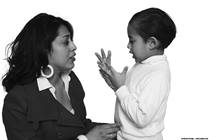
Article
Behavior Support: Catching Your Child Being Good
Using strategies to stop problem behaviors will set your child up for success.
Article
Dressing Change: Burns
Your child has been treated for a burn. The dressing (bandage) needs to be changed every day. This will help the burn heal faster and prevent infection.
Article
Complete Blood Count (CBC)
A complete blood count (CBC) test tells what and how many red blood cells, white blood cells and platelets are in the blood. CBC’s are done in a lab (laboratory) using an automated machine. A CBC can help evaluate overall health, diagnose a medical condition or know if a treatment is working.
Article
Getting Ready for Surgery Center for Colorectal and Pelvic Reconstruction (CCPR)
Learn more about what to expect when getting ready for surgery at the Center for Colorectal and Pelvic Reconstruction.
Article
Exercise for Fitness
Your body is like a machine. Exercise helps all the parts of your body work their best. You need to exercise regularly to stay healthy and fit.
Article
Elbow Immobilizers (Welcome Sleeves)
Elbow immobilizers, also known as welcome sleeves, are put on the arms of infants and young children following certain types of surgeries or procedures.
Article
Nasoalveolar Molding (NAM)
This Helping Hand™ explains how nasoalveolar molding (NAM) is used to treat cleft lips and cleft palates.
Article
Bone Marrow Transplant: Isolation Procedures
There are two types of bone marrow transplant isolation procedures: modified and strict.
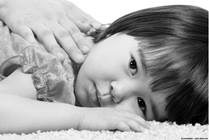
Article
Hypnosis
Hypnosis is a state of increased awareness. It happens when a person intensely focuses his or her attention.
Allergy to Latex
Latex is the milky sap from the rubber tree. It is used to make many rubber products that are used in the hospital and home. Signs of a latex allergy include skin rash or scaliness, itching, hives, swelling, watery or puffy eyes, sneezing, coughing, wheezing or difficulty breathing.
Article
Saliva Cortisol Test Collection Guidelines
A saliva cortisol test is done to measure the level of cortisol, a hormone in saliva. Cortisol is made by the adrenal gland, located on top of each kidney. Cortisol has many functions. It helps the body use sugar (glucose) and fat for energy (metabolism). It also helps the body manage stress. Many conditions can affect cortisol levels, such as physical or emotional stress, strenuous activity, infection or injury.
Article
ECMO (Extracorporeal Membrane Oxygenation)
Learn more about Extracorporeal Membrane Oxygenation.

Condition
Keratosis Pilaris
Keratosis pilaris is a dry skin type. It looks like dry, rough, small bumps that are flesh-colored or pink and can feel like sandpaper or chicken skin. It is not contagious and is usually not itchy. The most common areas for these bumps are on the back of the arms, front of the thighs and the face.
Article
Mouth Care for Patients Receiving Chemotherapy
Learn how to properly care for your child's mouth if they are receiving chemotherapy.

Article
Behavior Support: Preventative Strategies
Using strategies to stop problem behaviors will set your child up for success.

Blog
Hand-Foot-Mouth Disease: Causes, Symptoms and Treatment
Hand-Foot-Mouth Disease is a common childhood illness caused by a virus. Be aware of symptoms, treatment and prevention to help set your child on course for a speedy recovery.
Velopharyngeal Dysfunction (VPD)
This Helping Hand™ covers velopharyngeal dysfunction, or VPD, occurs when the soft palate cannot separate the back of the mouth from the nose during speech, swallowing, or both. VPD can be caused by structural differences in the soft palate and pharynx, or muscular causes.
Article
Circumcision Sutured
Properly care for you son after his sutured circumcision with this Helping Hand.
Article
Dental Injury: Post Treatment Instructions
When a child has a serious dental injury, it may take many weeks for the teeth and gums to heal before we know if they will have problems in the future. With prompt and proper follow-up care by a dentist, some problems, such as pain and infection, can be caught and treated early to prevent future problems.
Article
Bottle Feeding
Feeding your baby can be a happy time for you and your baby. If you feel calm and relaxed during the feeding, so will your baby. Newborn infants need to be fed every 2 to 4 hours. As your baby gets older, he or she will be able to go 4 to 6 hours between feedings.
Poison Ivy, Poison Oak and Poison Sumac: Treatment and Prevention
Poison Ivy, Poison Oak and Poison Sumac are plants that can cause a rash after contact with the sap of the plant.
Article
Auditory Brainstem Response (ABR) with Sedation or Anesthesia
This Helping Hand™ explains the process of an auditory brainstem response (ABR) with light sedation or anesthesia.
Article
Coping with Medicines
Children or teens may need medicine to manage their disease. Some medicines may have side effects, like unwanted changes in their mood or how they look.
Article
Epinephrine Auto-Injectors for Severe Allergic Reaction (Adrenaclick®, Auvi-Q®, EpiPen®, Symjepi®)
When and how to use an EpiPen if your child has a severe allergic reaction.
Article
Cystogram: Radiology
Learn more about a radiology cystogram, the test that shows the size of your child's bladder and how it is working.
Article
Creating a Purposeful Auditory Environment
By creating a purposeful auditory environment, you can protect and help your child’s brain development. Communication in babies comes from the sensory input they give and receive. These actions aid in communication and provide calming that may help children sleep.
Article
Chest Physiotherapy - Infants Newborn to 12 Months
Chest physiotherapy, also called postural drainage, is a way for you to help your child get rid of extra mucus in his or her lungs.
Article
Patient Hair Care
If your child is in the hospital for an extended period of time, it is important to help them care for their hair. Washing, conditioning and using moisturizer will help their hair stay healthy so it does not get too dry and break off.
Article
Resources for Patients
From preparing for the first visit to ongoing care, the Center for Colorectal and Pelvic Reconstruction offers helpful resources for patients.
Article
Well-Baby Visits: 12 Months
Welcome to the 12-month visit! Your baby is now 1 year old. Learn what to expect at this visit.
Article
Breast/Chest Care and Expressing Milk
There are times when a mother will need to express (remove) milk from her breasts to save for later use. When you need to be away for a few hours or if your baby cannot breastfeed while he or she is in the hospital, you can express milk from your breasts.
Article
Mixing Antibiotics at Home
This Helping Hand™ details steps for how to mix and properly store antibiotics at home.
Article
Social Security Disability Insurance (SSDI)
Social Security Disability is a government program that gives money to people who cannot work because of a medical issue that is expected to last at least one year or result in death.
Article
Nasal Turbinate Reduction
Prepare for your child's nasal turbinate reduction with this Helping Hand.
Article
Splenectomy
This Helping Hand™ talks about what a splenectomy is, why your child may need one, and how to care for a patient who has had one.
Condition
Upper Respiratory Infections (Colds)
The common cold is a respiratory infection caused by a virus (germ). Rhinoviruses are the most common cause. Viruses are spread by breathing in air droplets of the infected person who coughs, sneezes or even laughs less than 6 feet from your child. The virus can also be spread by touching something that the infected person has sneezed, coughed or drooled on.
Article
Bronchoscopy (Flexible Bronchoscopy and Bronchoalveolar Lavage)
What to expect and how to prepare for your child's flexible bronchoscopy and bronchoalveolar lavage .
Vaginal Discharge
This Helping Hand™ addresses vaginal discharge, a common and normal occurrence for women. Typically, normal vaginal discharge is thin, mucus-like, and can be clear, white, or slightly yellow. It usually has no unpleasant odor and does not cause itching or irritation.
Article
Anorectal Manometry
Anal manometry is a test to see how well the internal and external sphincters of the anus and the pelvic floor are working.
Article
Medicine: Proper Disposal
Dispose of various medications correctly with help from these instructions.
Article
Diapering Your Hospitalized Infant
You will need to start changing your baby’s diaper while he or she is in the hospital. It is important that you check with the nurse about any special instructions or precautions for diapering, especially if your baby has IV lines or tubes or is on any respiratory support.

Article
Behavior Support - Reducing Interruptions
Children often interrupt at times when parents are busy or are not paying attention to them. To cut down on interruptions, use short teaching sessions. They will help you and your child communicate better.
Retinopathy of Prematurity (ROP)
This Helping Hand™ is about retinopathy of prematurity (ROP). ROP is an eye problem that babies born early (premature) are at high risk for.
Article
Appendectomy: Simple Appendicitis
Learn more about a simple appendectomy, which is the surgical removal of the appendix.
Article
Echocardiogram With Sedation or Anesthesia
This Helping Hand™ is about why some children may need special medicine when getting an echocardiogram done. This test, also called an echo, is an ultrasound of the heart.
Article
Cystogram: Nuclear Medicine
Learn more about nuclear medicine cystogram, the test that shows the size of your child's bladder and how it is working.
Article
Exercise Stress Test
A stress test, sometimes called an exercise test, helps your doctor find out how well your body works when you are active. This test measures how well your heart, lungs and muscles function during physical activity.
Article
Developmental Milestones: 18 to 24 Months
Developmental milestones are skills or behaviors that most children will start or master by a certain age. Children reach milestones in many ways: speaking, learning, moving, and playing. There are things you can do with your child to help them reach these milestones.
Article
Hydrogen Breath Test
This Helping Hand™ is about how a hydrogen breath test is done and how to prepare for it.
Article
Fecal Fat Quantitative Test (72 Hour Collection)
How to prepare for a fecal fat quantitative test.
Article
Burns: Nutrition
Your child is being treated for a burn and needs good nutrition to help him or her heal. Your child’s body uses a lot of extra energy as it works to heal the skin. His daily nutrition is very important.
Leukemia
This Helping Hand™ covers leukemia, the most common form of childhood cancer. Leukemia is a cancer of the bone marrow, which is the tissue found inside many of the bones of the body. There are two main types of childhood leukemia: acute lymphocytic leukemia (ALL) and acute myeloid leukemia (AML).Article
Birth Control: Hormonal IUD
The hormonal intrauterine device (IUD) is a small, T-shaped plastic device with strings attached. The hormonal IUD works mainly by thickening the cervical mucus to keep the sperm from joining with an egg.

Condition
Subglottic Stenosis
Subglottic stenosis is a narrowing of the airway in the part of the voice box below the vocal cords (glottis). There are two kinds of subglottic stenosis: congenital subglottic stenosis and acquired subglottic stenosis.
Article
Hearing Assistive Technology
Hearing assistive technology (HAT), formerly called FM systems or assistive listening devices (ALDs), help people with hearing loss hear better.
Article
Medicine: How to Give by Mouth
Here are some suggestions and safety tips that may make giving medicine easier for both you and your child.
Article
Safe Handling of Hazardous Medicines
The risk of danger from handling small amounts of these hazardous medicines is small, but it is a good idea to avoid exposure if possible. Here are suggestions for things you can do at home to limit exposure.
Article
Warts: Liquid Nitrogen Treatment
What to expect if your child is having a liquid nitrogen treatment to remove a wart.
Article
Colonoscopy with General Anesthesia: Children (44 to 88 Pounds)
This Helping Hand™ is about how colonoscopies are done, how to prep for one, and what to expect for children.
Article
Colonoscopy with General Anesthesia: Teens and Adults (Over 88 Pounds)
This Helping Hand™ is about how colonoscopies are done, how to prep for one, and what to expect for teens and adults.
Article
Urology Biofeedback Therapy
Biofeedback helps your child understand how their body works. It teaches them how to control parts of their body they do not think about being able to control.
Article
Rapid Genome Sequencing
Your child’s doctor has recommended a genetic test called rapid genome sequencing (rGS). This test looks for changes in DNA that could cause or contribute to a medical condition. About Your Genetics Our bodies are made up of billions of building blocks called cells. Each cell contains DNA.
Article
Joint Injection
The joint injection procedure helps relieve pain in joints caused by arthritis.
Article
Kangaroo Care for Your Infant
Kangaroo care is a special way for you to hold your infant that gives the baby skin-to-skin contact.
Article
Urodynamics
Urodynamics is a series of tests that are done to see how well the urethra and bladder are working. This Helping Hand will teach you everything you need to know to prepare for your child's tests.
Article
Amblyopia
Amblyopia is also known as "lazy eye" or “lazy vision.” The vision in the amblyopic eye is weaker than the vision in the "good eye,” and cannot be corrected with glasses.
Article
Whole Body Cooling
In the NICU, your baby may get a special kind of care, called whole body cooling (also called therapeutic hypothermia). This treatment lowers body temperature so the body slows down and uses less energy.

Condition
Ganglion Cysts
A ganglion cyst is a fluid-filled lump under the skin, often over a joint or in a tendon in the hand or wrist. If the cyst appears on top of the wrist, it is called a dorsal wrist ganglion cyst. A cyst on the palm side of the wrist is a volar wrist ganglion cyst. These cysts are usually harmless.
Article
Breastfeeding/Chestfeeding
There are many rewards to breastfeeding. Breastfeeding helps to develop a close bond between you and your infant and provides your new baby with the best nutrition. Breast milk has nearly a perfect mix of vitamins, proteins and fat.
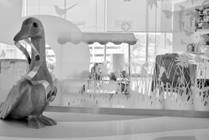
Condition
Hand, Foot and Mouth Disease
Hand, foot and mouth Disease (HFMD) is a common illness caused by a virus. Early symptoms of HFMD are much like a common cold. After a day or two, you might see small painful sores (ulcers) on the throat and tonsils and a rash of very small blisters or red spots on the hands, feet and diaper area.
Article
Surgery Centers Home Preparation Westerville and Main Campus
Prepare for your child's surgery with this Helping Hand
Article
Marijuana
Marijuana (also known as cannabis, weed, or pot) is the leaves, stems, seeds, and dried, crushed flowers of a cannabis plant. There are over 100 chemicals in the cannabis plant called cannabinoids. The most common cannabinoids are THC and CBD.
Article
Clean Catch Urine Collection
A clean catch urine specimen is collected to find out what kinds of germs (bacteria), if any, are in your child’s pee (urine). The test must be done properly for your child to get the right medical treatment.

Article
Helping Children Feel Safe in Stressful Times
Stress is a common part of every child’s life. Children worry about their appearance, about tests and school projects, being accepted by friends, being separated from family, as well as many other concerns.
Article
Tongue-Lip Adhesion
Tongue-Lip Adhesion (TLA) is a surgery done for infants with Pierre Robin sequence. TLA helps prevent the tongue from falling back into the baby’s throat. If the tongue falls back into the throat, it can block the airway and make it hard for the baby to breathe.

Article
Homework Help: Tips for Families
Helping your child with homework in a caring and planful way can increase engagement, avoid possible conflict and improve school success.
Roseola
Roseola (ROSE–ee-OH-lah) is a common childhood illness caused by a virus. It usually affects children age 6 months to 3 years but can occur in children somewhat younger or older.
Phalangeal Neck (Finger) Fracture
The hand is the most often injured body part in children. Finger fractures, especially phalangeal neck fractures, often happen because of a direct hit to a finger.
Article
Mepilex Ag Dressing
Mepilex® Ag is a soft spongey grey foam pad that has silver within it. The foam dressing (bandage) shields the wound and the silver helps to kill bacteria. This protects the wound from getting an infection.
Article
Birth Control: Emergency Contraception
This Helping Hand™ is about different forms of emergency contraception and when to use them. Your doctor or health care provider can help you choose the best one.
Article
MiraLAX, GlycoLax, or ClearLax
Polyethylene glycol (PEG) 3350 is a medicine that relieves constipation. It’s sold under brand names like MiraLAX®, GlycoLax®, and ClearLax®. It works with the water in your body to soften poop, so it’s easier to pass. It can take up to 24 hours for it to work.
Article
Pinworm Test Collection Guidelines
Pinworms are small white worms about ¼ - ½ inch long and look like a small grain of rice. These worms can live in a person’s large intestine. The adult female crawls out of the rectal opening at night and lays her eggs on the skin around it.

Article
Learning Problems
If you are worried about your child’s development, learning, attention, thinking or social skills, you are not alone. Many families struggle with these problems. Here are tips and resources to help your family find ways to assist your child.
Article
Medical Identification (ID)
A medical identification is a piece of jewelry that has a medical symbol and states a health condition. It can be a bracelet, necklace or sports band.
Article
Bone Marrow Aspiration Test
A bone marrow aspiration test is done to see if the blood cells are being made properly. A bone marrow biopsy may be done. In a biopsy, a small amount of tissue is taken to be looked at under a microscope.
Article
Hepatitis C and Your Baby
Hepatitis C is a virus that spreads by coming into contact with infected blood. It can spread through sharing needles, sexual contact, or from mother-to-child during pregnancy. If hepatitis C is not treated, it may lead to serious liver problems or liver cancer.
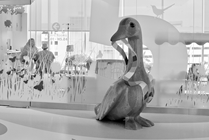
Condition
Apnea
In this Helping Hand™ document, we discuss apnea, which is a pause in breathing that lasts 20 seconds or longer for full-term infants. There are many reasons why a baby may have periods of apnea including brain immaturity, neurological issues, heart disease, gastrointestinal issues and others.
Article
Stop Smoking Programs
The following are a list of stop smoking programs (both in-person and online) in central Ohio recommended by Nationwide Children's Hospital.
Article
Burn Prevention: Preschool and School-Age
Burn injuries can be serious at any age. Preschoolers and school-age children are at greater risk of burn injuries because they’re curious and like to explore. If your child has been burned, apply cool water to the area for 20 minutes. Do not use ice or ice water on the burn.
Article
Peripheral Nerve Catheter and Pump for Pain Control (PNC) Inpatient
Prepare for your child's peripheral nerve catheter with this Helping Hand.
Article
Speech and Communication Evaluations for Babies with Hearing Loss
Babies begin communication as early as birth. This takes many forms before the actual use of words. Most babies learn non-verbal ways to make their wants and needs known.

Article
Sibling Rivalry
Sibling rivalry is competition or conflict between children being raised in the same family. It is a natural part of growing up that will impact how they learn to resolve problems.

Article
Hand Therapy
Our Hand Therapy program helps patients with injuries, strains, sprains, trauma or surgical procedures to their hands and arms return to optimal function, strength and range of motion.
Condition
Allergic Rhinitis
In this Helping Hand™ document, we discuss allergic rhinitis. There are two main types of allergic rhinitis: seasonal (occurs certain times of the year) and perennial (happens all year). When symptoms occur in late summer or early fall, some people call it hayfever. Small changes at home can help.
Article
Auditory Brainstem Response (ABR) Testing
The auditory brainstem response (ABR) is a test to see how well sound moves from the auditory nerve to the brain stem. It is used to check for hearing loss.
Article
Birth Control (Contraceptive) Options
Birth control is safe, easy to use, and has few side effects. Finding the right method for you can help you prevent pregnancy until you want to become pregnant.
Article
Tracheostomy: What It Is and When It Is Needed
Learn what a trachestomy is and what it is used for.
Article
Colonic Marker Study
Many children have problems with bowel movements. This test can provide useful information on how well stool moves through the colon.
Diaper Rash
Diaper rash (diaper dermatitis) is a red, sore rash that happens when urine and bowel movements irritate your baby's skin. The Helping Hand™ will teach you how to prevent and treat diaper rash.
Article
Nail Changes
Nails are hardened skin cells that protect and support the tissues in our fingers and toes.
Article
Choosing a Bottle Flow Rate
Your baby’s bottle flow rate is the rate at which human milk or infant formula moves from the bottle nipple into an infant’s mouth. The bottle flow rate is important because if it is too slow your baby may work too hard to get milk. If the flow rate is too fast, they may have a hard time with the faster flow.
Article
Earwax
Ear wax protects and moisturizes the skin of the ear canal. This will help to prevent dry, itchy ears. Ear wax contains special chemicals that help to fight infection in the ear canal.
Article
Antibiotic Resistance
Antibiotic resistance means that bacteria have changed and cannot be killed by the antibiotics. These bacteria are called drug-resistant bacteria. This means that some antibiotics may not work if your child needs them in the future.
Article
Ostomy Care: Ordering Supplies
Your child may need different ostomy supplies as he grows and gets older. Learn how to care for your child's ostomy and order supplies.
Article
Kidney Shields
Kidney shields are custom made to protect your child’s kidneys during sports and activities. They can be used for healthy kidneys or a new transplanted kidney.
Hyperhidrosis
Sweating (or perspiration) is a normal body function that helps to maintain body temperature and prevent overheating. An increased, unusual amount of sweating is called hyperhidrosis. The three types of hyperhidrosis are primary focal, generalized idiopathic and secondary generalized.
Article
Breast Milk for Your Hospitalized Infant: Electric Breast Pump
Mothers who need to express milk for many weeks or months while their babies are in the hospital will need to use a “hospital grade” electric breast pump. These pumps have a “closed system.”
Article
Safe Sleep Practices for Babies
Sleep related deaths are one of the leading causes of death for babies. These deaths used to be called Sudden Infant Death Syndrome (SIDS). Now they are called Sudden Unexplained Infant Deaths (SUIDs).
Article
Eye Socket Care
How to keep the eye socket clean after a conformer has been placed in your child's eye socket.
Article
24-Hour Holter Monitor
What to expect if your child is going to wear a Holter Monitor for a 24-hour test.
Article
Exercises: Left Torticollis Positioning for Play
Left torticollis (tor ti COLL iss) is a tightening of the muscles on the left side of the neck. It results in your child often bending his or her head to the left side and looking to the right side. Your child may not be able to easily turn his or her head to the left due to the muscle tightness.
Article
Bottle Feeding Formula Preparation
All infants under 1 year of age should receive breast milk or infant formula, not cow's milk. There are several ways to make formula. The method explained here is the "clean" method. Wash the bottles, nipples, caps and rings after you buy them and after each use.
Article
Child Passenger Safety: Car Seats and Booster Seats
Ohio law requires that a child ride in a car seat (and then a booster seat when he has outgrown the car seat) until he is 8 years old, unless the child is 4 feet 9 inches tall. The exceptions are children who are 4 feet 9 inches or taller before they are 8 years old.

Condition
Rhabdomyosarcoma
This Helping Hand™ explains Rhabdomyosarcoma (RMS) which is a soft-tissue cancer that can start in muscle cells from many different areas of the body.
Article
Bowel Cleanout
Your child is constipated and needs help to clean out the large amount of stool (poop) in the intestine.
Anorectal Malformation (ARM) or Imperforate Anus: Male
In this Helping Hand™ document, we discuss the symptoms and treatment of anorectal malformations (imperforate anus) in males. Different types of ARMs include perineal fistula, rectourethral fistula, cloaca and no fistula. Young boys may be at risk for urology, spine and sacrum problems.
Article
IV: PICC Line
The PICC line is a plastic tube that is inserted into a large vein to give intravenous therapy.
Article
Food Allergy and Parenting
Parenting a child with food allergies can be tough. You have watched your child’s food and surroundings from an early age. You have also worked hard to speak to others, such as family, friends, and your child’s school, about keeping them safe from their allergen(s).
Positional Plagiocephaly (Flattened Head)
Positional plagiocephaly is a flat area on the back or on one side of your baby’s head that does not go away on its own.
Article
Closed Reduction of a Fracture
This Helping Hand™ explains what to expect before, during, and after a closed reduction of a fracture procedure.
Article
How to Read a 'Drug Facts' Label
Every over-the-counter medicine you can buy at the store must include a ‘drug facts’ label. This label has information about what the medicine does and how to use it safely.
Article
Frame and Pin Site - Care at Home
External fixators (frames) are used to hold an arm or leg bone in place so it can heal after surgery for limb-lengthening or reconstruction.
Article
Secondhand Smoke
Secondhand smoke is what you breathe in when you are around a smoker. It is what the smoker breathes out and the smoke that comes from the burning end of a cigarette, cigar or pipe. It contains more than 4,000 chemicals. There is no safe level of exposure.
Article
Supplemental Security Income
SSI is a government program that gives money to people who have low income and few resources and who are aged 65 or older, blind or disabled.
Article
Sharps Containers at Home
A "sharp" is any medical device that could cut or stick a patient, caregiver, or anyone else. There are reasons that your child may have to use sharps while at home. It is very important to know how to throw away (dispose of) syringes, needles and any other sharp device in a safe way.
Article
Gonadotropin Stimulation Test (GnRH)
This Helping Hand™ is about the gonadotropin stimulation test. This test is done to check how well the pituitary gland is working in children that started puberty early or late.
Article
Dental: Teeth and Gum Care for Infants and Toddlers
How to practice teeth and gum care before your child's first tooth appears.

Article
At-Home Safety Guide for Self-Harm or Suicide
Your child has been in the hospital because he or she is at risk of self-harm or harming others. When your child leaves the hospital, there are some things you need to do for safety at home.
Article
Patient Safety in the Health Care Setting
We are committed to giving quality health care to your child and keeping them safe while here. Parents or legal guardians play a vital role in the effort by being actively involved and informed.
Article
Cleft Palate: Feeding Your Baby
Feeding a baby with a cleft of the palate may not be easy at first. Most babies with a cleft of the palate may not be able to breast feed. They are not able to create the suction needed to express the milk from the breast.
Article
Bone Marrow Transplant Acute Graft vs. Host Disease
Graft vs. Host disease (GVHD) often occurs after allogeneic bone marrow transplants (BMT). In GVHD, the donor’s bone marrow attacks the patient’s organs and tissues, making them less able to function well.
Article
Glucose Tolerance Test Collection Guidelines
Use this Helping Hand to prepare for your child's outpatient glucose tolerance test.

Condition
Hives
In this Helping Hand™ we will discuss the causes and treatment of hives, as well as how to prevent them and when to seek help from a doctor.

Article
Hospital Safety Guide for Self-Harm
Patients at risk of harming themselves or others are placed on safety precautions as soon as they enter the hospital. These safety rules remain in place throughout the child’s hospital stay.
Pavlik Harness
Does your child wear a pavlik harness? This Helping Hand can aid you in day to day activities with your child in a pavlik harness.

Condition
Pneumonia
Pneumonia is a lung infection that is usually caused by a virus or bacteria. This makes the air sacs in the lungs fill with fluid (phlegm or mucus). Walking pneumonia is a non-medical word that describes a mild case of bacterial pneumonia. Pneumonia caused by bacteria is treated with an antibiotic.
Article
Genome Sequencing
Your child’s doctor has recommended a genetic test called genome sequencing (GS). This test looks for changes in DNA that could cause or contribute to a medical condition. About Your Genetics Our bodies are made up of billions of building blocks called cells. Each cell contains DNA.
Tracheomalacia
In this Helping Hand™document, we discuss tracheomalacia, which is when the walls of a child’s windpipe (trachea) collapse. If the collapsed part of the windpipe goes past the area where it branches off into the two lungs, it is called bronchomalacia. This causes noisy or difficult breathing.
Article
Birth Control Nexplanon Implant
The Nexplanon® contraceptive implant is a thin, matchstick-sized, flexible rod inserted under the skin of your upper arm by your healthcare provider.
Article
Honda Center for Gait Analysis and Mobility Enhancement
An analysis of your child’s gait (the way a person walks) is done at the Honda Center for Gait Analysis & Mobility Enhancement (GAME Center). Video, motion markers, force plates, and muscle activity are all examined in this test.
Article
Abdominal Pain: Hospital Admission
Abdominal pain (belly pain) can happen for many reasons. Learn what to expect if your child is in the hospital for abdominal pain.
Article
Capsule Endoscopy (Pillcam™)
A capsule endoscopy allows your doctor to see the inside of the small intestine. Your child will swallow a large pill (capsule) with a camera in it. As it travels through their intestine, pictures are sent to a recorder they wear on a waist sensor belt.
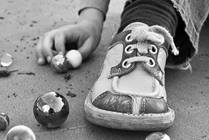
Condition
Conjunctivitis (Pink Eye)
Conjunctivitis, or pink eye, is an inflammation of the conjunctiva. The conjunctiva is a clear membrane that covers the white part of the eye and the inner part of the eyelids.

Article
Helping Children Cope During Visits to the Doctor
When a child needs to see the doctor or go to the hospital, parents often want to know how they can make the experience easier for their child.
Article
24 Hour Urine Specimen Collection Guidelines
Learn what to do if your doctor has ordered a 24 hour urine test.
Article
Posterior Pharyngeal Flap (PPF) Surgery
Posterior Pharyngeal Flap is a surgery done to help correct velopharyngeal dysfunction, or VPD.
Article
Mandibular Distraction Osteogenesis
Mandibular Distraction Osteogenesis (MDO) is a surgery done for infants with Pierre Robin sequence. MDO lengthens the jaw to help open the airway so the baby can breathe safely and comfortably on their own.
Article
Guided Growth Surgery
Guided growth, or hemi-epiphysiodesis, is a procedure that can be used to gradually correct angular deformities, such as "bowed legs" and "knock knees," in children’s bones. Guided growth slowly straightens the bone by tethering (guiding) the growth plate on one side of the bone.
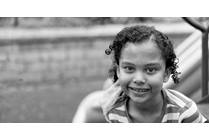
Condition
Tinea Pedis
This Helping Hand™ is about athlete's foot (tinea pedis) a common foot infection caused by a fungus.
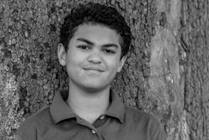
Condition
Gynecomastia
This Helping Hand™ is about gynecomastia and explains what it is, how it is treated and what the symptoms are.
Article
Hemophilia Joint and Muscle Bleeds – PRICE Home Care
In persons with hemophilia, joint and muscle bleeds can happen easily. When bleeds happen it is important to recognize them as soon as possible to get the right treatment and limit risk of long-term damage.
Article
Sunscreen and Sun Protection
Sunscreen and sun protection are very important for children and adolescents. Skin cancer is becoming more common in young people. Protecting your child’s skin from too much exposure to the sun can greatly reduce this risk.

Condition
Pinworms: Treatment and Prevention
Pinworms are small white worms that live in the large intestine. They are about 1/2 inch long and as thin as a thread. They can sometimes be seen in and around the child's bowel movements. The adult female pinworm lays her eggs on the skin around the anus. This causes itching and scratching.

Sever's Disease
Sever’s disease is a painful condition of the heel that occurs in growing children. It happens when the tendon that attaches to the back of the heel pulls on the growth plate of the bone of the heel.
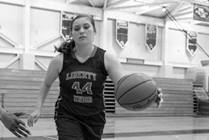
Condition
Scaphoid Fracture
The scaphoid is one of 8 carpal bones located in the wrist. A scaphoid fracture is a break of the scaphoid bone.
Article
Bone Density Scanning (DEXA DXA)
Prepare for your child's bone density scan with this Helping Hand.
Article
Ibuprofen (Motrin®, Advil®)
This Helping Hand™ includes dosing information, side effects, and how to take the common pain reliever ibuprofen (Motrin®, Advil®).
Article
Gallbladder Removal (Cholecystectomy)
The gallbladder is a small, pear-shaped organ on the right side of the belly (abdomen). Gallbladder problems can be caused by gallstones. The surgery to remove the gallbladder is called a cholecystectomy.
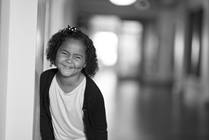
Condition
Graves' Disease
This Helping Hand™ explains the causes, signs and symptoms, and treatment for Graves' disease.
Article
Birth Control: Subcutaneous Shot
The birth control shot (Depo-SubQ Provera®) is given once every 13 weeks. The shot contains a small amount of progesterone, similar to the hormones that are naturally made in a woman’s body.
Article
How and Why to Thicken Liquids
This Helping Hand™ is about why your child may need thickened liquids, including protecting their airway.
Anorectal Malformation (ARM) or Imperforate Anus: Female
In this Helping Hand™ document, we discuss the symptoms and treatment of anorectal malformations (imperforate anus) in females. Different types of ARMs include perineal fistula, vestibular fistula, cloaca and no fistula. Young girls may be at risk for urology problems and gynecology problems.
Article
Burn Prevention: Infant and Toddler
Burns can be serious injuries at any age, but infants and toddlers are at risk for burn injuries because of their innocent curiosity. The most common causes of burns, as well as the steps you can take to prevent them from happening to your infant or toddler, are listed below.
Article
Check-ups for Teens in Out-of-Home Placement
Teens in foster or kinship care have unique needs. They are learning life skills like how to make decisions on their own. Teens also have many concerns about their health, relationships with friends, and privacy.
Article
Idiopathic Toe Walking
Idiopathic toe walking is when your child walks on the balls of their feet while their heels are off the ground and there is no known medical cause. Research has shown that physical therapy may not eliminate toe walking but can address the condition.
Article
IV (Intravenous) Therapy
IV or intravenous therapy is a way to give fluids, medicine, nutrition, or blood directly into the blood stream through a vein.
Article
Digital Blood Pressure Measurement
Blood pressure is the force of the blood against the wall of any blood vessel. The blood pressure measurement is written in numbers. The systolic blood pressure is the top number. The diastolic blood pressure is the bottom number.
Article
Tissue Expansion at Home - Instructions for Families
The purpose of tissue expansion is to grow new skin over a period of several weeks to months.
Article
Aspen® Cervical Collar
A cervical collar helps hold the neck in place. The neck area of the backbone is called the cervical spine. When there’s an injury to the cervical spine, the neck needs to be held in place so it can heal.
Article
Impedance pH Monitoring
Impedance pH Monitoring measures the length of time it takes for your child’s stomach contents (acid or non-acid) come back up into his or her esophagus.
Article
Birth Control: Contraceptive Patch
Learn about the birth control option for women, the contraceptive patch.
Article
Children With Hearing Loss: Guidelines for Schools
Some children are born with a hearing loss. Others may develop one due to injury, infection or even loud noises. Children with hearing loss can do well in school, but they often need extra help to learn at their full capacity.

Condition
Ovarian Neoplasm
This Helping Hand™ highlights ovarian neoplasm, which is an abnormal growth of cells in the ovary. It can be benign or malignant. Symptoms include abdominal bloating, weight loss, and fatigue. Treatment usually involves surgery and chemotherapy.
Pelvic Inflammatory Disease (PID)
Pelvic inflammatory disease (PID) is an infection in the uterus, the fallopian tubes or the ovaries.
Article
Water Soluble Fiber
Water soluble fiber is commonly used with CCPR medical regimens. This fiber will help maintain a good balance between stool frequency and consistency to help your child be continent.
Article
Biofeedback for Constipation and Pelvic Floor Dysfunction
Biofeedback is a therapy used to help children who cannot always have a bowel movement when they need to.
Sickle Cell Disease (SCD) and Acute Chest Syndrome (ACS)
Sickle cell disease is an inherited blood disorder. Acute chest syndrome is a group of symptoms that occurs when sickled cells clump together in the lungs.
Article
Gynecologic Laparoscopy
This Helping Hand™ is about the gynecologic laparoscopy procedure and why it's done.
Article
Iron Infusions
The most common cause of anemia is not having enough iron. If you have anemia and cannot take iron orally (by mouth), you can get iron through an IV infusion.
Article
Adrenocorticotropin (ACTH) Stimulation Test
An adrenocorticotropin (ACTH) stimulation test is done to check how well the adrenal glands are making a hormone called cortisol.
Article
Magnetic Resonance Imaging (MRI)
Magnetic Resonance Imaging (MRI) is a method of examining the inside of the body. The MRI machine is a large magnet that surrounds the body. It uses magnetic fields and radio frequencies instead of X-rays to produce images.
Article
Cecostomy Tube
A cecostomy tube is also called a C-tube. It is a non-latex tube or catheter placed in the first part of the large intestine, also called the cecum. A procedure called an irrigation is done to provide a comfortable, convenient way to clean out the bowel.
Article
Intrauterine Device Removal
An intrauterine device (IUD) is a small, T-shaped device placed in your uterus by your health care provider to prevent pregnancy, to reduce heavy menstrual bleeding or to help reduce painful menstrual cramps or pelvic pain. IUDs must be removed after you have had it in place for from 3 to 10 years.
Article
Continuous Renal Replacement Therapy (CRRT)
Continuous Renal Replacement Therapy (CRRT) is a 24-hour non-stop dialysis therapy used to support patients with renal (kidney) failure.
Article
Scoliosis: Wearing a Brace
Scoliosis means an unnatural curve in the spine. Different types of braces are worn to prevent curve changes. If the brace is worn as directed, surgery on the spine can sometimes be avoided.
Article
Multi-View Videofluoroscopic Speech Study (MVSS)
A multi-view videofluoroscopic speech study, or MVSS, is a procedure to see how the palate functions during speech. It is basically an x-ray movie taken while the child talks.
Article
Bone Health and Epilepsy
Children who take medicine for seizures due to epilepsy may be at higher risk for weak or breaking bones.
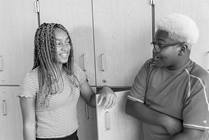
Article
Healthy Sleep Habits for Older Children and Teens
Sleep is important at all ages. Sleep problems are common among many children and teens and can affect their focus while at school, work or home. Almost one-fourth of all children have some type of sleep problem. The problem can be caused by poor sleep habits or a medical condition.
Deep Vein Thrombosis (DVT)
Deep Vein Thrombosis is a blood clot that has formed in a large blood vessel. It may completely or partially block the blood flow in that vein. Symptoms of DVT include pain, swelling and feeling warm. In most cases, a DVT will be treated with an anticoagulation medicine.
Article
Care Conferences for Families
Communication with members of the health care team is important when a family member is in the hospital. It can be hard to match schedules in the fast-paced hospital setting. Connecting with the many people on your child’s medical team can be a challenge.
Article
Prednisone and Prednisolone (Prelone®, Pediapred®, Deltasone®, Orapred®)
Prednisone and prednisolone are like hormones made by the body. The body may not make enough of its own hormones while your child takes prednisone or prednisolone. Never let your child stop taking prednisone or prednisolone or change the dose without first talking to your child’s doctor.
Scabies
Scabies is a skin condition caused by a mite.
Article
Resources for Professionals
Access helpful documents and resources for your practice and your patients.

Condition
Cerebral Palsy (CP)
Cerebral palsy is a group of disorders that affects muscle tone, coordination, and movement. There are many types and severities of CP.
Article
Acetaminophen (Tylenol®)
This Helping Hand™ includes dosing information, side effects, and how to take the common pain reliever acetaminophen (Tylenol®).
Article
Rabies Vaccine Treatment
This Helping Hand™ is about the treatment for rabies. Rabies is a serious disease mostly caused by wild animals. Here we'll go over what steps to take if you're bitten.
Article
Preparing the Skin Before Surgery
Bathing your child before surgery will help reduce the number of germs on their skin. Fewer germs on the skin means less chance of an infection after surgery.
Article
Uroflow and Electromyography Tests
These tests check how well the bladder and its muscles work. The results will help your child’s health care team create their care plan.
Article
Circulation Checks
Your child has received a treatment that can affect blood flow (circulation) in the injured arm or leg. You will need to check the circulation in your child’s fingers or toes.
Pulmonary Embolism
A pulmonary embolism is a blood clot that travels to the blood vessels in the lungs. You may hear a pulmonary embolism referred to as a “PE.”
Article
Can You Trust Health Information on the Web?
At Nationwide Children’s Hospital, we think it is important that you know how to find health information you can trust. This checklist can help you know what to look for and how to decide what information is valuable.
Impetigo
Impetigo is a common skin infection caused by bacteria.
Article
Cleft Lip Adhesion
Cleft lip adhesion is the first step in a two-step process to repair your baby's cleft lip. Prepare for the surgery with this Helping Hand.
Article
Dermabond® Incision Care
Your child has an incision that was closed with an adhesive film called Dermabond. The Dermabond will hold your child’s incision together at skin level. It will loosen from the skin and fall off in 5 to 10 days.
Article
Lead Poisoning Prevention
Lead poisoning is the harmful buildup of lead in the body. Children under 6 years old are at highest risk for lead poisoning.
Rotavirus
Rotavirus (ROE-tuh-vie-russ) is a contagious illness caused by a virus.
Article
Intranasal Midazolam (Versed®) - Vial
Midazolam is given through the nose and is absorbed quickly. This medicine is used for both cluster and prolonged seizures.
Failure to Thrive In Infants
Failure to Thrive (FTT) describes an infant or child who does not gain weight at the expected rate. The two kinds of FTT are organic and non-organic. Medical problems such as diarrhea or vomiting may be the cause of organic FTT.
Moles
Moles are areas of the skin where there are more cells called melanocytes. Melanocytes are the cells in the body that produce pigment, or color.
Article
Hymenectomy
A hymenectomy is a procedure that is done to remove extra tissue from the hymen that partly or totally covers a female’s vaginal opening.
Article
Cardiac Catheterization - Care at Home (Pediatric)
Your child has had a cardiac catheterization. Learn how to care for the cath site and when to call your cardiologist.
Article
Inhaled Corticosteroids for Asthma
Properly administer inhaled corticosteroids for asthma with this Helping Hand.
Factor V Leiden
In this Helping Hand™ document, we discuss Factor V Leiden, which is an inherited blood disorder. Doctors can find out if your child has Factor V Leiden by genetic testing.
Article
Circumcision: Newborn with a Plastibell
How to prepare for your newborn son's Circumcision with a plastibell.
Article
Well-Baby Visits: 4 Months and 6 Months
Learn what to expect at your baby's 4 and 6 month well visit appointments.
Mallet Finger
Mallet finger is an injury to the end of a finger. It happens when an object, like a ball, hits the tip of a finger and bends the joint down too fast and too far. The force of the hit can either tear the extensor tendon or break the bone.
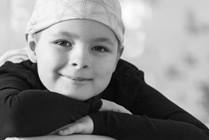
Condition
Lymphoma
Lymphoma is cancer which arises in the lymph system, the body’s circulatory network for filtering out impurities. There are two broad varieties, Hodgkin’s disease, and Non-Hodgkin’s lymphoma.
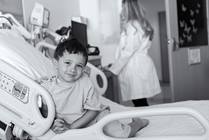
Article
Wilms' Tumor Treatment Options
The types of treatment used most often to treat childhood cancer are surgery, chemotherapy, radiation therapy, and bone marrow transplantation. The goal of treatment is to destroy the cancer cells. Learn more about treating Wilms' tumor.
Article
Hip Subluxation, Dislocation and Surveillance in Children with Cerebral Palsy (CP)
Children with cerebral palsy (CP) are at risk for hip subluxation and dislocation. Hip subluxation and dislocation occur when the hip joint is out of position.
Article
Bone Scan: Nuclear Medicine
A bone scan is a test that is done to look for problems in the bones. A tiny amount of radioactive material is injected into your child's vein and goes into the blood. After about 2 to 3 hours, it collects in the bones.
Article
Allergy Skin Testing
If your child is being seen for possible allergies, asthma, frequent infections or stuffy nose, allergy skin testing may be recommended. Testing can help find out what "allergen" causes the symptoms. It could be something breathed in, touched, or eaten.
Article
Microarray Analysis Test
The microarray analysis test is used to find out if your child has a medical condition caused by a missing or extra piece of chromosome material. This test is also known by several other names, such as chromosomal microarray, whole genome microarray, array comparative genomic hybridization or SNP microarray.
Article
Colonoscopy with General Anesthesia: Infants and Toddlers
This Helping Hand™ is about how colonoscopies are done, how to prep for one, and what to expect for infants and toddlers.
Lyme Disease
Lyme disease is spread to humans through the bite of infected ticks. Symptoms of Lyme disease include fever, swollen lymph nodes, headache, stiff neck, tiredness, swelling of large joints and red rash that often has a “bulls-eye” appearance.
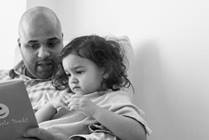
Condition
Food Allergy and Parenting
This Helping Hand™ offers advice on parenting a child with food allergies. You have watched your child’s food and surroundings from an early age. You have also worked hard to speak to others, such as family, friends, and your child’s school, about keeping them safe from their allergen(s).
Scaphoid Fractures
The wrist is made up of eight bones. The wrist bone below the base of the thumb is known as the scaphoid bone. A fracture (break) of this bone can happen when a person falls onto the outstretched hand.
Article
Burns: Split Thickness Skin Grafts
The S.T.S.G. is an operation that involves taking non-burned skin from one area of
your child's body and moving it to his or her burn site.
Article
Nasopharyngoscopic Evaluation of Velopharyngeal Closure During Speech
Nasopharyngoscopy is a test that involves viewing the back of the nose and throat. This test uses a small tube-light camera, called an endoscope, to view this area while the child speaks.
Article
Dental: Oral Sedation
Sedation can help your child feel less anxious, nervous or afraid, be more comfortable and stay still during the procedure.
Article
Well Baby Visits: Newborn, 1 Month and 2 Months
Congratulations on your new baby! Having a child is a large responsibility and can be a lot of work. At times it can seem overwhelming. Learn what to expect at your baby's newborn, 1 month and 2 month well visits.
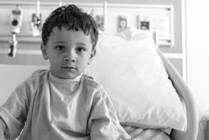
Condition
Bronchopulmonary Dysplasia
This Helping Hand™ covers bronchopulmonary dysplasia (BPD), which is a term used to describe long-term breathing problems for premature babies. It involves abnormal development of the lungs, and sometimes the lungs are scarred and inflamed.
Article
Intraventricular Hemorrhage (IVH)
Although a diagnosis of IVH is serious, it is possible for damaged areas of the brain to regain function later in life.
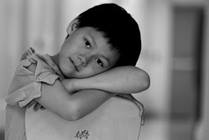
Condition
Pediatric Ptosis
Ptosis is an eye condition that involves drooping of the upper eyelid(s). The eyelid may droop just a little, or enough to cover the pupil. Ptosis can prevent normal visual development and cause amblyopia (lazy eye). It can also block part of the visual field.

Condition
Spleen Injury
This Helping Hand™ covers spleen injuries. Due to where the spleen is in the body and its size, it can get injured easily. Learn what to expect if your child has a spleen injury.

Condition
Perioral Dermatitis
In this Helping Hand™ document, we discuss perioral dermatitis, which is a common dry or bumpy rash that can occur around the mouth, the nose and the eyes. To treat the rash, it is important to stop using any topical steroids. Instead, your child’s doctor may prescribe topical or oral antibiotics.
Article
Bone Health in Cerebral Palsy
Children with cerebral palsy (CP) and limited weight bearing have a high risk of having fragile bones. This is because bones need activity like walking, running, and jumping to make them strong.
Seizures: Premature Infant
When electrical impulses are sudden, excessive, and out of control, a seizure can occur.

Condition
Clubfoot
In this Helping Hand™ document, we discuss clubfoot, a foot disorder in which the foot turns inward and downward at birth and remains in this position. In some cases, clubfoot can be corrected without surgery.
Article
Vaping
Vaping is breathing in (inhaling) the aerosol made by an e-cigarette (electronic cigarette). The aerosol is called vapor. This is why smoking an e-cigarette is called vaping. E-cigarettes can be filled with chemicals that are toxic to breathe in.
Article
Foreign Body Removal in Interventional Radiology
What to expect if your child is having a foreign object removed from under the skin with interventional radiology.
Article
Transtelephonic Monitor - Looping
A transtelephonic monitor is a 30-day looping event monitor. It records and captures irregular heartbeats that happen quickly and last less than a few seconds.
Article
Transtelephonic Monitor - Post Event
A Transtelephonic 30-day post event monitor records irregular heart beats that last a little longer than a few seconds. The recordings are then sent to a monitoring company over a land line telephone to be reviewed by your child’s doctor.
Article
Child Passenger Safety: Infant Car Seat Challenge
Your baby’s doctor has ordered a Car Seat Challenge. This is a test that gives the doctor valuable information about how well your baby might be able to handle sitting in his or her car seat for travel.
Ear Infections (Otitis Media)
Ear infections, also known as otitis media, occur when the middle ear is infected or inflamed. There are two main types of otitis media: acute otitis media with effusion (fluid in the middle ear space) and chronic otitis media with effusion.
Ringworm of the Scalp (Tinea Capitis)
Tinea capitis (TIN-ee-uh CAP-i-tis) is an infection of the scalp which is caused by a fungus. It is also called ringworm.
Article
Nighttime Bladder Emptying
Nighttime bladder emptying keeps bladder pressures low. This helps keep your child’s bladder safe and healthy while they sleep. A full bladder creates high pressure. This is dangerous to both the kidneys and bladder.
Article
Fiberoptic Endoscopic Evaluation of Swallowing (FEES)
A fiberoptic endoscopic evaluation of swallowing (FEES) is a test used to see if a child has dysphagia.
Article
Moving from Pediatric to Adult Care: Finding a Doctor
Take the big step in moving from Nationwide Children's Hospital to a provider that sees adults with this Helping Hand.
Article
Birth Control Pills
Combination oral contraceptive pills are a form of daily birth control that has the hormones estrogen and progestin.
Genital Warts (HPV Infection)
Genital warts are skin-colored, cauliflower-like, painless growths. They are caused by the Human Papilloma Virus (HPV). Genital warts are usually spread by sexual contact. During pregnancy or delivery, the HPV virus can be passed on to the baby from an infected mother.
Article
Sleep Study
Sleep studies are often ordered to find out if a child has problems breathing while asleep. Learn how the tests are done.

Condition
Pertussis (Whooping Cough)
In this Helping Hand™ document, we discuss pertussis, also known as whooping cough. Pertussis is an infection of the respiratory tract caused by bacteria. The bacteria are easily spread by breathing in droplets from an infected person who coughs or sneezes. Call 911 if your child stops breathing.
Article
Aspirin
This Helping Hand™ about aspirin explains what it's used for, how and when to take it, and how to stay safe taking it.
Article
Well-Baby Visits: 15 Months and 18 Months
Your child is one and a half years old! Your child is learning to become more independent, and will want to do things on his or her own.

Condition
Leukemia (ALL and AML)
Leukemia (ALL and AML) is the most common form of childhood cancer. It affects the tissues of the body which make the blood cells and the bone marrow. When leukemia strikes, the body makes an abundance of abnormal white cells that invade the marrow and crowd out the normal healthy blood cells.
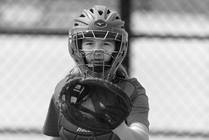
Condition
Sports Medicine: Low Back Strain/Sprain
The low back is a complex structure of bone and muscle that is supported by cartilage, tendons, ligaments, and fed by a network of blood vessels and nerves. Certain motions, such as bending, twisting or lifting, can sometimes lead to a low back strain or sprain.
Article
Cleft Lip Repair
Your baby's cleft lip has been repaired. There are a few things to know about his or her care at home.
Volar Plate Injuries
The volar plate is a thick ligament that connects two bones in the finger. A volar plate injury is commonly called a jammed finger or sprain. This happens when the finger is bent backward too far (hyperextended). These injuries can also lead to a fracture (break) called an avulsion fracture.
Article
Safe Storage
Lockboxes can be used to safely store dangerous items like guns (firearms) and medicines.
Article
Somatic Disease Germline Comparator Sequencing
You or your child will be having a genetic test called somatic disease/germline comparator sequencing. This test looks for changes in DNA that could cause or contribute to a medical condition.
Immune Thrombocytopenia (ITP)
Immune thrombocytopenia (ITP) happens when the body destroys its own platelets. Platelets are a kind of blood cell that help the blood to clot after a person gets cut or bruised. A child with ITP may have a platelet count of less than 1,000.
Article
Applying for WIC for Teen Moms
The Special Supplemental Nutrition Program for Women, Infants and Children (WIC) is a food program. Federal grant money for WIC helps low-income women and their babies.
Article
Developmental Milestones
Nationwide Children's Hospital provides a number of resources, including videos, to help you better understand your NICU baby's milestones and stay involved in his or her developmental care. Read and watch what to expect.

Condition
H. Pylori
H. pylori, also known as Helicobacter pylori, is a bacteria that infects the stomach. Although common, this infection rarely shows any signs or symptoms.

Condition
Anxiety and Worry
Anxiety is a normal emotion. It can cause feelings of fear, tension and worry. It can also cause physical changes in the body.
Article
Important Facts to Know when Taking Opioids
Learn how to keep your child safe when they are taking or around opioids.
Article
U-Bag Urine Collection Guidelines for Males and Females
Your child’s urine (pee) must be tested so we can plan the treatment for them. You will need to collect the urine specimen at home and bring it to a Nationwide Children’s Hospital Laboratory Service Center.
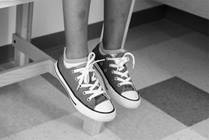
Condition
Herpes Simplex Virus
Herpes simplex virus (HSV) is a very contagious virus that causes infections. There are two types of HSV. One type (HSV-1) usually causes sores around the lips or inside the mouth that are sometimes called fever blisters or cold sores. The other type (HSV-2) usually causes sores on the genitals.

Condition
Alopecia Areata
This Helping Hand is about hair loss related to alopecia areata. It also discusses diagnosis and treatment.
Article
Sports Medicine: Hip Strain or Sprain
The hip joint is the anchor for many muscles in the body, such as those in the abdomen, buttocks, and legs. There are several hip muscles that allow the hip to bend (flex), straighten (extend), and turn.
Urinary Tract Infection: Prevention
This Helping Hand™ discusses how to prevent a urinary tract infection (UTI). I also includes special information for children born female.
News
New Study Finds Exercise Treadmills Significant Cause of Hand Burns in Children
In recent years, home exercise equipment has become increasingly common, and treadmills have continued to be the largest selling exercise category by a large margin.
Supracondylar Humerus Fracture
When your child’s humerus bone is fractured near the elbow area, just above the joint it is called a supracondylar humerus fracture.
News
MEDIA ADVISORY: DNA -- The Key Molecule of Life: Hands-On Workshop for the Public
WHAT: DNA -- The Key Molecule of Life: ‘Hands-On’ Workshop for the Public WHEN: Saturday, April 24, 2010 at 1:30 p.m. WHERE: Columbus Metropolitan Library 1st Floor Homework Help Center 96 S. Grant Ave.
Article
Medicine Safety - Chemotherapy
Many children need medicine from time to time to treat different illnesses or conditions. Some of these medicines are taken for a short time. Others may be taken for years. Here are some tips for the safe use of medicines.
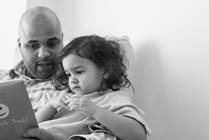
Condition
Wilms' Tumor
This Helping Hand™ covers Wilms' tumor, a cancerous tumor of the kidney. It is thought to be caused by abnormal genes. The tumor may occur at any age, but it is most common in children 1 to 5 years of age.
Article
Sphincter Pharyngoplasty Surgery
Sphincter pharyngoplasty is a surgery done to help correct velopharyngeal dysfunction, or VPD.
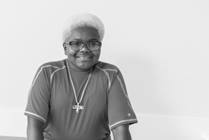
Condition
Zika Virus
This Helping Hand™ covers Zika, a disease caused by the Zika Virus. A person becomes infected by the bite of an infected Aedes mosquito or by having unprotected sex with an infected person. Symptoms can include fever, rash and joint pain.
Article
Spinal Fusion
Does your child have scoliosis? Learn more about a spinal fusion to correct the spine.
Article
Appendectomy: Complex Appendicitis
Learn more about a complex appendectomy, which is the surgical removal of the appendix.
Article
Prescription Medicines
To take care of your child’s health, you need to know how to fill prescriptions. Most prescriptions for medicines may be filled at a local pharmacy.
Article
Cleft Palate - Starting Foods and Cups
You can introduce foods to children with an unrepaired cleft palate at around 6 months of age, just as in children without a cleft. Learn about how to introduce food and drinks to your child.
Article
Growth Hormone Stimulation Test (Outpatient)
Prepare for your child's growth hormone stimulation test with this Helping Hand.
Condition
COVID-19 (Coronavirus Disease 2019)
COVID-19 is a serious strain of coronavirus, a large family of viruses that usually cause only mild respiratory diseases, that spreads and infects people easily. The virus that causes COVID-19 is being passed from person to person through droplets of fluid that are coughed or sneezed into the air.

Condition
Influenza
Influenza, also known as the flu, is an illness caused by a virus. A child who has the flu may have some or all of these symptoms: high fever, headache, dry cough, sore throat, runny or stuffy nose, muscle aches, tiredness, stomach pain and diarrhea. Antibiotic medicines will not help cure the flu.
Article
Oxygen Therapy at Home
The cells in our bodies need oxygen to live. Without enough oxygen, growth and development can slow down. This Helping Hand includes helpful information if your child is prescribed oxygen therapy at home.
Pediatric Trigger Thumb
Pediatric trigger thumb (PTT) is also called a flexion contracture of the IP joint. It is a condition that affects the movement of the thumb in children. In PTT, a tendon cannot slide back and forth through the ligament and the thumb gets stuck in a bent (flexed) position.
Article
Menstrual Period
Menstrual periods are when the lining of the uterus flakes off (sheds) and blood/menstrual fluid passes through the vagina. Periods start about 2 years after puberty starts. The average age is 12. However, it can start as early as 9 or as late as 14.
Article
Evaluation for Sepsis - Infant
Sepsis is a serious condition caused by the body’s reaction to infection. This evaluation is standard across the country for babies with these symptoms.
Article
Adenoid Removal (Adenoidectomy)
Adenoids are glands high in the throat behind the nose. Surgery to remove the adenoids is called an adenoidectomy. An adenoidectomy may be done if your child has trouble with breathing through the nose or for problems with frequent ear infections or sinus infections, among other reasons.
Article
Birth Control Non Hormonal IUD
The non-hormonal copper intrauterine device (IUD) is a small, T-shaped plastic device wrapped in copper with two strings attached. The copper IUD slowly releases copper into the uterus preventing sperm from fertilizing an egg. The copper IUD does not have any hormones.
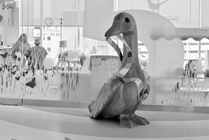
Condition
Gastroesophageal Reflux Disease (GERD) in Infants
In this Helping Hand™ document, we discuss Gastroesophageal Reflux Disease, also known as GERD, in infants. This document provides tips on feeding your child, medications, positioning and safe sleep to help you manage your infant's reflux. Call your child's doctor if they fail to gain weight.

Condition
Growth Plate Injuries
The physis, or growth plate, is an area of growing bone near the ends of long bones. Bones grow longer from the tissue produced by the physis and then harden.

Condition
Sports Medicine: Kyphosis and Lordosis
Kyphosis and lordosis refer to the natural curves of the spine in the mid-back and low back. Sometimes these curves can be larger than normal which can lead to pain.
Article
Newborn Screen Blood Test
The Newborn Screen Blood Test checks to see if your baby has certain disorders.
Article
Mealtime Success
Learning proper mealtime habits is very important and will benefit your child for the rest of his life.
Article
IV: Implanted Port
The implanted port is a device that is placed under the skin. It lessens the need to start an IV for every treatment.
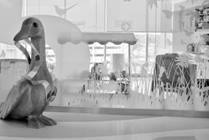
Condition
RSV Infection (Respiratory Syncytial Virus)
Respiratory syncytial virus (RSV) is most common from fall to spring. Symptoms of RSV include sneezing, stuffy or runny nose, sore throat and fever. For healthy babies, it is like getting a cold and can be treated at home. In some infants, RSV can be very serious and may require a hospital stay.

Condition
Polycystic Ovary Syndrome (PCOS)
This Helping Hand™ about polycystic ovary syndrome (PCOS) explains how cysts on the ovaries can affect hormone balance, periods, and more.

Condition
Warts
Warts are small, rough bumps that grow on the skin. They are caused by a virus and can spread from person to person. Learn how to prevent and treat them.

Condition
Hypothyroidism
This Helping Hand™ explains the cause, types, symptoms, diagnosis, and treatment for hypothyroidism.
Article
Patellar Tendonitis (Jumpers Knee)
Jumper’s knee, or patellar tendonitis, is a condition that causes pain in the tendon below the kneecap (patellar tendon). This is the tendon that attaches the thigh (quadriceps) muscles to the lower leg.
Article
Safety
Nationwide Children’s measures and trends several key metrics for both patient and staff events. Every event is assigned a team to investigate and learn to prevent future events.
Craniosynostosis
Craniosynostosis is a medical condition where one or more of the openings (known as sutures) between skull bones have closed too soon. This will affect the shape of the skull. It can also mean that over time brain growth may be restricted. This could result in increased pressure on the brain.
Staphylococcus - Scalded Skin Syndrome (SSSS)
Staphylococcus-Scalded Skin Syndrome is a skin infection caused by a bacteria called Staphylococcus aureus. This infection produces a toxin that can affect skin all over the body.
Article
Wrist Sprains
Most often wrist sprains are caused by a fall on an outstretched arm. The wrist is forced back into hyperextension, stretching or tearing the soft tissue in the area including the ligaments.
Article
Poison Prevention Resources
Access poison prevention materials and program resources for the general public and for community-based organizations.

Condition
Chylothorax
When lymphatic fluid (or lymph) collects around the chest wall and lungs, it can cause chest pain or make it hard to breathe. This condition is called chylothorax.
Respiratory Distress Syndrome: Newborn
Respiratory distress syndrome, also known as RDS, is caused by not having enough surfactant in the lungs. It is the most common lung disease in premature infants and it occurs because the baby’s lungs are not fully developed. Babies with RDS need extra oxygen and surfactant as well as medicine.

Condition
Sports Medicine: Degenerative Disc Disease
Degenerative disc disease is the slow breakdown of one or more intervertebral discs.
Article
Getting Supplies and Equipment
When your child needs special supplies, a lot of them, or equipment that is not at your pharmacy, a durable medical equipment (DME) company can fill the prescription.

Article
Gynecomastia Surgery
Gynecomastia surgery is usually a same-day procedure. This means you will come to the hospital the day of your surgery and then will go home the same day.
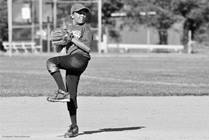
Blog
Using Video Analysis to Prevent Throwing Injuries
There are many parts to any athletic movement, and they all affect one another in a chain reaction. These are just a few of the common biomechanical issues we see and can correct. We use Video Analysis for numerous sports, including baseball, softball, volleyball, running and swimming. Athletic Trainers are experts in biomechanics and this tool helps us do even more for our young athletes.

Condition
Precocious (Early) Puberty in Children
This Helping Hand™ is about early puberty in children. Sometimes, puberty can start earlier and before signs show.
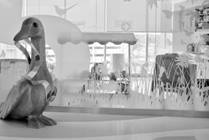
Condition
Respiratory Distress
This Helping Hand™ is about respiratory distress illnesses in children. These illnesses cause breathing problems. Call 911 or take your child to the closest emergency room if you think they're having trouble breathing.
Article
Medicine Safety - General
Many children need medicine to treat their illnesses or conditions. They may take some of these medicines for a short time, or for many years. Here are some tips for the safe use of medicines. How to Give Wash and dry your hands before and after using the medicine.
Article
Nasogastric Tubes (Insertion and Feeding)
Feeding tubes are often used for babies and young children who are not able to take in enough calories by mouth. If the tube is placed through the nose into the stomach, it is called a nasogastric tube (NG tube).
Article
Blood Transfusion
A transfusion of red blood cells carries oxygen to the tissues and can relieve symptoms of anemia.
Increased Intracranial Pressure
Increased intracranial pressure (ICP) means greater than normal pressure on the brain. It results from a greater volume of fluid or swelling of the brain. Call 911 if your child loses consciousness or has convulsions (seizures) lasting longer than 5 minutes.
Article
Temperature: Digital and Glass Thermometers
Learn how to use all three kinds of thermometers for your child.

Condition
Congenital Hypothyroidism
This Helping Hand™ is about congenital hypothyroidism, which is when a baby is born without enough thyroid hormone. Learn more about symptoms and treatment for congenital hypothyroidism here.

Condition
Pneumomediastinum
In this Helping Hand™, we discuss the causes and treatment pneumomediastinum, which is a condition that happens when air escapes from the lungs, airways, or esophagus into the mediastinum.
Article
Vitamin A and Eye Health
Your child needs vitamin A to be healthy. It plays a key role in their vision and how it develops. Vitamin A deficiency is when you don’t have enough vitamin A. This can lead to permanent blindness. However, vision loss from vitamin A deficiency can be reversed if treated quickly.
Article
Colonic Manometry
This Helping Hand™ covers colonic manometry, a test that records the pressure waves that are produced when the large intestines contract.

Blog
Mask Safety 101: Why You Shouldn’t Mask a Baby
As the coronavirus pandemic evolves, so do the recommendations. One of the most recent recommendations by the Centers for Disease Control and Prevention (CDC) is to wear “cloth face coverings in public settings where other social distancing measures are difficult to maintain.”
Article
Monitoring Blood Glucose
Be informed about diabetes. Read this chapter to learn how to properly monitor your blood glucose.

Condition
Acute Pancreatitis
This Helping Hand™ explains the signs, causes, and treatments for acute pancreatitis—a sudden inflammation of the pancreas—with expert guidance from the care team at Nationwide Children’s Hospital.
Article
Fine Needle Aspiration (FNA) Thyroid Biopsy
The doctor has seen or felt a nodule or bump on your child’s thyroid. The ultrasound confirmed the presence of a nodule. Now it is time to take some fluid from inside the nodule and get it tested.
Article
Patch Testing for Skin Allergies
Be prepared for your child's patch testing for skin allergies with this Helping Hand.
Article
Tracheostomy Care: How to Protect a Child With a Trach Tube
This Helping Hand™ is about how to keep your child safe when they have a tracheostomy (trach) tube.
HIV Infection/AIDS
HIV (human immunodeficiency virus) is a virus that causes a number of different health problems including AIDS (acquired immune deficiency syndrome). The HIV virus is passed from person to person through sexual contact, contact with blood from an infected person, or from mother to infant.
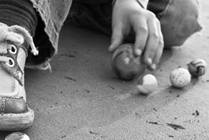
Article
Divorce and Children
More than a million children are affected by divorce each year. When parents divorce, it can be hard for children to get used to a new way of life. But parents can do many things to protect their children from the emotional harm divorce often brings.
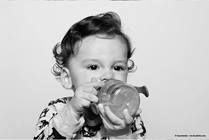
Blog
Thumb Surgery: How Hand Surgeons Can Build a Thumb
As a hand surgeon who works specifically on kid-specific hand and arm issues, I get the chance to build a more functional thumb that they can use for the rest of their lives.

Blog
It's World Mental Health Day: Help Stop the Stigma
A man stands in front of a group of people and asks, “Who here has mental health?” Only a handful raise their hands. “We all have mental health,” he says. More than 1 in 5 adults have experienced a mental disorder within the past year.
Genital Warts in Babies and Children
Genital warts are common skin-colored growths that are caused by the Human Papilloma Virus (HPV). In males, they can occur on the penis or around the rectum. In females, they can occur around the vagina or rectum. Treatment includes freezing with liquid nitrogen or applying topical medicine.
Frostbite
Frostbite is damage to the skin and underlying tissues caused by the cold. It occurs most often on small, exposed areas of the body such as the hands and fingers, feet and toes, and the ears, nose and cheeks.

Condition
Fifth Disease (Erythema Infectiosum)
Fifth disease is a mild illness caused by a virus. Symptoms include a blotchy rash that begins on the cheeks and spreads to the arms, legs and torso.

Blog
The Dangers of Secondhand Smoke
Every day, millions of children are exposed to secondhand smoke. Kids are also often exposed to “thirdhand” smoke, which comes from toxins that build up over time on surfaces exposed to smoke.
Ringworm of the Body (Tinea Corporis)
Ringworm, also known as tinea corporis) is a contagious infection of the skin caused by a fungus. The infection starts as a rash with tiny red pimples. The pimples slowly spread and form a round or oval ring. A single patch of ringworm can be treated with an over-the-counter antifungal cream.

Condition
Snapping Hip Syndrome
Snapping hip syndrome is a condition in which you may sense something catching or hear a popping sound or click in your hip when your hip joint moves. If you put your hand over the hip area, you might feel or even see the snap happen when walking, running, bending or getting up from a sitting position.
Article
Propranolol for Hemangiomas
Does your child have a Hemangioma? Learn more about how propranolol can be used to treat it.
Article
Vagus Nerve Stimulation (VNS)
The Vagus Nerve Stimulator treats epilepsy that is not controlled with medicine. The VNS prevents or lessens the frequency of seizures by sending mild electrical impulses through the vagus nerve to the brain.

Condition
Headaches in Children
Headaches are common in children and teens. There are many types of headaches. Each type has their own treatment.
Article
Antroduodenal Manometry
An antroduodenal manometry records the pressure waves that are produced in the stomach and small intestine.
Article
Hippotherapy
Hippotherapy gets its name from the Greek word ‘‘hippos,’’ meaning horse. Horses are used as a tool in physical, occupational, and speech therapy. How It Works The horse is a base that supports your child.
Article
Cardiac Catheterization: Care at Home (Adult)
You have had a cardiac catheterization. Learn how to care for the cath site.
Distal Radius Buckle (Torus) Fracture
A distal radius buckle (torus) fracture causes one side of the bone to bend but does not actually break through the bone. It is an incomplete fracture that normally heals within 1 month.
Article
Cast: Hip Spica
A hip spica cast keeps your child's pelvis and one or both legs from moving. This type of cast is used if a child has a broken bone in the thigh or has had hip surgery. The cast holds your child's leg(s) in the right position for healing. It is made of Fiberglas® casting tape. It will be put on in the operating room.
Abusive Head Trauma
Abusive head trauma (AHT), formerly called Shaken Baby Syndrome, is a form of child abuse.
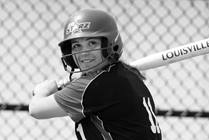
Condition
Sports Medicine: Herniated Disc
A herniated disc is a condition that affects the spine. A disc has a tough outside shell and jelly-like center. A herniated disc occurs when the jelly-like contents of the disc leak out.

Article
Bullying Information for Parents
Bullying is unwanted aggressive behavior by a person or group that targets another person or group. It involves an imbalance of power and is usually repeated over time. Bullying is not teasing.

Condition
Bone Marrow: Transplant Chronic Graft-Versus-Host-Disease
This Helping Hand™ explains how after someone has a bone marrow transplant, the donated bone marrow or stem cells can attack healthy tissue in a patient’s body.
Post-Thrombotic Syndrome (PTS)
Post-Thrombotic Syndrome or PTS can occur when there are changes in a blood vessel after a blood clot is formed.

Condition
Active Tuberculosis Disease
In this Helping Hand™, we discuss Tuberculosis (TB). Active TB disease is contagious. It is most often spread through the air. The standard of care for treatment of active TB is daily administration of medicines from health department nurses.
Article
Medicine Allergy Challenge
A medicine allergy challenge is a test used to find out if a child is allergic to certain drugs or medicines, often an antibiotic.

Condition
Gonorrhea
Gonorrhea is a sexually transmitted infection (STI) caused by the germ Neisseria gonorrhoeae. Anyone that is sexually active is at risk of getting gonorrhea. Those who have had more than one sexual partner are at higher risk of getting infected.
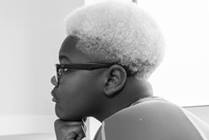
Condition
Irritable Bowel Syndrome
This Helping Hand™ covers irritable bowel syndrome (IBS) which is a common disorder that affects the large intestine (colon). Symptoms are caused by changes in how the GI tract works. IBS is a group of symptoms that occur together, not a disease.
Article
Labiaplasty
Labiaplasty is a surgery done to remove excess labial tissue. Too much of this tissue can cause pain or discomfort to a female because of rubbing or chafing.

Condition
Impaired Spleen Function
The spleen is an organ that helps prevent and control some infections. Asplenia is when you don’t have a spleen.
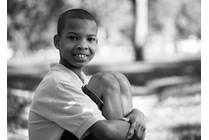
Condition
Psychogenic Non-Epileptic Events
This Helping Hand™ reviews what psychogenic non-epileptic events (PNEE) are, as well as signs, diagnosis, and treatment options.

Condition
Constipation: Infant
This Helping Hand™ covers constipation in infants less than one year of age. It is common, but it can be a concern for parents. Signs of constipation include infrequent stools that are difficult to pass and straining more than normal to have a bowel movement. Even if a baby is not constipated, bowel movements may be irregular.
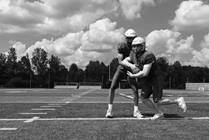
Anterior Cruciate Ligament Tear (ACL Tear)
In this Helping Hand™ document, we discuss injuries to the anterior cruciate ligament (ACL). The ACL is one of four main ligaments in the knee. Surgery to rebuild the ACL is called arthroscopic ACL reconstruction. It usually takes 6 to 9 months of recovery before returning to normal activities.
Article
Management and Treatment of Neuromuscular Scoliosis in Spina Bifida
The spine helps keep us upright when we are sitting and walking. When a person who has spina bifida also has scoliosis, or spinal asymmetry, the spine is not straight. It may be because of curvature or twisting of the spine, usually in an "S" or "C" shape. This can progress over time.

Condition
Intestinal Malrotation Surgery
In this Helping Hand™, we discuss malrotation of the intestines, which is when a baby’s intestines do not move or rotate into the right place.
Article
Ear Surgery: Care after Tympanoplasty and/or Mastoidectomy
Your child has had an ear operation, either a tympanoplasty or a mastoidectomy. There are a few things you should do for your child at home.

Condition
Mononucleosis (Infectious)
Infectious mononucleosis, also known as “mono” or "the kissing disease," is an illness usually caused by the Epstein-Barr virus (EBV). Some cases are caused by a virus called cytomegalovirus (CMV). The virus is contagious and spreads when someone comes in contact with an infected person’s saliva.

Blog
The Importance of Tummy Time
As a new parent, you’ve probably heard the term “tummy time” and been told it is an important part of your baby’s development.
Omphalocele
In normal development before birth, the intestines are formed in a sac around the umbilical cord, and then move into the baby's body. If the intestines stay in the sac (and do not move into the baby’s body) it is called an omphalocele.
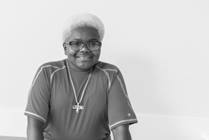
Condition
Nosebleeds
In this Helping Hand™, we discuss nosebleeds. Also known as epistaxis, nosebleeds occur when small and delicate blood vessels (capillaries) in the lining of the nose break and bleed. There are many things you can do to stop a nosebleed. If your child’s nosebleed does not stop, call your doctor.

Condition
Hemophilia Carrier
A hemophilia carrier is a female who has the gene that causes hemophilia A or hemophilia B deficiency.
Article
Feeding Nutrition & Growth
This section covers breastfeeding, pumping, oral stimulation and growth charts.

Condition
Sore Throat (Viral)
If your child has a sore throat with any of these symptoms, it is likely due to a virus.
Article
Cleft Palate Repair: Instructions After Surgery
Your child's cleft palate has been repaired, and the opening in the roof of the mouth has been closed. There are a few things to know about your child's care at home. Other than these special instructions, your child should be cared for in the same way as any child his or her age.

Condition
Sports Medicine: Cervical Strain and Sprain
A cervical strain or sprain is an injury to the muscles or ligaments in the back of the neck.

Condition
Eczema (Atopic Dermatitis)
This Helping Hand™ is about eczema in children, which is a skin problem that causes dry, itchy, rough skin rashes.
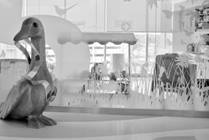
Condition
Meningitis
Meningitis is an infection of the meninges. These are the membranes that cover the brain and spinal cord.
Mosquito-Borne Diseases
Mosquito-borne diseases are spread to people and animals by the bite of an infected mosquito.
Sickle Cell Disease and Spleen Crisis
Sickle cells can block the blood vessels leading out of the spleen. When this happens, blood stays in the spleen instead of flowing through it. This causes the spleen to get bigger, and the blood counts to fall.
Article
Lead Poisoning: Chelation Therapy
Some children with severe lead poisoning may need a medicine to help remove lead from their blood. Using medicine to take lead out of the blood is called chelation.

Blog
The Winter Illness Toolbox Every Parent Needs
Even though we are three weeks away from the official start of Spring, right now those pesky winter childhood illnesses are very much around. A little advance preparation of an illness “toolbox” will help you to get through the onset of symptoms with a little less stress and a lot less
Pediatric Cataracts
A cataract is a clouding (whitening) of the lens of the eye, which is normally clear.
Headaches: Migraine
Migraine headaches occur when there are changes in some of the nerves and blood vessels and are common in children.

Blog
Acute Flaccid Myelitis: A New Treatment Option for AFM
Acute flaccid myelitis, or AFM, is a serious condition that affects the nervous system, causing weakness and paralysis in muscles. Thankfully, new treatments are being studied as doctors and scientists are learning more about AFM.
Article
Angiogram
Learn more about an angiogram, also called an arteriogram, which is a test that is done to study the size and shape of your child's blood vessels.
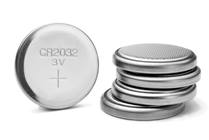
Blog
5 Hidden Household Hazards
As a parent of young children (5-year old triplets), I do my best to keep them safe, happy, and out of trouble. As an injury researcher, other parents often ask me what they should do to keep their children safe.
Article
Oral Glucose Suppression Test - Outpatient
An oral glucose suppression test is done to find out if the pituitary gland is releasing too much growth hormone (GH). The pituitary gland is a small gland (about the size of a pea) in the brain. It releases hormones into the bloodstream that affect growth.

Specialty
Occupational Therapy
Occupational Therapy focuses on facilitating development, enhancing function and maximizing independence in all daily life activities.
Turner Syndrome (Genetic Disorder)
Turner syndrome is a genetic disorder that affects people born female.
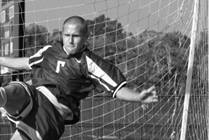
Condition
Sports Medicine: Adductor Muscle Strain
Adductors are a group of muscles that go from the pelvic bone down to the inner thigh and knee. An adductor strain is an injury to one of these muscles.
Osteosarcoma
Osteosarcoma is a cancer of the bone. It starts in immature bone cells that normally form new bone tissue.

Condition
Syphilis
Syphilis (SIF-i-lis) is a sexually transmitted infection (STI). Anyone who is sexually active has a chance of getting syphilis.

Condition
Sexually Transmitted Infections (STIs)
Sexually transmitted infections can be spread when a person is exposed to blood, skin, semen, vaginal fluids, or other bodily fluids that have a virus, bacteria, or parasite during sexual contact.
Article
Poisonings and Poison Prevention
What should you do if you think someone is poisoned? Do NOT make the poisoned person throw up! Call the Poison Center. Direct Phone Line: 1-800-222-1222.
Food Poisoning
When people eat tainted food, they can develop anything from a mild illness to a serious disease. Germs that cause food poisoning include Campylobacter, E-Coli, Salmonella and Shigella.
Article
Cleft Palate Repair: The Surgery
What to expect if your child is having surgery to repair his or her cleft lip.
Seizures: Focal (Partial)
Seizures occur when nerve cells in the brain send out sudden, excessive, uncontrolled electrical signals. The way the child acts during a focal seizure depends on the area of the brain that is affected. There are two types of partial seizures: simple partial seizures and complex partial seizures.
Article
Appendicostomy (Malone or MACE)
An appendicostomy, Malone or MACE, is a surgically created channel between the belly and the colon. This allows a flush, or enema, to be given at the beginning of the colon instead of at the end through the rectum. In the channel is a valve which is hidden inside the body and made of your child’s natural tissues. This one-way valve keeps stool and bodily fluids from coming out from the belly. When the channel has a tube inserted (catheterized), this valve is opened allowing the flush solution to flow directly into the colon.
Article
Feeding Your Baby Solid Food
Babies should be fed only breastmilk or formula until about 6 months of age. Solid foods can then be started when your baby is ready.
Gastroschisis
Gastroschisis is a defect in the abdominal wall. Part of the intestine is outside of the baby's body, rather than inside the abdomen.
Article
Safe Sleep Videos
English Listen to this video to learn about keeping your baby safe while he/she sleeps. Spanish Escuche éste video sobre cómo aprender a mantener seguro su bebé mientras duerme. Somali Dhagayso fiidiyowgan ku saabsan nabad gelyo u seexinta cunuggaaga marka isagu/iyadu hurdaan.

Condition
Primary Ovarian Insufficiency (POI)
Primary ovarian insufficiency (POI) is a condition in which a woman’s ovaries do not make enough follicles or the follicles do not function properly. Because of this, there are not enough hormones produced and women stop having menses (their “period”) before the age of 40.
Juvenile Xanthogranuloma (JXG)
A juvenile xanthogranuloma, or JXG, is a benign skin lump or bump caused by a collection of cells called histiocytes. These may be red, orange or tan at first, but over time may become more yellow in color.
Article
Dialysis
Learn more about dialysis, which is a procedure that is performed routinely on children who suffer from acute or chronic renal failure.
Mouth Sores (Viral) Herpes Gingivostomatitis
Mouth sores (or Gingivostomatitis) can be caused by viruses and other illnesses. Some mouth sores are caused by the herpes virus. It is not caused by sexual activity nor related to it. Mouth sores can last from 7 to 10 days. They should heal without leaving a scar.

Condition
Allergy to Mold
This Helping Hand™ covers mold, which is a fungus that can be found almost anywhere, both indoors and outside. Only a few types of mold cause an allergic reaction. Mold seeds (or spores) get into the air and are then breathed in.
Femoral Anteversion
Femoral anteversion is a condition where the femur (thigh) bone rotates inward. This rotation causes the knee and foot to point inward as well. It is known as intoeing or being “pigeon-toed”. Often parents first notice this intoeing when their child begins to walk. It becomes most noticeable around 4 to 6 years of age. Femoral anteversion may exist in one or both legs.
Ankle Sprain
An ankle sprain is a torn or stretched ligament in the ankle. Signs of an ankle injury include pain, swelling and tenderness in the ankle that may spread to the whole ankle and foot, and trouble walking.

Condition
Strep Throat (Bacterial)
Most sore throats are caused by viruses. Strep throat is a contagious sore throat that comes on suddenly and is caused by bacteria (germs) called streptococci, or strep for short. Antibiotic medicine must be given as soon as possible to prevent the strep germs from spreading in the body.

Condition
Sports Medicine: Anterior Tibialis Tendonitis
Anterior tibialis tendonitis is an injury of the anterior tibialis tendon in the front of the ankle where it meets the foot. The tendon is important in pulling the foot up (dorsiflexion), lifting the foot off the ground while running, and in turning the foot inward (inversion).
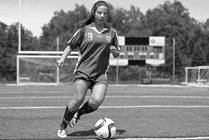
Condition
Sports Medicine: Deltoid Ligament Sprain
The deltoid ligament is a triangle-shaped ligament on the inner ankle which is stronger and more compact than the outer ligaments. Deltoid injuries are very rare and most happen with eversion or along with a high ankle sprain.

Condition
Amenorrhea
Amenorrhea is when a girl or woman does not have her period. Primary amenorrhea is when periods have not started by age 16. Hormone levels and anatomical problems can cause amenorrhea.
Pyogenic Granuloma
A pyogenic granuloma (pie uh JENN ik gran yuh LOH muh) or PG is a vascular (blood vessel) growth. It usually appears after an area of skin that has been injured.
Color Vision Defects
Color vision defects, also known as color blindness, occurs when someone is not able to see colors in a normal way.

Condition
Lichen Striatus
Lichen striatus is a rash that appears as pink or lightly-colored, scaly, flat bumps. Over time, these bumps come together to form a line or band on the skin.
Nevus Sebaceous
A nevus sebaceous is a type of birthmark that usually appears on the scalp. It may also appear on the face but this is less common. It is made of extra oil glands in the skin. It starts as a flat pink or orange plaque (slightly raised area). A nevus sebaceous does not go away on its own.

Condition
Tinea Versicolor
Tinea versicolor (TIN ee uh VUHR sih kuhl er) is a common rash caused by the overgrowth of microscopic yeast on the skin's surface. The rash looks like small, scaly spots.
Optic Gliomas
Childhood optic pathway glioma is a slow-growing brain tumor that forms along the optic nerve. Optic gliomas are the most common type of brain tumor in children under the age of 10.
Neonatal Abstinence Syndrome (NAS)
Neonatal Abstinence Syndrome (NAS) is a condition that starts at birth when an infant’s mother has used drugs (legal or illegal) or alcohol during her pregnancy.
Article
Cochlear Implant: Care After Surgery
A cochlear implant will be put in one or both of your child’s ears. The information below will help you care for your child after their implant surgery. What to Expect Cochlear implant surgery normally takes 1 to 2 hours for each ear. Your child will likely go home the same day.

Condition
Asthma
This Helping Hand™ covers asthma, which is a lung disease that can cause breathing problems. If your child has asthma, the airways in their lungs overreact to certain things, called triggers.
Article
Hormonal Intrauterine Device (IUD) Insertion
An intrauterine device (in tra U ter in de vice), or IUD, is a small T-shaped type of birth control.

Article
During Your Stay
You will have questions during your child's stay at Nationwide Children's Hospital. We are here to put your mind at ease and share what you need to know.

Condition
All About Surgeries and Procedures
To prepare for a surgery or procedure at Nationwide Children's Hospital, we would like to tell you what to expect before, during, and after surgery.
Article
Mehta Cast for Early Onset Scoliosis
Scoliosis is an abnormality of the spine. The goal for treatment of young children with scoliosis is to try to prevent the progression of the condition. Children less than 2 years old, and sometimes a bit older, may be placed into a mehta cast.
Article
Teenage Pregnancy: Labor and Delivery
Prepare for your daughters labor and delivery with this Helping Hand.
Strokes in Children
A stroke happens when the blood flow in or near the brain is suddenly blocked or cut off. It can cause permanent injury to the part of the brain that is not getting blood. Sometimes a stroke can lead to bleeding in the brain.
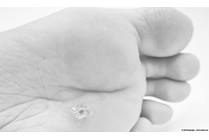
Blog
Warts: What They Are and How to Treat Them
Warts are non-cancerous skin growths caused by a virus and can vary in size and appearance. They are spread person-to-person through touch and typically appear on the hands and feet.
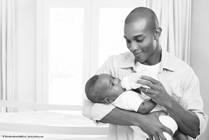
Blog
Baby Registry Series: Breastfeeding and Bottle-feeding
Breast or bottle, baby has to eat! Whichever you choose, you’ll want to put a few things on your wish list.
Condition
Eczema
Eczema is a chronic dry, itchy skin condition that often runs in families. Eczema is not contagious. Eczema often affects the insides of elbows, backs of knees, and the face.

Condition
Anterior Cruciate Ligament (ACL) Tear
An anterior cruciate ligament (ACL) tear is a sprain of one of the four major ligaments of the knee. The ACL is a rope-like structure that helps maintain the normal position of the femur (thigh bone) and the tibia (leg bone).
Article
Getting a Cochlear Implant
A cochlear (KOE-klee-er) implant is a device worn on the outside of the ear. It is for people with more severe hearing losses. It takes sounds from the environment, turns them into electrical signals, and sends them to the brain. Cochlear implants are different than hearing aids.
Kawasaki Disease
Kawasaki Disease is the most common cause of acquired heart disease in the United States and Japan. The disease can cause blood vessels to become inflamed or swollen throughout the body. It is more common in boys and in Asians and Asian-Americans.
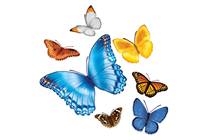
Hemangiomas
This Helping Hand™ explains different types of hemangiomas and how they're benign (noncancerous).
Trichomonas: Expedited Partner Therapy
If partner was diagnosed with trichomonas, a sexually transmitted infection (STI), you may also be infected and should be treated. This infection is serious but can be cured with antibiotics.

Condition
Chlamydia
Chlamydia is a sexually transmitted infection (STI) caused by the germ Chlamydia trachomatis. Anyone that is sexually active is at risk of getting chlamydia.

Blog
Distance Learning: Best Practices to Support Your Student
Since schools have been closed due to COVID-19, many parents have had to become more hands-on in their children’s daily learning than ever before. Supporting their students at home has been just as much of a learning process for these parents as it is for kids.
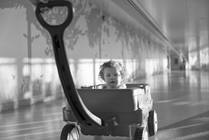
Condition
Rett Syndrome
Rett syndrome affects the way the brain develops. This rare condition causes children to lose language and motor skills starting around age 6 to 18 months.
Sports Medicine: Sever's Disease
Sever’s disease is a painful condition of the heel that occurs in growing children.

Condition
Thrush and Yeast Infections
Thrush is an infection caused by a fungus called candida. Thrush can affect a child's mouth or diaper area. Oral thrush begins as flat white spots and come together to form patches. These spots are often mistaken for "milk patches." Candida in the diaper area can cause a red rash with tiny blisters.
Gonorrhea: Expedited Partner Therapy (EPT)
Your partner was diagnosed with a sexually transmitted infection (STI) called gonorrhea. You may also be infected. This infection is serious but can be easily treated with antibiotics.

Condition
Psoriasis
Psoriasis (sore-EYE-uh-sis) is a common skin problem that looks like pink or red areas of skin topped with white or silvery scaly patches.
Sports Medicine: Posterior Tibialis Tendonitis
Posterior tibialis tendonitis is an injury of the posterior tibialis tendon in the back of the inner ankle.

Condition
Diarrhea
Diarrhea (loose, watery bowel movements) is a common problem in young children. It is usually caused by a virus. It can also be caused by bacteria, something that the child eats or drinks (like too much fruit juice) or starting a new medicine. It rarely means a child has a serious illness.

Condition
Femoral Anteversion
Femoral anteversion is an inward turn of the thigh bone, which can cause the knees and toes to point in.
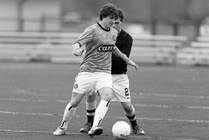
Condition
Sports Medicine: Ankle Dislocation or Subluxation
The ankle joint is made up of two lower leg bones and a foot bone. A dislocation is an injury to a joint causing the bones to no longer meet together correctly. In the ankle, this can occur when the talus no longer is in position with the tibia and fibula. A subluxation is a partial dislocation.
Crush Injuries of the Fingertip
Crush injuries of a fingertip or the tip of a toe are common in children. They can happen when a finger is slammed in a door, a finger or toe is stepped on, or if a heavy object falls on a nail with great force.

Condition
Allergy to Dust Mites
This Helping Hand™ covers allergy to dust mites. When a person who is sensitive to the dust mite breathes in these particles, they can cause sneezing, coughing, runny nose, congestion and itchy, watery eyes.
Rubella
Rubella, also known as German measles, is an illness caused by a virus.

Condition
Sports Medicine: Apophysitis of the 5th Metatarsal Iselin’s Disease
Iselin’s disease is pain and swelling of the growth plate (apophysis) of the 5th metatarsal.
Laryngomalacia (Laryngeal Stridor)
Laryngomalacia, also called laryngeal stridor, results from a weakness of parts of the voice box (larynx). The main symptom of laryngomalacia is noisy breathing when your child breathes in.
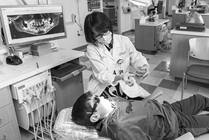
Specialty
Orthodontic Treatment Program
Facial differences can impact a child’s physical, social and emotional development. The Orthodontic Treatment Program offers a compassionate approach to comprehensive care, provided by experts who understand the dental development of children as they grow.

Condition
Turf Toe
Turf toe is an injury to the capsule and ligaments of the joint at the base of the big (first) toe. Pain is usually worst on the bottom of the foot.
Shingles
Shingles is an infection caused by the same virus that causes chickenpox.

Lichen Planus
Lichen planus is a common rash that appears on the skin as shiny, flat bumps. The bumps may be clustered together in patches or scattered far apart. These bumps can occur anywhere on the body but are most often found on the legs and wrists. They can be red or purple in color. The rash may be itchy.
Granuloma Annulare
Granuloma annulare is a raised, bumpy ring-like rash. This starts as a smooth bump on the skin and becomes a circular ring. Granuloma annulare is common, but no one knows what causes it. It is not infectious or contagious. Granuloma annulare is often mistaken for ringworm or bug bites.

Condition
Anemia: Iron Deficiency
This Helping Hand™ covers iron deficiency, which is a condition where the body lacks sufficient iron to produce hemoglobin, which can lead to anemia. Symptoms include fatigue, weakness, pale skin, and shortness of breath.
Shoulder Injuries
The shoulder is made up of three bones: the scapula (shoulder blade), the humerus (upper arm bone), and the clavicle (collarbone). The head (or top) of the humerus rests in a socket of the scapula called the glenoid. A soft rim of tissue called the labrum lines this socket.
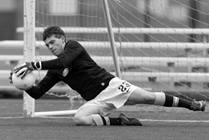
Condition
Chronic Ankle Instability
Chronic ankle instability happens when your ankle keeps giving way, especially after many sprains. This makes it hard to walk or play sports without your ankle feeling weak or wobbly. It can happen even when you’re just standing still.
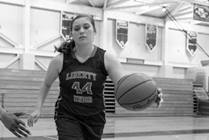
Condition
Sports Medicine: Anterior Ankle Impingement
Anterior ankle impingement is pain and pinching of bone, soft tissue or scar tissue at the front of the ankle. This can happen after a new or old injury.
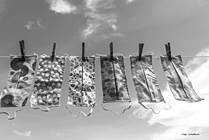
Blog
How to Care for Face Masks
Knowing how to take care of your face masks is vital in order to ensure they provide the best protection from COVID-19 and other germs and helps them last longer.
Henoch-Schonlein Purpura (HSP)
HSP results from inflammation of small blood vessels in the skin and other organs in the body.

Condition
Colic
This Helping Hand™ covers colic, which is when a healthy baby cries more than 3 hours a day for 3 or more days in a week. If this happens 3 weeks in a row, your baby may have colic.
Persistent Pulmonary Hypertension of the Newborn (PPHN)
In this Helping Hand™ document, we discuss persistent pulmonary hypertension of the newborn. PPHN is a life-threatening condition. Another term for high blood pressure is hypertension. In PPHN, blood is forced away from the lungs due to high blood pressure in the arteries that go to the lungs.

Condition
Bronchiolitis
This Helping Hand™ covers bronchiolitis, which is an infection of the small airways (bronchioles) caused by a virus. The most common viruses that cause it are RSV, para influenza virus, rhinovirus (common cold), human metapneumovirus and adenovirus. Bronchiolitis is also often called "RSV infection."
Seymour Fractures
Seymour (SEE moor) fractures are usually the result of a crush injury. This often happens during sports, such as when a ball hits the end of the finger. The joint nearest the end of the finger is hurt as well as the nail.
Intussusception (Outpatient)
Intussusception is a blockage of the intestines. It happens when one part of the intestine folds into another part. Signs of intussusception include pain in the abdomen (stomach) that comes and goes, or comes on suddenly. Many intussusceptions are fixed with an air enema but some require surgery.
Eye Injury Corneal Abrasion
The cornea is the clear part of the eye that covers the iris and pupil. A corneal abrasion is an injury caused by something scratching or rubbing the surface of the eye.
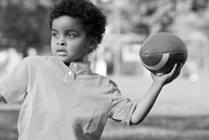
Condition
Vitamin D Deficiency
This Helping Hand™ covers vitamin D deficiency. Vitamin D keeps our bodies healthy and builds strong bones. It does this by helping the body absorb calcium and phosphorous from foods and supplements. If your child has a vitamin D deficiency it means they do not have enough vitamin D in their body.
Hirschsprung Disease (HD)
In Hirschsprung disease, the nerves in the colon, also known as the large intestine or bowel, that move stool forward did not form. Hirschsprung disease can affect a small part of the colon or the entire colon. In rare situations, it can move into the small intestine, as well.
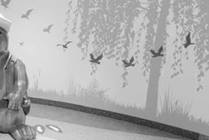
Condition
Croup
Croup is an illness that is usually caused by a virus. The tissues of the windpipe (trachea) and voice box (larynx) become swollen, which makes it harder for air to get into the lungs. Croup can cause a barky cough or hoarse voice. You may also hear a high-pitched squeaking sound called stridor.
MRSA Infection in the Community (Methicillin Resistant Staphylococcus Aureus)
Staphylococcus aureus often simply called "staph," are common bacteria. In the United States, staph germs are some of the most common causes of skin infections.
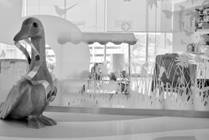
Condition
Ewing Sarcoma
This Helping Hand™ explains Ewing sarcoma which is a form of cancer that usually starts in the bone. The tumors, sometimes referred to as the Ewing Family of Tumors, include Ewing sarcoma, atypical Ewing sarcoma and peripheral primitive neuroectodermal (PNET) tumor of the bone.

Blog
Know Your Child's Developmental Timeline
A pediatric physical therapist can assess whether your child’s motor development is on track or if some extra help or home practice might be needed. Learn more about what many children achieve between the ages of one and six.

Condition
Acne
In this Helping Hand™, we discuss the causes and treatment of acne. Acne is a skin condition that occurs when hair follicles become plugged with oil and dead skin cells. It causes whiteheads, blackheads or pimples.
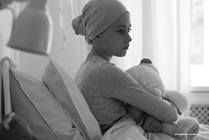
Blog
Safe Living After a Bone Marrow Transplant
Hematopoietic Cell Transplantation (HCT), more commonly known as bone marrow transplantation, is a procedure for used for some patients with cancer, immune deficiencies, or other genetic diseases.
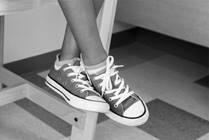
Condition
Folliculitis
Folliculitis is a common inflammation of the hair follicles, which are the openings in the skin where the hair grows. The rash appears as small red bumps or pus bumps that can itch or be mildly painful.
News
Columbus Childrens Hospital Staffs Full-Time Medical Dog In New Animal Assisted Therapy Program
Studies have shown that owning a dog can reduce stress and lower blood pressure. At Columbus Childrens Hospital, dogs are doing even more by assisting in rehabilitation therapy. Columbus Childrens is one of just a handful of hospitals throughout the nation to staff a full-time Facility Dog or M.D.
Hidradenitis Supperativa (HS)
Hidradenitis suppurativa (HS) is a long-term (chronic) skin condition. Plugged pores and red, tender bumps or boils begin deep in the skin around hair follicles that contain specific sweat glands called apocrine glands. The tender bumps often enlarge, break open and drain pus.
Nephrotic Syndrome
Nephrotic syndrome happens when protein passes from the kidneys into the urine through tiny filters in the kidneys. When this happens, there is too little protein in the blood.

Condition
Enuresis (Bedwetting)
Enuresis is the medical term for wetting the bed. It means a child urinates without meaning to. Treatment usually means helping a child to form habits that will allow him to control his need to urinate.

Condition
Eosinophilic Esophagitis (EoE)
Eosinophilic esophagitis is a condition in which large numbers of eosinophils, a white blood cell, build up inside the esophagus and cause inflammation.
Pyloric Stenosis
Pyloric stenosis is common in infants. It affects babies from birth to a few months of age. It is caused by the thickening of the muscle between the stomach and the small intestine.

Condition
Spontaneous Pneumothorax
This Helping Hand™ covers a spontaneous pneumothorax, which usually happens when a weak part of the lung is leaking air. These areas are like blisters on the lungs, called blebs. They can burst and leak air into the pleural space.
Ovarian Cyst
An ovarian cyst s a fluid filled sac in or on the surface of an ovary. It often forms during or after ovulation.
Latent Tuberculosis Infection (LTBI)
Tuberculosis, or TB, is the common name for a germ called Mycobacterium tuberculosis. People with latent TB infection (LTBI) do not feel sick. They do not have any symptoms but can potentially develop active TB disease. People with LTBI are not contagious and cannot spread TB to others.
Toddler's Fracture
A toddler’s fracture is a common fracture in the tibia bone (large bone in the lower leg) of children usually younger than 6 years old. It is most common in children in the early years of walking.
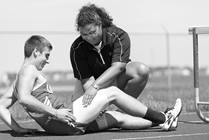
Condition
Sports Medicine: High Ankle Sprain
A high ankle sprain is the stretching and/or tearing of the ligaments that connect the shin bones just above the ankle. High ankle sprains are less common than other ankle sprains and typically more severe.
Seizures: Infantile Spasms
Infantile spasms are seizures that often cause a delay in development. This means that your child may not have the same skills or behave the way other infants do at the same age. It is important to start treatment as soon as possible.
Seizures - Generalized
Seizures occur when nerve cells in the brain send out sudden, excessive, uncontrolled electrical signals. Generalized seizures occur when nerve cells in both sides of the brain are involved at the same time
Slipped Capital Femoral Epiphysis (SCFE)
Slipped Capital Femoral Epiphysis is a hip injury that involves the growth plate (physis) of the thigh (femur) bone. This injury occurs when the neck of the femur (metaphysis) moves in relation to the ball on the top part of the femur (epiphysis).
Article
Safe Sleep Practices
Sleep-related deaths are the leading cause of infant death between 1 month and 1 year of age. In Ohio, more than three infant deaths each week are sleep-related. Many of these deaths are preventable.
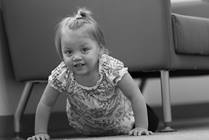
Patent Ductus Arteriosus (PDA)
The ductus arteriosus is a blood vessel that is formed during fetal growth to provide blood flow between two of the major arteries in the baby’s body while in the womb.
Hemophilia
Hemophilia is an inherited blood disorder. In hemophilia, a blood clotting factor is missing. In Hemophilia A, Factor VIII (8) is missing. In Hemophilia B, Factor IX (9) is missing. Without these factors, blood will not clot well. People with hemophilia are born with the disorder. It is not contagious.
Bartholin's Cyst
A Bartholin’s cyst is a pocket of fluid that forms in the tissue surrounding the vaginal opening. Bartholin glands create fluid that lubricates the vagina.
Hyphema
Hyphema is a collection of blood inside the front of the eye. The blood may cover all or part of the iris (the colored part of the eye) and the pupil (the black circle of the eye). It usually heals without problems but can cause loss of vision if it is not properly managed.
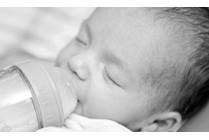
Blog
Bringing Your Baby Home
Bringing home a new baby for the first time can be a scary experience. Whether it’s your first, second or even fifth child, you are adding a new tiny little life into your home; a tiny person who is entirely dependent upon you to meet all of their wants and needs.
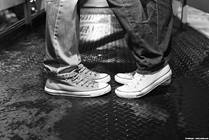
Condition
Human Papillomavirus (HPV)
Human papillomavirus (HPV) is the most common sexually transmitted infection (STI). Anyone who is sexually active is at risk of getting HPV.

Condition
Avulsion Fracture of the Iliac Crest
Avulsion fractures occur when a small piece of bone is separated from the main bone due to the pull of the muscle and tendon attached to it.

Condition
Asthma and Reactive Airway Disease (RAD) (Wheezing)
This Helping Hand™ covers asthma, which is a disease of the lungs in which the airways are sensitive to things in the air. During a flare-up the airways swell and fill with mucus. The muscles around the airways also tighten and squeeze. This can cause noisy breathing or wheezing.

Condition
Allergy to Stinging Insects
In this Helping Hand™ document, we discuss local and systemic reactions to stinging insects. The most common stinging insects found in the Ohio area are honeybees, wasps, yellow jackets and hornets. Doctors often prescribe an automatic injector device such as an EpiPen® to treat severe reactions.
Developmental Dysplasia of the Hip
Developmental Dysplasia of the Hip (DDH) is a term that includes several types of hip disorders that occur at different ages. DDH may be present at birth or may develop over time.

Condition
Constipation: Child Over One Year of Age
This Helping Hand™ covers how constipation is a common problem in children, but it can be a cause for concern for parents. A constipated child has difficulty moving their bowels, does not have bowel movements often enough, or has hard or dry stool (poop).
Article
Alveolar Bone Grafting Surgery
Alveolar bone grafting (ABG) surgery is usually done on children born with a cleft in the alveolus (the ridge of bone that holds the teeth). Grafting replaces the missing bone in the alveolus. This gives enough support for the permanent (adult) teeth, to close any remaining gaps, and to improve the support of the base of the nose.
Pseudotumor Cerebri (PCT)
Pseudotumor cerebri (PTC) is also known as idiopathic intracranial hypertension (IIH). It is a disease that causes increased pressure in the brain.
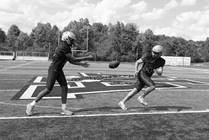
Condition
Sports Hernia
A sports hernia is a soft tissue injury in the groin area. It often occurs during sports that require repeated kicking or quick change of direction.
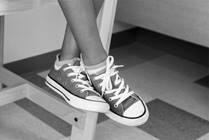
Condition
Stress Fracture
A fracture is a broken bone. A stress fracture is a complete or incomplete break in a bone. It is caused by repetitive activity.
Sports Medicine: Salter-Harris Fracture-Type I of Distal Fibula
A Salter-Harris type 1 fracture is the mildest type of fracture that can occur to a growth plate.

Blog
Pulmonary Embolism in Adolescents: What Parents Need to Know
Pulmonary embolism (PE) is a condition in which one or more of the arteries in the lungs becomes blocked by a blood clot. It is important to recognize PE early because a large blood clot in the lungs can cause damage to the heart and in very rare cases PE can be a fatal condition in pediatric patients.
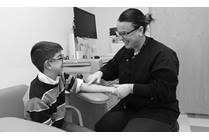
Blog
What to Expect When Your Child Needs a Blood Draw
While not many people want to have their blood drawn, there are a few things that parents and caregivers can do to help prepare a child for the process.
Article
Oral Stimulation
Oral stim is positive touch to the mouth and face. The purpose of oral stim is to improve bottle and breastfeeding outcomes for your premature infant.
Slipped Capital Femoral Epiphysis (SCFE)
Slipped Capital Femoral Epiphysis (SCFE) is a hip disorder that involves the epiphysis (eh PIFF I siss). This is the growing portion or ball on the top part of the femur (thigh bone).
Article
Sleep Difficulties
Getting a good night’s sleep is important for our mental and physical health. There are many things that can disrupt your child’s good sleeping habits. The most common are: School – Once children start school, they may have a hard time sleeping.
Article
Moving from Pediatric to Adult Care: Prescription Medicines, Supplies and Equipment
To take care of your own health, you need to know how to fill prescriptions. Most prescriptions for medicines can be filled at a local pharmacy. You may also get them from a mail order pharmacy if your insurance allows. Your prescription insurance will use one specific mail order pharmacy.

Condition
Gastroesophageal Reflux
Gastroesophageal reflux, also known as chalasia or spitting up, is so common that it should be considered normal for babies. In infants, the sphincter that keeps food in the stomach is not as strong, so some formula or food can come back up. Reflux can cause heartburn which may make the baby fussy.

Condition
Adnexal Cysts
Adnexal cysts are fluid-filled structures that can develop in the fallopian tubes and ovaries. They are usually caused by hormonal stimulation or bleeding at the time of ovulation.
Resources For Providers
Access resources for referring providers' patients and practices.

Blog
Early Motor Milestones: What to Expect in Your Child 6-12 Months
The other day we discussed early motor milestones for babies from birth to six months. Here are some guidelines for what to look for in your older baby. Six months: By six months, your baby should be able to sit up for brief periods of time without support from you.
Lateral Malleolus Avulsion Fractures
Avulsion fractures are breaks or splits in the bone.
Meniscus Tear
The meniscus is a C-shaped structure in the knee that acts as a shock absorber between the thigh bone (femur) and the shin bone (tibia). The meniscus can tear due to a blow to the knee, twisting, pivoting, kneeling, squatting or fast change in running direction.
Retinoblastoma
Retinoblastoma is a cancer of the retina. This type of cancer is usually found in children younger than 3 years of age.
Article
Food Allergy: Oral Food Challenge
An oral food challenge is the single best test used to find out if a child is allergic to a specific food. It is dose-graded. This means the child is given small amounts (doses) of the food in question to eat and then watched for signs of an allergic reaction.
Hodgkin Lymphoma
Hodgkins Lymphoma (also known as Hodgkin’s Disease) is a form of cancer of the lymphatic system. The lymphatic system is a part of the circulatory system. It plays a main role in fighting infection. It is made up of hundreds of lymph nodes.
Non-Hodgkin Lymphoma
Non-Hodgkin's lymphoma (NHL) is a malignant (cancerous) tumor that starts in the lymphatic tissue in the body. There are 2 major forms of NHL: lymphoblastic and non-lymphoblastic lymphoma.
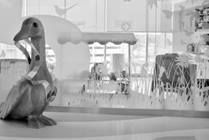
Condition
Measles
Measles, also known as rubeola, is an infection caused by a virus. It is very contagious. It can be very serious in young children, adults over 20, pregnant women and people with a weakened immune system.
Pregnancy: Issues and Answers
Access basic information about what you may be feeling, your choices, and what you can expect from prenatal care.
Article
Kidney Transplant Infection and Rejection
Learn what your immune system does and how you can help protect yourself against a rejection episode after a kidney transplant.
Syncope in Children
Syncope is the medical word that means fainting. Some people faint often. Most children who faint do not have heart problems or brain problems.

Specialty
Cleft Lip and Palate Center
Our center cares for children with cleft lip and palate from a nationally recognized team including experts from plastic surgery, oral and maxillofacial surgery, orthodontics, otolaryngology (ENT), speech-language pathology, nursing, dentistry, social work, audiology, genetics and psychology.
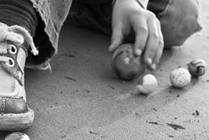
Condition
Meniscus Tears
Meniscus tears are common injuries. The meniscus is the rubbery cartilage disc between the tibia and femur. It acts as a shock absorber in the joint. The meniscus helps provide stability in the knee.

Condition
Fever
In this Helping Hand™, we discuss fever, which is an increase in the body’s temperature above the normal range. Most doctors agree that a temperature over 101° F is a fever. Fevers lower than 101° F don't need to be treated unless your child is uncomfortable or has a history of febrile seizures.
Necrotizing Enterocolitis (NEC)
Necrotizing enterocolitis (NEC) is a disease of the bowel (intestine) of newborn infants.

Condition
Lateral Collateral Ligament Sprain
The lateral collateral ligament (LCL) is one of the 4 major ligaments of the knee. An injury to the LCL alone is not common and often occurs with knee injuries.
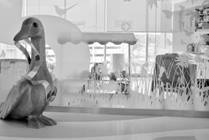
Condition
Cradle Cap
Seborrheic dermatitis, also known as cradle cap, is very common in infants and children. It appears as scaly, itchy, white, yellow or red patches. It most often appears on the scalp but can also be found on the face, ears, or in body folds such as under the arms and behind the knees.
Mumps
Mumps is an illness caused by a virus. The virus is spread through saliva, so you can catch mumps from being around someone who already has it.

Condition
Ovarian Masses and Tumors
Ovaries can become enlarged due to cysts, masses or neoplasms. The vast majority of ovarian neoplasms in girls and young women are not cancerous. Most ovarian cysts do not cause significant symptoms and resolve spontaneously.

Blog
Limiting Your Child's Screen Time
Raise your hand if you’ve ever seen a family of four out to dinner, table silent, each person looking down, scrolling through content on a handheld screen. Now raise your hand if you’ve ever been a member of that family. Yeah… me too… and I’m not exactly proud of it.

Condition
Enlarged Adenoid
The adenoid is a structure located at the junction of the nose and throat (nasopharynx) that functions in the immune system. Adenoids sometimes become enlarged during childhood and the increased size may cause problems.
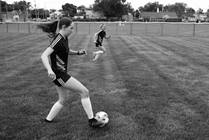
Condition
Elbow Dislocation
The elbow joint is made up of three bones. An elbow dislocation is an injury to the elbow joint that causes the humerus and ulna to be moved from their normal spot, so they no longer fit together.
Otitis Externa (Swimmer's Ear)
Swimmer’s ear, also called otitis externa, is an infection of the skin in the outer ear canal. It is called “swimmer’s ear” because it often occurs when water stays in the ear canal and it is usually caused by bacteria or fungus found in swimming pools, lakes and rivers.
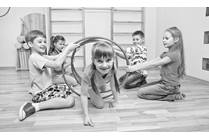
Blog
Indoor Activities for Kids When the Weather Gets Cold
As a developmental Physical Therapist, one of my jobs is to help kids become and remain active. But as a parent, I know the struggles of keeping kids active, especially during the upcoming cold, wet season.
Article
Asthma Triggers
Many things can start an asthma flare-up. They are called triggers. Know your asthma triggers and avoid them.

Condition
Voiding Dysfunction
If a child over the age of 4 has difficulties holding their urine (urinary incontinence) and physicians are unable to identify an anatomical or neurological cause, they may diagnose the child with voiding dysfunction.

Blog
Why Crawling is Important for Your Baby
Crawling provides many great experiences for your child and helps develop and strengthen other areas. If you haven’t noticed your child beginning to creep or crawl by nine months, it may be time to follow up with your pediatrician or a physical therapist.

Condition
Vertigo
Vertigo is the medical word for the feeling of spinning. Your child may feel like the world is moving, but there is no movement. These feelings come and go.
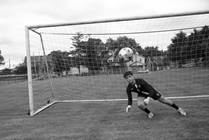
Condition
Biceps Tendonitis and Tenosynovitis (Distal)
Distal biceps tendonitis is pain at the front of the elbow and upper arm caused by inflammation (swelling) of the biceps tendon. Tenosynovitis is inflammation of the tendon sheath that surrounds the biceps tendon.
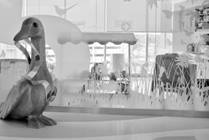
Condition
Congenital Lung Lesions
Congenital lung lesions are a group of conditions where part of the lung has an abnormal growth or mass. Congenital pulmonary airway malformation (CPAM), bronchopulmonary sequestration and congenital lobar emphysema are the most common types of congenital lung lesions.

Condition
Vomiting
Vomiting (throwing up) is most often caused by a virus or stomach bug. Some serious illnesses may also cause vomiting. Vomiting caused by a virus usually lasts only a couple of days. It can often be treated at home.

Condition
Turner Syndrome
Turner Syndrome is a rare genetic disorder that affects females. It is caused by a partial or complete loss of an X chromosome.
News
RSV, COVID-19, Colds and Influenza: What parents need to know this respiratory season
Respiratory viral season is here. Because of common and overlapping symptoms, distinguishing between respiratory illnesses can be confusing for parents and caregivers. Questions about vaccination and the latest guidance about what to do to help prevent spread of respiratory viruses add another layer to the confusion.

Condition
Back Sciatica
The sciatic nerve is the longest nerve in the body. Sciatica is caused by increased pressure placed on the sciatic nerve, most commonly from a herniated disk.
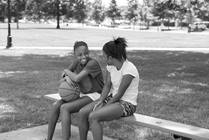
Condition
Lateral Epicondylitis (Tennis Elbow)
Lateral epicondylitis, or tennis elbow, is an injury to the outer side of the elbow where the muscles and tendons attach to the bone. The muscles or tendons of the forearm that pull your wrist back (extend the wrist) get damaged.
For Current Residents and Fellows
Access resources for residents, fellows and postdoctoral/advanced training professionals.

Blog
Norovirus: What You Need to Know
Norovirus is a very contagious virus. You can get Norovirus from an infected person, contaminated food or water, or by touching contaminated surfaces. The virus causes the stomach or intestines (or both) to get inflamed. This leads to stomach pain, nausea, diarrhea and vomiting.

Condition
Hashimoto's Thyroiditis
This Helping Hand™ explains the causes, signs and symptoms, and treatment for Hashimoto’s Thyroiditis.

Condition
Head Lice
Head lice are tiny, six-legged insects that spend their entire life on human heads. Nits are the eggs of the lice. Nits look like bits of dandruff in the hair but do not flake off when touched. Lice are usually spread from child to child when sharing clothing, combs or brushes.
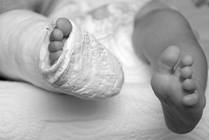
Article
Cast and Splint Care
Your child needs a cast or splint. The cast or splint keeps the injured area from moving while it heals. Movement can cause pain, delay healing or make the injury worse. Some casts are waterproof. Your doctor will tell you the type that has been put on your child.

Sleep Terrors and Sleepwalking
Sleep terrors and sleepwalking are related disorders of sleep that usually go away by the teen years. Sleep terrors are not the same as nightmares. Nightmares are bad dreams the child often clearly remembers the next day.
Intussusception (Inpatient)
Intussusception is a blockage of the intestines. It happens when one part of the intestine folds into another part. Signs of intussusception include pain in the abdomen (stomach) that comes and goes, or comes on suddenly. Many intussusceptions are fixed with an air enema but some require surgery.

Condition
Diabetes Ketoacidosis (DKA)
Diabetic ketoacidosis, also known as DKA, is a serious complication of diabetes. When cells do not have glucose to use for energy, the body starts to use fat for energy. Acids called ketones are made when fat is used for energy. If untreated, this leads to DKA and life-threatening problems.

Blog
Nail Biting Prevention and Habit Reversal Tips: How to Get Your Child to Stop
Nail-biting is a common and frustrating habit for many children, teens and parents. But, there is good news: more than 75 percent of teens who bite their nails will stop by age 35.
Sports Medicine: Osgood Schlatter Disease
Osgood-Schlatter disease is an inflammation (swelling) of the growth plate of the leg just below the knee at the tibial tubercle (the bump below the kneecap).

Specialty
Movement Disorders Clinic
Pediatric movement disorders are complex. They require specialized care as children's bodies and brains develop. Nationwide Children's has one of the few pediatric movement disorders clinics in the U.S. and is staffed with a specially trained pediatric movement disorders neurologist.

Blog
Breastfeeding in the NICU: How to Solve a Unique Challenge
Note: We use the term “breastfeeding” to encompass all forms of lactation, including direct breastfeeding, chestfeeding, and providing expressed human milk in a bottle.
Supraventricular Tachycardia
Supraventricular tachycardia, also called SVT, is a very fast heart rhythm that does not follow the regular pathway from the atria to the ventricles.
Osteochondritis Dissecans (OCD)
Osteochondritis Dissecans (OCD) is a condition that develops in the joints, most often in children and adolescents. OCD lesions can develop when the area of bone beneath the cartilage is injured. In children, they are most often found in the knee and elbow. They may also be found in the talus bone in the ankle.
Febrile Seizures
In some children, fever of 100.4˚ F or higher can bring on a seizure or a convulsion called febrile seizures. febrile seizures usually do not last long and do not cause brain damage, learning disabilities or epilepsy.

Condition
Head Injury - Concussion
This Helping Hand™ covers what a concussion is, as well as what to look for and do if you think your child has a concussion.

Condition
Pulmonary Arterial Hypertension (PAH)
Pulmonary hypertension is a rare lung disease in which the blood pressure in the pulmonary arteries are high.

Article
Hitting Harms, Hugging Helps
Hospital visits can feel stressful. Here are tips to help when you or your child are running out of patience. When patience wears out, please remember hitting harms, hugging helps.

Condition
Pilonidal Disease
This Helping Hand™ is about pilonidal disease, which is a common skin condition that happens between the buttocks.
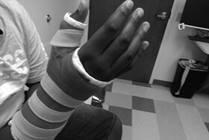
Blog
Broken Fingers: Why They Need Special Treatment and Care
Find out why a finger fracture is unique, tips for adjusting and why your child always needs care for a swollen, injured finger.

Condition
Enlarged Lymph Nodes
Hundreds of these lymph nodes are present in your child’s neck and face. When an infection is present, lymph nodes can become enlarged as an immune response is mounted.
News
New Study Finds Battery-Related Injuries in Children More than Doubled in Recent Decade
Pediatric battery-related emergency department (ED) visits have increased considerably in the last decade, particularly among children 5 years old and under, according to a new study published today in Pediatrics by a team of researchers from Safe Kids Worldwide and Nationwide Children’s Hospital.

Condition
Von Willebrand Disease
Von Willebrand Disease is caused by low amounts or structural abnormalities in a protein called Von Willebrand Factor. This results in prolonged clotting and easy bleeding and bruising.

Condition
Bacterial Vaginosis (BV)
Bacterial vaginosis or BV is an infection of the vagina. BV is not a sexually transmitted disease. It is an overgrowth of specific anaerobic bacteria (bacteria that do not need oxygen to grow) in the vagina. Women with BV report a fishy-smelling discharge (fluid) that is white to gray in color.
Article
Resources for Families
From hearing loss information and early intervention to modes of communication and equipment troubleshooting, our Audiology team compiled a list of resources to support you and your family.

Article
Stair Safety
While the number of stair-related injuries did show a declining trend, these types of injuries continue to be a common source of injury among young children.

Condition
Tenosynovial Giant Cell Tumors
There are three kinds of tenosynovial giant cell tumors (TGCTs). One type grows in the tissue that lines the joints (synovium). The second kind grows in the area that cushions the joints and tendons (bursa). The third type grows in the lining around the tendons (tendon sheath).

41st Annual School Health Conference
Save the team for the 41st Annual School Health Conference: Featuring Hands-On School Nursing Skills hosted by Nationwide Children’s Hospital, a leading pediatric care facility and research institute. This year’s conference will highlight dynamic speakers on topics such as childhood grief, situational awareness, diabetes and asthma education, and much more.

Specialty
Physical Therapy
Physical Therapy refers to the treatment methods used to develop or restore movement, promote healing and function and educate children and their families.

Condition
Attention Deficit Hyperactivity Disorder (ADHD)
Attention Deficit Hyperactivity Disorder (ADHD) is a condition characterized by inattention, impulsiveness and hyperactivity. Symptoms are usually noticed by the time a child starts school. Treatment of ADHD may include family or individual counseling. Medicines may also be prescribed.
Achilles Tendonitis
Achilles tendonitis is an injury of the Achilles tendon (back of ankle). This tendon, sometimes called the ‘heel cord’, attaches the calf muscle to the heel. It is important for standing on your toes or for push-off during walking, running or jumping.

Condition
Pelvic Masses
Pelvic masses may be caused by adnexal cysts, ovarian masses and tumors and uterine abnormalities. The most common reason the uterus would become enlarged in a girl or young woman is due to build-up of menstrual blood, also known as an outflow tract obstruction.
Article
Collection Procedures
Information shall serve as a guide for collection and referral of patient specimens to our lab. We ask our clients to adhere to these policies to ensure specimen integrity.
Article
Infant, Maternity, and New Parent Resource Guide
Learn about what agencies in the Columbus area can help you with things you need to care for your baby.
Article
Cleft Palate Repair
Your baby's cleft lip has been repaired. There are a few things to know about his or her care at home. Other than these special instructions, take care of your baby like any other baby the same age.

Condition
Unicameral Bone Cyst
Although unicameral bone cysts are benign, active unicameral bone cysts can cause bones to weaken or fracture.
Seizure Care
Activity in the brain is controlled by electrical impulses. If these electrical signals are not sent in the right order or at the proper rate, seizures can occur.
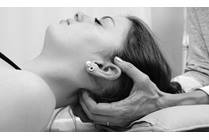
Blog
Migraine and Tension Headaches: Using Massage to Ease the Pain
Raise your hand if you enjoy having a headache. Silly, right? Nobody likes the pain, frustration, and lost time a headache can bring. Yet many of us suffer from them, including your children. The National Headache Foundation reports that 1 in 5 US children ages 5-17 are prone to headaches.

Blog
The Top 10 Blog Posts of 2018
No New Year’s celebration would be complete without reflecting upon the past year. The 700 Children’s Blog is no exception! Each December, we review our top posts of the year, then wrap them up and put them in one easy-to-click package.
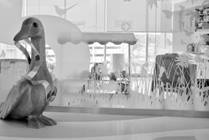
Condition
Duodenal Atresia
Duodenal atresia is a congenital condition where the duodenum is narrowed or blocked. The duodenum is the first part of the small bowel (intestine). This blockage keeps liquids and food from passing through the stomach into the rest of the intestine. The cause of duodenal atresia is not known.

Condition
Elevated Liver Enzymes
Elevated (too high) levels of liver enzymes are a warning sign that something might be harming the liver. Two of these enzymes are alanine aminotransferase (ALT) and aspartate aminotransferase (AST). Symptoms of elevated liver enzymes may include jaundice and swelling of the abdomen, arms or legs.
Article
Contrast Enema
A contrast enema is a radiology test that helps to visualize the inside of the colon. Contrast enemas are often used to help determine the extent of the problem and plan for treatment. They can give a sense of how slow or fast the colon is moving.
Pediatric Glaucoma
Glaucoma is a group of diseases that cause damage to the optic nerve. It occurs when eye pressure is too high. It is a serious vision-threating disease. Children who have glaucoma need to be closely monitored because glaucoma is usually a lifelong problem.
Metatarsal Stress Fracture
A metatarsal stress fracture is a break in the foot which involves one or more of the long foot bones (metatarsals). It is caused by intense exercise or repeat pressure on the foot.
Sports Medicine: Patellofemoral Pain Syndrome (PFS)
Patellofemoral Pain Syndrome is pain in the knee due to increased pressure between the kneecap and the thigh bone. Usually a result of poor alignment or sudden growth spurts, this pain may also come from an injury to the knee.

Condition
Velopharyngeal Dysfunction (VPD)
Velopharyngeal dysfunction (VPD) is the inadequate separation of the oral and nasal cavities during speech and/or swallowing. At Nationwide Children’s Hospital, our experts in the Velopharyngeal Dysfunction Program provide specialized treatment for patients with speech disorders resulting from VPD.
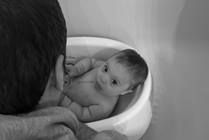
Blog
New Parent Confessions: Bathtime Safety
Most baby products and safety guidelines are created for children of average size and development. What’s a parent to do if their baby is very small or very large for their age, or meeting developmental milestones at a different rate than their peers?
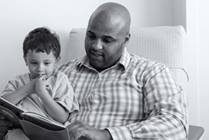
Condition
Autoimmune Hepatitis
Autoimmune hepatitis happens when something goes wrong with the body’s immune system. In autoimmune hepatitis, the immune system attacks normal liver cells. This causes damage that makes it hard for the liver to work properly.
Article
COVID-19 Updates
We offer several services to support efforts against the novel coronavirus causing COVID-19, including a Patient Information and Testing Hotline, a Provider Information Line and a drive-up testing site.

Condition
Gonadal Dysgenesis
Gonadal dysgenesis, also known as 46XY gonadal dysgenesis and Swyer syndrome, is a condition in which the ovaries or testes (gonads) did not form the right way during pregnancy. Treatment may include surgery or hormone therapy.

How School-Based Health Care Helps Children
Health systems and school districts throughout Ohio have partnered on “school-based health care,” an effort to bring medical and other wellness services into schools for children who might not otherwise receive them.

Blog
Can Your Baby Learn Sign Language?
Baby sign language is a way to communicate with your baby effectively and you can begin introducing signs as early as infancy. The following are suggestions to make signing and communicating with your baby successful.
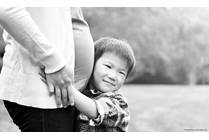
Blog
Birth Spacing: Plan for Health and Safety
Planning for when to have a second, third or even sixth baby can be important to the health of both the birthing person and the new baby. Ideal pregnancy spacing is more than 18 months and less than 5 years.

Blog
Pregnancy, Breastfeeding and the Common Cold
The common cold does not feel so common if you are pregnant or breastfeeding. We often get calls from patients of the Teen and Pregnant Program (TaP) regarding which medications are safe to take for cold symptoms.
Femoroacetabular Impingement
Femoroacetabular impingement (FAI) is a condition where extra bone grows on the bone(s) within the hip joint.
Juvenile Fibromyalgia Syndrome
Juvenile Fibromyalgia Syndrome is a chronic pain condition characterized by widespread musculoskeletal pain. The symptoms begin in childhood or adolescence. JFS can run in families.
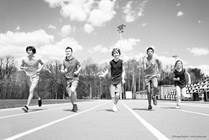
Blog
The Importance of Proper Running Form for Young Athletes
Much like teaching a young golfer the proper swing technique, young runners should be guided to develop good running form from the start. Doing so not only keeps their joints healthy, but it also improves their overall performance.
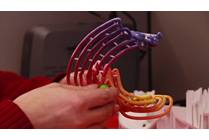
Blog
You Can Change the Future of 3D Printing
3D printing: If you haven’t heard of it, you’re either blissfully insulated from today’s media or a purposeful avoider of trendy buzzwords. And if you fall into one of these camps, you’re probably one of the few who can help this technology out of a current rut.

Condition
Trichomonas
Trichomonas is a sexually transmitted infection (STI). Anyone who is sexually active has a chance of getting trichomonas.
Article
Provider Information
Access resources for referring providers and homecare health professionals.

Blog
Lead: The Silent Threat in Your Pantry
Maintaining a healthy diet rich in a variety of foods can help reduce the risk of repeated exposure to contaminants, while also providing essential nutrients for overall health.
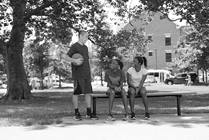
Condition
Avulsion Fractures of the Ischial Tuberosity of the Pelvis
Avulsion fractures happen when a small piece of bone is pulled away by a muscle or tendon. The ischial tuberosity, located in the buttocks, is where the hamstring tendons attach to the pelvis. These fractures often occur in teenagers.
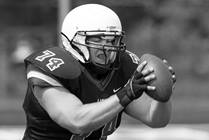
Condition
Spinous Process Apophysitis
Spinous process apophysitis is an injury to an apophysis in the low back.
Article
Colostomy
A colostomy is a surgical procedure performed on children who are unable to pass feces safely due to disease or anatomical defect.

Article
Marijuana Edibles
A marijuana edible, cannabis edible, or simply “edible” is any food or beverage that contains THC, the psychoactive ingredient in marijuana, or cannabidiol (CBD). THC or CBD have been added to all sorts of foods, such as chips and candies, and even drinks.
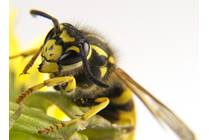
Blog
Allergic Reactions to Stings and Bites
The day before I was to have my senior picture taken in high school, I was stung on my right hand by a wasp. My entire hand and wrist swelled to about three times its normal size.

Blog
What Parents Need to Know About Coronavirus
COVID-19, caused by a novel coronavirus, is a global pandemic. Below are answers to some frequently asked questions about COVID-19.

Specialty
Comprehensive Sarcoma Program
Nationwide Children's Pediatric Bone Tumor Clinic is one of the few clinics in the country that utilizes the newest surgical procedure, Limb Preservation, to treat sarcomas.
Article
What to Expect
Learn what to expect during your stay with us at The Heart Center at Nationwide Children's — from admission to discharge.
Tibial Stress Fracture
The tibia (shin bone) is the larger, and major weight bearing bone, of the two lower leg bones. A tibial stress fracture is a complete or incomplete break that develops over time, usually as a result of repeated activity.
Article
Student Testimonials
Former interns of the Sports Medicine Athletic Training Internship reflect on their time in the program and how their hands-on experiences were unlike anything they learned in the classroom.

Blog
Salmonella: What Parents Need to Know
While salmonella can be unpleasant, a little knowledge goes a long way in keeping your family safe. And as always, good hygiene and food safety habits are your best defense!
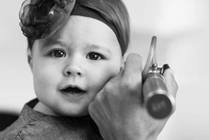
Condition
Ependymoma
Ependymomas are a type of a tumor that form in the brain or spinal cord (central nervous system) as a result of abnormal growth of ependymal cells.

Condition
Recurrent Respiratory Papillomatosis (RRP)
RRP is caused by the Human Papilloma Virus (HPV), which is a highly prevalent virus.
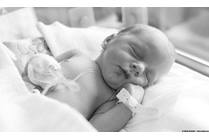
Blog
Brachial Plexus: What You Need to Know About This Childbirth Complication
Each year during the delivery process, about one out of 1,000 babies sustain injury to a network of nerves in their neck called the brachial plexus. Here are the most common questions the experts at our Brachial Plexus Program hear from parents.
Menstrual Dysfunction in the Athlete
Many things can cause changes in hormone levels. These changes can lead to irregular or missed periods, especially in athletes.

Blog
Holiday Candles: Tips to Keep Your Family Safe
Candles are often used at this time of year – for religious or cultural celebrations or to make the house smell nice. Many families have traditions around holiday candles and most children are eager to participate in the lighting festivities – but when can they safely do so? Ultimately,

Condition
Tennis Elbow
Lateral epicondylitis (Tennis Elbow) is a painful inflammation of the bony bump on the outside of your elbow.
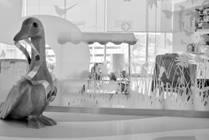
Condition
Abdominal / Duplication Cysts
Abdominal cyst is a general term used to describe a rare, congenital birth defect that causes an irregular mass of tissue to grow in a baby’s abdomen. Growths can appear anywhere along the gastrointestinal tract or reproductive organs like the ovaries. Surgery is the most common treatment for cysts.

Blog
Talking to Kids About Politics
With the negativity and divisiveness in our current political climate, your kids are counting on you to help them understand the many images, messages, and actions that are occurring all around them. Here’s how you can help.
Article
Treatment
There is no cure for Cerebral Palsy, but many treatments can reduce the effects of CP and also help children learn ways to adapt.

Blog
Growing Pains: How to Help
Here are some common questions about growing pains, how to help your child through them, and when it may be time to see your pediatrician.
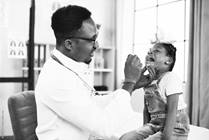
Blog
Tonsillectomy and Adenoidectomy Recovery Tips
Here are some things to look out for and steps to take to help your child recover from adenoid and tonsil surgery at Nationwide Children's Hospital.

Blog
Physiological Stress Response: It’s Not All in Your Head
Often the clinician may explain that your child’s symptoms are the result of stress, which can feel like you are being told “it’s all in their head.” It is important to know that it is not all in your child’s head.
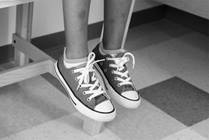
Condition
Non-Ossifying Fibromas
Non-ossifying fibromas (NOFs) are made of fibrous or “scar” tissue in the bone. They are not cancerous and they do not spread to other parts of the body or bone.

Blog
Antibiotic Allergies: Why Kids Should Be Tested to See if They’re Real
The most common symptoms are itchiness, a rash, difficulty breathing and swelling of the face, hands or feet. Less commonly, vomiting, diarrhea or light-headedness can be symptoms of an allergy.

Specialty
Emergency Medicine
The Division of Emergency Medicine at Nationwide Children’s Hospital staffs two Emergency Departments, seven Urgent Care locations and the Psychiatric Crisis Department. Our team is comprised of pediatric emergency medicine sub specialists, general pediatricians and nurse practitioners.

Condition
Tonsillitis
Tonsillitis refers to inflammation or infection of the tonsils. Treatment of tonsillitis typically requires a course of antibiotics.

Condition
Mayer-Rokitansky-Küster-Hauser Syndrome
Mayer-Rokitansky-Küster-Hauser Syndrome (MRKH) is a rare condition that affects girls and women. It means they are born without a fully developed uterus or vagina.
Sports Medicine: Shoulder Impingement Syndrome
Impingement syndrome is pain in the shoulder caused by pinching of the rotator cuff muscles beneath the edge of the shoulder blade (acromion).
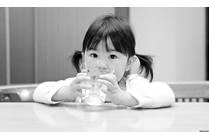
Blog
Lead Poisoning: Still a Public Health Risk
For more than 100 years, society has known that lead is very damaging to young children. It is frustrating that we still expose our most vulnerable to this poison, especially because it is completely preventable.

Specialty
Single Ventricle Program
Our program is dedicated to helping children and families cope with the challenges of a single ventricle diagnosis and improve outcomes. The Heart Center is among only a handful of centers in North America that offer this dedicated service.

Condition
High-Grade Gliomas
High-grade gliomas are fast-growing cancers that form in the brain or spinal cord. Surgery, radiation, and targeted therapies can help. High-grade gliomas are more aggressive and can grow quickly. They are the second most common type of malignant brain tumor in children.
Patellofemoral Dislocation
The patella (kneecap) sits in the groove at the end of the femur. Sometimes, it moves too far to the side of the knee and slides out of the groove. This is called a dislocation.
Multimedia
Using a Nasal Spray for your Child
A lot of people use nasal sprays, but a lot of people use nasal sprays incorrectly. Just follow these simple steps and we’ll have you feeling better, faster.
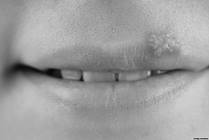
Blog
What You Need to Know About Herpes Mouth Sores
If you have experienced a cold sore, you are already familiar with herpes simplex virus type 1 (HSV1). But did you know that cold sore actually began much earlier, typically during your toddler years?
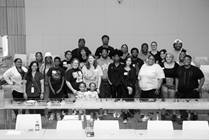
Students Speak: How a Hospital Program Helps High Schoolers Prepare for Life After Graduation
Nationwide Children’s is the only pediatric health care system that operates an Upward Bound Math & Science program – with a special focus on high school students who would be the first in the families to receive college degrees. As they head back for their senior years in high school, two students write about the impact of the program.
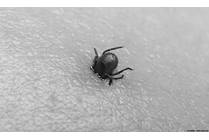
Blog
Ticks and Illness: Lyme Disease and Powassan Virus
Tick-bite prevention is key. Although anyone can get tick-borne illnesses, people who spend a lot of time outdoors in certain regions are at particular risk.
News
Hyundai Hope on Wheels Awards $250,000 Research Grant to Nationwide Childrens Hospital in Honor of National Childhood Cancer Awareness Month
Hyundai Hope On Wheels® (HHOW) and Columbus-area Hyundai dealers presented Kevin Cassady, MD, and Principal Investigator in the Center for Childhood Cancer and Blood Diseases in The Research Institute at Nationwide Children’s Hospital with a $250,000 Scholar Grant to be used to improve
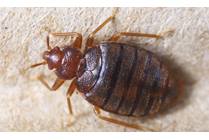
Blog
Bed Bugs 101
Yuck. This year five Ohio cities made a list no one wants to be on. “Orkin’s 2023 Top Bed Bug Cities” compiled data based on metro areas where Orkin performed the most bed bug treatments from December 1, 2021 – November 30, 2022.

Blog
What Is an Ovarian Neoplasm?
Ovarian neoplasms happen when there is an abnormal mass of tissue forming on the ovary with cells growing and dividing more quickly than they should.
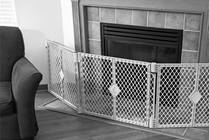
Blog
Fireplace Safety
Whether you’re roasting chestnuts or just enjoying the warm glow, fireplaces can help make a home warm and cozy. To a baby, toddler, or young child, flames in a fireplace are a new thing they want to explore.
Article
Developmental Milestone Checklist
This checklist helps you understand your baby’s movement, environment, and most importantly, what activities you can enjoy with your baby. Only do the activities for your baby’s developmental age or younger. Learn more about your baby's developmental milestones.

Condition
Hip Pointer (Iliac Crest Contusion)
A hip pointer is a bruise to the bone on the side of the hip called the iliac crest. It is usually from a direct hit to the hip. Bruises cause bleeding from small blood vessels that split, allowing blood to leak into the muscles, tendons, or other soft tissues.
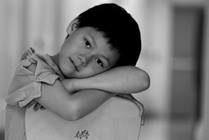
Condition
Dehydration
There are many reasons why children can get dried out or dehydrated. A child can lose too much liquid from the body from diarrhea, vomiting or fever. If the child has mouth sores or a bellyache, they may refuse to drink enough. Babies and younger children are at greater risk.
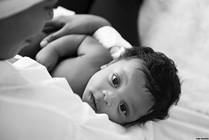
Blog
Babies and Senses: Your Questions Answered
In honor of her appearance on the Netflix show “Babies,” we collected questions from our community for Dr. Nathalie Maitre, neonatologist and Principal Investigator of Nationwide Children’s Hospital’s Baby Brain Optimization Project (BBOP).
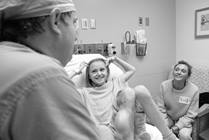
Article
Tissue Expansion
Tissue expansion involves the stretching of skin and soft tissue. It is done before reconstructive surgery to replace skin that has been burned, injured, or that has a large birthmark.

Article
Job Shadowing and Internships
Learn more about job shadowing and internship opportunities for high school and college students.
Spondylolysis
Spondylolysis is a stress fracture of the vertebrae (back bones). The fracture does not involve the main weight-bearing part, or body of the vertebrae.
Little Leaguer's Elbow
Little leaguer’s elbow is an injury to the medial epicondylar growth plate of the inner elbow. The growth plate is a weak area. Injury to it occurs due to repeated stress.

Specialty
Velopharyngeal Dysfunction Program
The Velopharyngeal Dysfunction (VPD) Program at Nationwide Children’s Hospital provides coordinated interdisciplinary diagnostic and treatment services for patients with speech disorders resulting from velopharyngeal dysfunction. It is the only program of its kind in central Ohio.
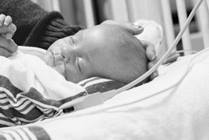
Condition
Pyloric Stenosis
Pyloric stenosis is a problem that affects babies between birth and 6 months of age. In pyloric stenosis, the muscles in the lower part of the stomach enlarge, narrowing the opening of the pylorus and eventually preventing food from moving from the stomach to the intestine.
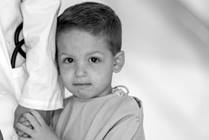
Specialty
Pancreas Care
Our center provides comprehensive multidisciplinary care for patients suffering from diseases of the pancreas. Our multidisciplinary team focuses on treating the patient as a whole to achieve the best possible outcomes and quality of life.
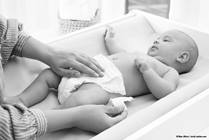
Blog
Baby Registry Series: Diaper Changes & Container Safety
Babies don’t need anything fancy, but there are a few things to keep in mind to prepare your home for safe diaper changes and playtime.

Blog
Stalking: Recognize, Respond and Refer for Safety
Stalking is when someone repeatedly, persistently, and unwantedly follows, harasses, or monitors your activities, both in-person and online, causing fear or safety concerns. If you or someone you know is experiencing stalking, it is important to remember to follow the three Rs: Recognize, Respond and Refer.
Article
Common Terms
You are going to hear a lot of medical jargon in the NICU. You can always ask question but this list of common terms will be a great guide to reference during your stay.
Article
The Enema Program
The Enema Program at CCPR is part of the Bowel Management Program for children with anorectal malformation, Hirschsprung disease or a spinal condition.
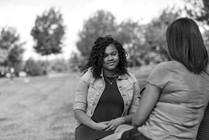
Blog
What Types of Birth Control Are 99% Effective?
Parents are probably familiar with the birth control pill, but there are other options of birth control available for your teen that don’t have to be taken every day.

Blog
Healthy Meals and Snacks for the Busy Athlete
Busy schedules shouldn’t mean skipped meals or fast food. Learn how to fuel your young athlete with simple, nutritious meals and snacks, even on the go. These time-saving tips from a registered dietitian can help your child stay energized, strong, and focused.
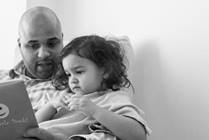
Condition
Protein Losing Enteropathy (PLE)
Protein losing enteropathy (PLE) explains the condition when the body loses important proteins because they are leaking into the intestines.

Blog
What Cough and Cold Medication Can I Give My Child?
Colds tend to be more common in fall and winter when children are indoors and in closer contact with each other. Of course you want to help out and give them cold medicine, but how do you know what to do?
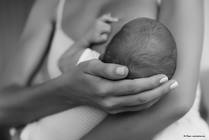
Blog
Breastfeeding Myths
As we celebrate World Breastfeeding Week, it is important to debunk some common myths about human milk feeding that can make things harder for new parents.

Blog
Helping Your Daughter Deal with Painful Periods
If your daughter complains of having cramps during her period, you can tell her that she isn’t alone. Menstrual pain usually isn’t caused by anything abnormal, and there are plenty of pain management options available.
Article
The Medicine Program
The Medicine Program at CCPR is part of the Bowel Management Program for children with constipation and slow colon. This will help children with bowel control and toilet training.

Blog
Massage Therapy for Sports Injuries
In the event that one of your young stars is already suffering from an injury, massage can be beneficial in facilitating a speedy recovery.

Condition
Vaginal Discharge
It is normal for women to have some vaginal discharge. The presence of vaginal discharge alone does not mean there is an infection. Signs of an infection include vaginal itching, burning or irritation, and unpleasant odor.
News
Ohio Boy Receives Gift of Hearing
Although born deaf, 15-month old Jonah Knueve is now able to hear his parents voices. Weeks before his first birthday, Knueve became one of only a handful of children in the country under the age of one to receive simultaneous, bilateral cochlear implants.Doctors at Columbus Childrens Hospital
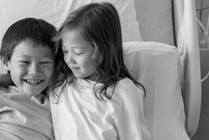
Condition
Atrioventricular Septal Defect (AVSD)
Atrioventricular septal defect (AVSD), also commonly known as endocardial cushion defect or atrioventricular canal defect (AVCD), is a heart condition where there are holes between the heart’s upper and lower chambers, and the valves controlling blood flow may not form correctly.
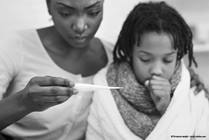
Blog
Parechovirus: What is it?
The CDC recently issued a health advisory to inform clinicians and public health departments that parechovirus is currently circulating in the United States.
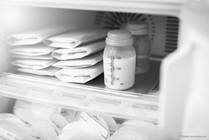
Blog
How to Safely Pump and Store Human Milk
Your breast milk is the best nutrition for your baby and provides many antibodies to help fight infections and viruses. Proper storage of milk in clean containers and at proper storage temperature is equally important.

Blog
Tips for Students in the Age of Hybrid Learning
As online and hybrid learning have become the norm for some schools scattered across the country, here are some tips to make sure your child is successful when learning at home.
News
Pacemakers Used to Help Children with Stomach Problems
Physicians at Nationwide Children’s Hospital in Columbus, Ohio are turning to a device typically used in adults with heart problems to help children with severe stomach conditions.
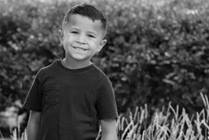
Condition
Low-Grade Gliomas
Low-grade gliomas are a type of brain tumor that grow slowly and are less aggressive than high-grade gliomas. They can cause seizures, headaches, and other symptoms. Treatment options include surgery, radiation therapy, and chemotherapy.
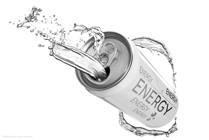
Blog
Caffeine Poisoning: What Parents Need to Know
As caffeine consumption becomes more popular in the form of energy drinks, energy shots, and even caffeine powders, it’s important for parents to be aware of the risks associated with these products, especially for young children.

Blog
Is My Child Ready for Kindergarten?
Having an idea of what your child should know and be able to do when they start school will give you the confidence to determine if your child is ready for kindergarten.

Blog
Give Back (to Yourself): 6 Reasons Why It's Good for You to Volunteer
The power of volunteering has been studied for decades. You may already know how great it is for your mental health, but did you know there’s a growing body of research that volunteering is great for your physical health as well?
Article
Breastmilk For Your Hospitalized Infant
Mothers who need to express milk for several weeks or months will need to use a hospital grade electric breast pump.
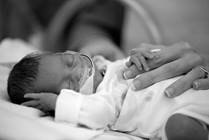
Blog
Making Lemonade Out of Lemons: Advice from Former NICU Parents
I still remember the first time I walked into the NICU. It was hours after the birth of my twin girls – 15 weeks too soon. The NICU was loud and unfamiliar.

Condition
Tricuspid Atresia
Tricuspid atresia, also sometimes called hypoplastic right heart, is a heart defect where the valve between the heart’s right atrium and right ventricle doesn’t form. Most babies with tricuspid atresia will need many heart surgeries over their lifetime.

Blog
How to Know if Your Child is Ready for Contact Lenses
Contact lenses can be a great alternative to glasses for common childhood eye problems like myopia, hyperopia, and astigmatism.

Blog
Teen Drivers: 8 Safety Tips
Nothing is scarier than a teen driver. Or is it a driver using their cellphone on the highway? Or someone balancing food on their lap and barely a hand on the wheel while they simultaneously try to eat, not spill, and operate a vehicle?

Blog
Breaking Up is Hard To Do: 5 Tips for Helping Your Teen Navigate Their First Breakup
We all know that most “first loves” don’t have a happy ending. How can you help your teen during this time? Here are tips for providing support and teaching them how to manage future relationships.
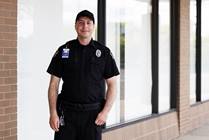
Article
Free Tax Clinics Help Families Access Tax Credits, Larger Refunds
Nationwide Children’s Hospital, in partnership with United Way of Central Ohio, began offering free tax clinics in 2021. The clinics are offered at multiple central Ohio locations and are designed to help families access tax credits and refunds.

Condition
Congenital Melanocytic Nevi (CMN)
Moles present from birth, or that develop within the first few months after birth, are called congenital melanocytic nevi (CMN). They are fairly common and, in most cases, they do not cause health problems. However, they can carry risks.

Condition
Truncus Arteriosus
Truncus arteriosus is a rare heart defect where only one large blood vessel forms instead of two. It can be treated with surgery.
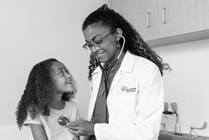
Condition
Astrocytoma (aka Glioma)
Astrocytoma is a type of tumor that can grow in the brain or spinal cord. It can be treated with surgery, radiation therapy, or other treatments depending on the type of tumor.

Condition
Noisy Breathing (Stertor, Stridor or Wheezing)
Noisy breathing is common, especially in children. and can be a sign of many different conditions. Noisy breathing is typically caused by a partial blockage or narrowing at some point in the airways. Types of noisy breathing include low-pitched, stridor and wheezing.
Legg Calve Perthes Disease
Legg Calve Perthes Disease, also known as Perthes or LCP, is a condition affecting one or both hips typically in children ages 3 to 10 years old

Condition
Uterine Didelphys
Uterine didelphys is a disorder present before birth in which a female develops two uteruses instead of one. Treatment could be needed if symptoms occur such as unusual pressure or cramping pain before or during a menstrual period or an abnormally high amount of bleeding during a menstrual period.
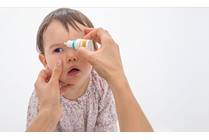
Blog
The Parent's Guide to Pink Eye
Your child wakes up with something new and unexpected: their eyes are matted shut and they have trouble opening them. The right answer depends on the underlying problem.

Blog
Sports Performance Anxiety: 7 Tips to Prepare Your Child for Optimal Play
Performance anxiety is a real issue that affects many athletes. Some athletes may thrive under pressure, while others can let negative thoughts affect their game.
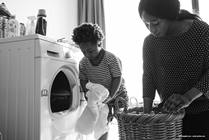
Blog
Make Easy Work of Chores
Teaching children to take on household jobs helps build their confidence, increases competence with specific skills, strengthens their sense of responsibility and allows them to feel proud and happy about being helpful family members.
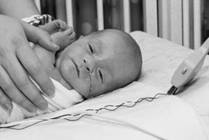
Condition
Ebstein's Anomaly
Ebstein’s anomaly is a heart problem that some people are born with. It means the tricuspid valve, which helps control blood flow in the heart, doesn’t work right. Most babies with severe Ebstein’s need surgery at some point.
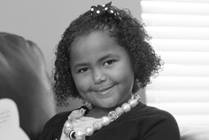
Condition
Transposition of the Great Arteries (TGA)
Transposition of the Great Arteries is a heart condition where arteries switch places and oxygenated blood goes back to lungs, not body. It can be treated with surgery and catheterization.

Condition
Pulmonary Atresia
Pulmonary atresia is a heart defect in children that affects blood flow to the lungs. It can be treated with surgery or catheterization

Condition
Aortic Stenosis
Aortic stenosis is a heart condition where the valve that controls blood flow from the heart to the body is too narrow. It can be treated with surgery or catheterization.

Condition
Congenital Heart Defects
Congenital heart defects are problems with the heart that are present at birth. Some are simple and don’t need treatment, while others require surgery.

Blog
Early Literacy: Why Reading is Important to a Child’s Development
Language and literacy develop together as a baby grows from an infant, to a toddler, to a school-aged child and older. This development happens in an expected order, through social interactions, most often with parents. The key to development is that interaction.
Article
Pulse Oximetry
A routine test called Pulse Oximetry can help identify most infants with critical congenital heart disease.
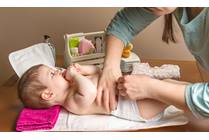
Blog
How to Combat Diaper Rash
When babies are born their skin is soft, smooth and perfect. Then it happens- diaper rash. As a parent, you may be asking yourself “What did I do wrong?” The simple answer is – nothing. Diaper rash is a normal part of infancy.

Condition
Chest Wall Tumors
This Helping Hand™ covers the possible treatments of chest wall tumors. They can be benign or malignant.

Condition
Total Anomalous Pulmonary Venous Return (TAPVR)
Total anomalous pulmonary venous return (TAPVR) is a condition where the blood vessels in the lungs, called the pulmonary veins, are not attached to the heart in the right place. Because of this, the body can’t get enough oxygen.

Condition
Interrupted Aortic Arch (IAA)
Interrupted aortic arch is a heart condition where the aorta doesn't form completely. This affects blood flow and will require open heart surgery to treat it.

Condition
Double Outlet Right Ventricle (DORV)
Double outlet right ventricle (DORV) is a congenital heart defect where the two great arteries are both attached to the right ventricle. In DORV, the normally separated oxygen-rich arterial blood and oxygen-poor venous blood is mixed prior to leaving the heart.

Condition
Pulmonary Stenosis
Pulmonary stenosis is a heart defect in children that makes it harder for blood to flow. It can be treated with surgery or catheterization.

Condition
Varicoceles
A varicocele is a mass of swollen blood vessels in the spermatic cord – the structure in the scrotum that connects the testicles to the body. Varicoceles are generally harmless and painless and do not require treatment. Physicians will recommend surgery if it appears the varicocele will impact testicle growth and future fertility.
Article
Education
Education is the foundation for lifelong success. We support a number of programs to improve educational outcomes focused around school readiness and mentorship.
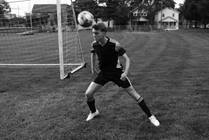
Condition
Hip Flexor Strain
The hip flexor muscles are in the front of the thigh. They are made up of the iliopsoas (i-lee-uh-sow-uhs), sartorius (saar-taw-ree-is), and rectus femoris (rek-tuhs feh-mr-uhs) muscles. They allow the hip to lift up, or flex. Muscle attaches to bone via a tendon.

Condition
Medulloblastoma
Medulloblastomas are tumors that develop in the brain, most commonly in a region called the cerebellum. The cerebellum is located next to the brainstem and controls coordination, balance and other motor skills.

Condition
Spinal Cord Tumor
Spinal cord tumors are growths that develop within the spinal canal or the bones of the spine. They can cause pain, loss of sensation, and muscle weakness. Treatment options include surgery, radiation therapy, and chemotherapy.

Condition
Nasal Congestion
Nasal congestion, nasal obstruction, and mouth breathing are all descriptions of a similar condition where the nasal passages are blocked, resulting in the sensation of difficulty breathing through the nose.
News
Mouse Model Could Help Identify Viral Vectors that May Cause Tumors
Investigators at Nationwide Children’s Hospital have identified a mouse model that could help evaluate the risk that viral vectors used in gene therapy might promote tumor formation as a side-effect. The study appears in Molecular Therapy.
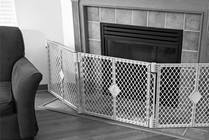
Article
Fireplace Safety
Whether you’re roasting chestnuts or just enjoying the warm glow, fireplaces can help make a home warm and cozy. To a baby, toddler, or young child, flames in a fireplace are a new thing they want to explore.
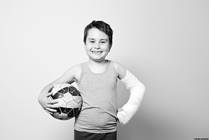
Blog
4 Things to Know About Caring for Your Child’s Cast
Up to 40% of girls and as many as 50% of boys experience a broken bone during childhood. Here are four things you should know about casts and how to care for them.
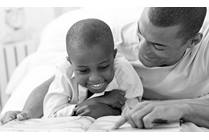
Blog
Sight Words: Are They Necessary to Teach Your Child to Read?
They have been called Fry, Dolch, high frequency and common words. Regardless of their name, the English language is based on sound associations to letters and letter pairs.

Article
Pediatric Respiratory Therapy Residency Program
Nationwide Children’s Hospital welcomes new graduates to our Respiratory Therapy (RT) Residency Program. Our RT program integrates new respiratory therapists into the culture and values of Nationwide Children’s.

Blog
6 Things to Know About the COVID-19 Vaccine
Scientists have made an effective and safe vaccine to help fight COVID-19, save lives and help people return to normal life. Here's what you need to know.
News
Hyundai Hope on Wheels Donates $50,000 to Nationwide Childrens Hospital to Help Fight Childhood Cancer
Hyundai Motor America and its dealers announced today that Nationwide Childrens Hospital in Columbus, Ohio has been selected to receive a donation of $50,000 from Hyundai Hope on Wheels.

Blog
Preventing Holiday Hazards
Families celebrate the holidays with many different traditions and experiences. With all of the excitement and anticipation, our familiar day-to-day routines tend to shift leading to potential encounters with holiday hazards.
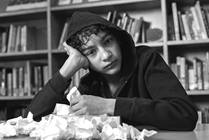
Article
Viral Season Resources
We are here to help you learn more about seasonal respiratory viruses and how to protect your family. Access resources and visitor guidelines.
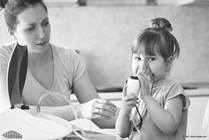
Blog
Respiratory Toolbox for Kids Struggling to Breathe
Sometimes despite our best efforts, we need to take our child to the hospital. Let me ease your mind and share what our amazing respiratory therapists do to help your child heal!
Article
Jackson Pratt Drainage Tube
The Jackson Pratt drain is a special tube put in place near the site of surgery to prevent body fluid from collecting. It pulls the fluid into a bulb by suction.
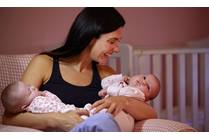
Blog
Tips for Raising Multiples
Disclaimer: I’m an inexpert expert. Let me explain why. I’m a pediatrician. I studied YEARS to get my medical degree, graduated at the top of my class, chose pediatrics because I loved kids, but when I found out I was having twins, I did what any self-respecting person would do: I

Blog
Transitioning Foster Children into a New Home: How to Help
Although children may be removed from the home for a variety of reasons, it is often unexpected. While this can be a confusing and traumatizing time, there are resources and tools to help make this life event less stressful to a child in need of foster care services.

Condition
Double-Inlet Left Ventricle
Double-inlet left ventricle (DILV) is a heart defect where both upper chambers send blood to one lower chamber, causing mixed blood flow to the body and lungs. Most babies with DILV will need many heart surgeries over their lifetime. Most surgeries are successful, but your child will need cardiology care for life.
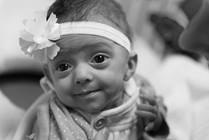
Blog
5 Questions Every NICU Parent Should Ask
Having a baby in the Neonatal Intensive Care Unit (NICU) can be overwhelming and it can take a while to adjust. Here are 5 questions you might find helpful to ask as a NICU parent.
News
Protecting Ohios Children 2007 Conference
M E D I A A D V I S O R YWHAT: Protecting Ohios Children 2007 ConferenceWHEN: Friday, April 27, 2007 from 9am to 4pmWHERE: The Conference Center at NorthPointe9243 Columbus Pike, Lewis Center, OH 43035TOPICS: I am the Child that the Village Helped to RaiseThe Ohio Childrens Trust FundA Personal
News
Nationwide Childrens Hospital Hosts Pill Disposal Day; November 13
To help keep our community safe from prescription drug abuse, misuse and potential poisonings, the Central Ohio Poison Center at Nationwide Children's Hospital is hosting Pill Disposal Day on November 13 from 10 a.m. to 2 p.m. at the Outpatient Care Center loop (555 S. 18th St.).

Condition
Hypertelorbitism
Hypertelorism, also known as orbital hypertelorism, is an abnormally increased distance between the orbits (the bony sockets holding the eyes).
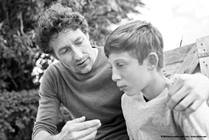
Blog
Suicide: The Conversation We Should Have With Our Kids
One of the best things we can do is give our young people the power to talk about mental health issues and topics as challenging as suicide without shutting the door. Even if your child is doing well, this is a powerful opportunity to help your child see it is okay to be emotionally open and could help them talk openly with friends.
News
Program Assists Brothers and Sisters of Kids with Autism
Home to one of the largest intensive intervention and diagnostic centers for autism, Nationwide Childrens Hospital has long been recognized as a leader in autism intervention efforts.
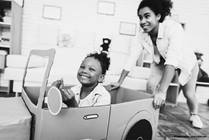
Blog
Is Your Child Ready to Be a Babysitter?
Having your child become a babysitter can be exciting and helpful! Make sure they are equipped with all the right tools before taking on this task.
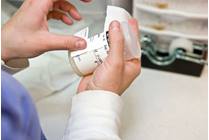
Blog
Liquid Gold
Do you know about a critical donor opportunity to help sick and premature newborns? Just as blood donation creates a life-saving bank for people needing transfusions - did you know there is a local bank for donated breast milk? Clearly not everyone can be a donor, but for nursing mothers this is an
Article
Communication With the Health Care Team
Communication between you and other members of the health care team is important so your baby can receive the best care possible. We know that many parents can’t be here during the day, but we still want you to be able to communicate with other members of the health care team.
Article
Childhood Cancer Awareness Month
Learn how Nationwide Children's Hospital is participating in Childhood Cancer Awareness Month.

Article
Post-Surgery
Learn what happens immediately after your child leaves the operating room and recovers in our Cardiothoracic Intensive Care Unit (CTICU).
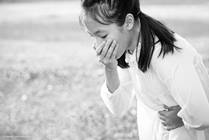
Blog
Understanding Food Poisoning: A Guide for Parents
Scraped knees and bouts of the common cold are frequent concerns for parents, but there are plenty of other dangers lurking about. One of these is food poisoning, a condition whose source lies in undercooked hamburgers and unwashed produce.

Blog
Get a Black Belt in Giving Medicine
So you waited to see the doctor, then waited in line for the pharmacist to give you your medicine, and now it’s time to give it to your kids. Maybe you got the “yummy pink medicine,” but not all medicines are yummy or pink.

Blog
Healthy Eating for Young Athletes
Eating right is an important part of life for young athletes. Getting the proper nutrition before and after a workout, practice, or the big game is essential to helping kids prevent injury and perform at an optimal level.

Condition
Vaginal Anomalies
Vaginal anomalies are disorders that involve abnormally formed or absent vaginas. These include: vaginal agenesis, imperforate hymen, septate hymen, transverse vaginal septum and transverse vaginal septum. These occur in about 5% of females with an anorectal malformation/imperforate anus.

Condition
Soft Tissue Sarcomas
Soft tissue sarcomas start as painless lumps or swellings, but they are cancerous tumors. They occur most commonly in the arms, legs, chest and abdomen in children.
News
Ohio Dental Association Foundation Surpasses $544,000 in Scholarships and Grants Awarded
The Ohio Dental Association Foundation (ODAF), largely supported by Ohio Dental Association member dentists, has now awarded more than half a million dollars to support dental education to students and programs throughout Ohio.

Specialty
Clinical Informatics
The Division of Clinical Informatics at Nationwide Children’s Hospital works at the intersection of medicine, technology and people to improve care and support best outcomes for patients everywhere.
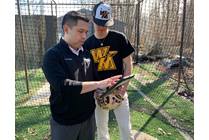
News
Nationwide Children’s Hospital Sports Medicine Provides Specialized Baseball Performance Training to Help Prevent Common Injuries
Because many of the most common baseball arm injuries are preventable, experts at Nationwide Children’s Hospital Sports Medicine have designed a unique baseball performance-training program for all skill levels to help address the majority of injuries caused by overuse and improper throwing technique.
Article
PALS/ACLS Education
Register for a PALS course designed specifically for pediatric emergency respondents. We use Patient Simulation to develop interdisciplinary resuscitation team skills during all PALS courses held at Nationwide Children's.

Condition
Allergies to Foods
A food allergy occurs when the body’s immune system overreacts to certain foods. The body then makes antibodies to that food and an allergic reaction occurs. Anaphylaxis is a severe and possibly life-threatening reaction. If a severe reaction occurs, use the EpiPen and call 9-1-1 immediately.

Condition
Tetralogy of Fallot (TOF)
Tetralogy of Fallot is a congenital heart defect that is made up of 4 problems and results in not enough blood flow to the lungs.

Condition
Hypoplastic Left Heart Syndrome
Hypoplastic left heart syndrome (HLHS) is a congenital heart defect where most of the structures on the left side of the heart are small and underdeveloped. The Hybrid approach, developed by surgeons at Nationwide Children's Hospital, is an alternative to Norwood open heart surgery for HLHS.

Blog
Pelvic Floor Physical Therapy: How It Can Help
Patients with complex colorectal issues often struggle with constipation, difficulty emptying the bladder, and urine and stool accidents. In addition to medical and surgical treatments, some patients can benefit from pelvic floor physical therapy.

Pediatric Sports Medicine Athletic Training Internship
This Athletic Training Internship and Immersion has been created to prepare college students who are currently enrolled in a CAATE accredited athletic training program for the various roles an athletic trainer may have in the outreach and clinical settings.
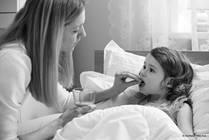
Blog
Acetaminophen vs. Ibuprofen: What’s the Difference?
We’ve all experienced pain and fever in our lives, and at some point, our children will also experience these uncomfortable symptoms. Pain killers and fever reducers, such as acetaminophen and ibuprofen, can help.

Condition
Hemangioma and Vascular Malformations
The treatment of a hemangioma is usually observation. Some hemangiomas can cause problems if they bleed or press on important nearby structures, such as the eye or the upper airway. Venous malformations, lymphatic malformations and arteriovenous malformations require a multidisciplinary approach.
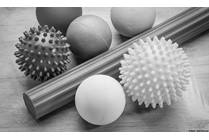
Blog
Rolling Techniques to Relieve Pain, Discomfort and Tension
Everyone has dealt with sore, tense or cramped muscles from time to time and as a physical therapist, I regularly see patients in our clinics who benefit from soft tissue work to help ease muscular tension and decrease pain.
News
JOANN Joins On Our Sleeves® to Advance Child Mental Health Awareness through Creativity
On Our Sleeves serves to break the stigma around mental health among children and adolescents, and JOANN will help further the movement across the country beginning in May, Mental Health Awareness Month.

Blog
The Dangers of Amber Teething Necklaces: What Parents Need to Know
Teething is one of the first milestones parents of little ones know all too well. Amber teething necklaces are popular in many parenting circles, but they are not a safe option for baby for two main reasons.

Blog
How to Prepare Your Teen for Their First Birth Control Visit
Becoming familiar with what you and your teen can expect if they come to a birth control visit can make everyone feel more prepared. Learn more about what you can expect at this type of appointment.
News
Nationwide Childrens Hospital Expands Plastic Surgery Services; Focuses on Multi-Disciplinary Team Approach
When it comes to plastic surgery, the changing of one’s physical appearance is normally just the first step of a long process. Expert surgery is only the beginning, and Nationwide Children’s Hospital recognizes the importance of caring for the whole child.
News
Nationwide Childrens Hospital Participating in International Childrens Hospitals Patient Safety Effort That is Saving Lives and Expanding Efforts to Employee/Staff Safety
Nationwide Children’s Hospital is part of a collaborative patient safety effort of 100+ children’s hospitals across North America that is getting results and is expanding the scope of its work to incorporate employee/staff safety.
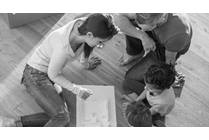
Blog
Fire Escape Plan: Can Your Family Get Out in Less Than Two Minutes?
As a mother and an injury research scientist, I’ve dedicated much of my career to keeping kids safe and reducing pediatric injuries, which are the leading cause of death for children.

Blog
Asthma and Cleaning Products: A Complicated Relationship
Many people can have well-controlled asthma for months at a time, then suddenly develop difficulty breathing after coming in contact with one of their triggers.
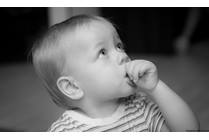
Blog
Thumb-Sucking: When Should Parents Intervene?
If you are concerned about your baby sucking her thumb, no need to worry. Sucking is a normal reflex in babies and thumb-sucking is a common activity among infants and toddlers.

Blog
Breathe Easy: Why a Properly Fitted Sports Bra Matters
For teenage athletes, having the right gear is key to comfort and performance – and that includes a properly fitted sports bra.

Article
Dale Jr Foundation
The Dale and Amy Earnhardt Fund supports Nationwide Children’s courageous patients and their families in the area of pediatric injury rehabilitation, research and prevention, helping patients and families rehabilitate from brain injuries, head and spinal cord injuries, and other physically disabling conditions and injuries.
Article
Winter Weather Advisory
Winter brings injuries unique to cold weather sports. Two of the more common categories of injuries are those influenced by environmental conditions and accidents.
News
New National Study Examines Pediatric Mobility Aid-Related Injuries
Children and adolescents with an injury or disability may use mobility aids such as crutches, walkers and wheelchairs to help them move around more easily. However, use of these aids has been associated with risk for injury.
News
New National Study Examines Pediatric Mobility Aid-Related Injuries
Children and adolescents with an injury or disability may use mobility aids such as crutches, walkers and wheelchairs to help them move around more easily. However, use of these aids has been associated with risk for injury.
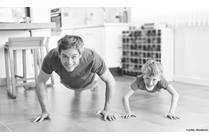
Blog
Winter Workout: Exercise During TV Commercials
As always, consult with your child’s physician before implementing any new exercise routine. How do you keep your family active throughout the winter? By encouraging them to step away from the couch or computer, and get moving during the commercials of their favorite TV show! Staying active
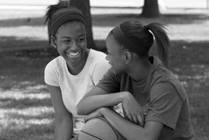
Specialty
Physical Therapy - Sports and Orthopedic
Sports and Orthopedic Physical Therapy team works closely with Sports Medicine and Orthopedics to help rehabilitate and return children to their previous function level.
News
Lawn Mower Injuries Send 13 Children to the Emergency Department Every Day
On average every day in the United States, 13 children receive emergency treatment for a lawn mower-related injury. That adds up to almost 4800 children injured each year.

Blog
Safe Sleep Questions: You Asked, We Answered
We asked if you had questions about newborn safe sleep practices on Facebook and you delivered! Here are the answers to some of your questions: My 6-week-old baby has bad acid reflux and starts spitting up about an hour after feeding…is it still safe to put him on his back? I’m getting

Condition
Ventricular Septal Defect (VSD)
A ventricular septal defect (VSD) is a hole in the heart. It changes blood flow, making the heart work harder. It can be treated with surgery or catheterization.

Condition
Coarctation of the Aorta
Coarctation of the aorta is a heart defect that is present at birth (congenital) in which the aorta is narrowed and results in decreased blood flow to the lower body. The left ventricle (pumping chamber) of the heart must work harder in order to pump blood through the narrowed aorta.

A New Campaign to Help Teens Identify “Green Flags” for Healthy Relationships
In February 2024, The Center for Family Safety and Healing at Nationwide Children’s Hospital launched the Green Flags campaign which works to educate teens about the characteristics of healthy relationships.

Blog
Food Language and Body Image
Labeling food as “good vs. bad,” “healthy,” or “clean” can lead to abnormal behaviors associated with an eating disorder. When talking about food or eating with a child, conversation should be around the positive aspects of the food.

Condition
Epilepsy
Epilepsy is a neurological condition involving the brain that makes people more susceptible to having recurrent unprovoked seizures. The two broad categories of epileptic seizures are generalized and partial seizures.
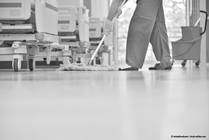
Blog
Who Cleans the Hospital?
Environmental Services Week is a time to show appreciation for the workers who make sure health care facilities are kept clean, sanitary, and safe.
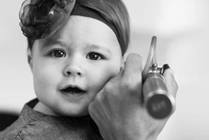
Condition
Paradoxical Vocal Cord Dysfunction (PVCD)
With Paradoxical Vocal Cord Dysfunction (PVCD), the vocal cords close together, or constrict, when a person inhales, leaving only a small opening for air to flow into the windpipe.

Article
After a Transplant
Post transplant success depends largely on cooperation. It is important to follow the doctor’s orders and always take medications as instructed.

Condition
Alagille Syndrome
Doctors in the Pancreas and Liver Care Center can help treat Alagille syndrome, a genetic disorder that primarily involves a mutation in the gene called JAG1. It affects one in every 30,000 to 70,000 live births and can involve multiple organ systems including the liver, the heart, bones, eyes, kidneys, pancreas and brain.

Condition
Achondroplasia
Achondroplasia is the most common form of short-limb dwarfism. Individuals who have achondroplasia have short limbs but normal trunk height and head size with a prominent forehead. Children with achondroplasia can lead normal lives provided they receive appropriate care by knowledgeable providers.

Blog
The ABCs of DNA Sequencing: Reading Your Genetic Code
Imagine you had to copy a book manually by writing down every word by hand. That probably would take some time. Now imagine trying to do that with an entire set of encyclopedias; copying those would be a monumental task.

Blog
How to Squat Safely: Correct Form for Maximum Effectiveness
One of the most effective exercises is the squat, but when done incorrectly squatting can lead to many issues inside and outside of the weight room.

Blog
How Can I Talk to My Child About Wearing a Mask During Flu and COVID Season?
With flu season upon us and COVID still around, masks can be a helpful tool to keep germs at bay, even though they're no longer required in many places. If you’re wondering how to talk to your child about why some people still choose to wear masks, here are a few tips.
Article
Frequently Asked Questions
When you or your child are diagnosed with a heart condition you are sure to have questions. Our experts answer some of the most commonly asked questions about heart disease.

Condition
Jaw Abnormalities
Jaw abnormalities affect the bite and appearance of patients. These may be due to a cleft lip and palate, or other causes. Learn more today.
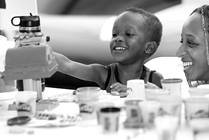
“PlayStreets” Gets More Children Outside for Neighborhood Fun
Nationwide Children’s PlayStreets initiatives drew thousands during the summer of 2023 with outdoor events promoting play and community interaction.
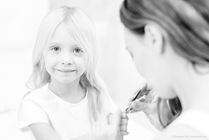
Blog
Finger and Toenail Care for Kids
Tiny but mighty, nails do more than just look nice, they protect little fingers and toes from the rough and tumble of childhood. From trimming tips to strengthening strategies, this blog covers everything parents need to keep their kids’ nails clean, strong, and healthy at every age.

Blog
Feeding an Infant with Cleft Lip and Palate
eeding a newborn baby is one of the first joys, or potential challenges, when welcoming a new bundle of joy into the family. For infants with cleft lip and/or palate, feeding is often a significant hurdle to overcome.

Blog
Cavity Prevention: 4 Tips
Your child is unique: choosing the best fit for your family can take the confusion out of cavity prevention!
News
Applebees Grill & Bar Partners with Nationwide Childrens Hospital To Help Kids Everywhere
Applebee’s Grill & Bar has teamed with Nationwide Children’s Hospital for a three-week fundraising campaign that will benefit patients and families who travel to Nationwide Children’s Hospital for its expert research and care.

Blog
Primary Ovarian Insufficiency: Teenagers in Menopause
Primary ovarian insufficiency means that the ovaries have stopped working at a younger age than typical. It used to be called premature ovarian failure and is often called premature menopause. In POI, the ovaries stop producing hormones and eggs, resulting in hormone deficiency and infertility.
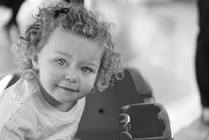
Specialty
Rett Syndrome Clinic
Children with Rett syndrome often need to see many specialists. Some families must travel for an entire day to visit a physician or team who understands and treats the condition. That’s why Nationwide Children’s offers a Rett syndrome clinic so patients and families can see multiple specialists during one visit.
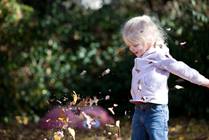
Blog
Autumn Asthma Attacks
Just as millions of children head back to school every autumn, hospitals are always bustling with emergency room and inpatient visits at the same time. October is one of the busiest months of the year in regards to severe asthma attacks.

Blog
Should Parents with Diabetes Breastfeed?
Parents who have diabetes of any kind are similar to other new parents in many ways. But according to a study here at Nationwide Children’s Hospital, they are less likely to breastfeed their newborn baby in the hospital and continue breastfeeding for at least two months.

Blog
How to Improve Wrestling Quickness and Agility
Wrestling has evolved to become a dynamic and agile sport. While strength is still important, there seems to be new contender and strategy for winning matches - quickness!

Condition
Neuroblastoma
Neuroblastoma is a rare cancer that develops from immature nerve cells. It most commonly arises in and around the adrenal glands, but can also develop in other areas of the body.
Article
Medicines After Kidney Transplant
Taking your medicines and understanding what each one does will help keep your new kidney healthy.
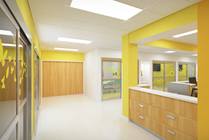
Article
The Day of Surgery
What to expect when you arrive for the day of your surgery at the Westerville Surgery Center.

Article
Baseball-Related Injury
While baseball is a great way for people of all ages to get out and get some exercise, injuries can and do occur. Taking a few precautions will help reduce the chance of injury.
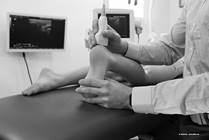
Blog
Diagnostic Ultrasound: Evaluating Athletes at a Faster Pace
While most people think of ultrasound as a device used during pregnancy, it is an important tool used by many medical specialties – including sports medicine.

Blog
Pierced Ears: How to Prevent Painful Infections
Thousands of kids get their ears pierced each year. Generally, ear piercing is a safe procedure, but a common complication is infection. Here’s what you need to know to help keep your little one’s ear piercings healthy and infection-free.
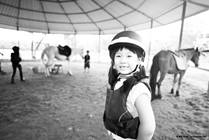
Blog
Horse Safety: Start with Basic Horsemanship and the Right Gear
What do you need to know when considering riding lessons for your child, signing them up for camp, or just safely living next to the horses in a neighbor’s backyard?
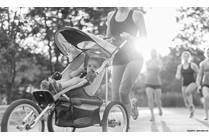
Blog
Choosing a Stroller: Best Tips to Keep Your Child Safe
Parents with young children have so many decisions to make and so many pieces of “equipment” to get. One of the bigger decisions is choosing a stroller that fits both your baby and your family’s lifestyle. There are many different options out there and it can get overwhelming.
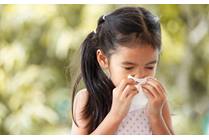
Your Guide to Respiratory Season
It’s that time of year for tissues, sniffles and sore throats. Winter brings colds, flu and respiratory ailments that spread quickly at home, school and work. Find the information you need about seasonal bugs right here at your fingertips.

Blog
Autism and COVID-19: A Parent's Perspective
Families are equal voices in care and treatment for their children. Cultivating a relationship with your child’s provider is a priority – especially during times of uncertainty.
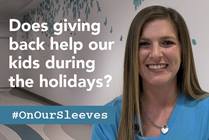
Blog
5 Ways to Teach Your Children the Gift of Giving
Tis the season for giving! The holidays are a wonderful time to teach children the gift of giving. Teaching your kids about giving is a great way to encourage empathy, and show compassion for others. Here are some of our favorite giving opportunities for the holiday season.
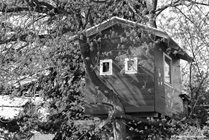
Blog
7 Tips for Tree House Safety
Tree houses bring childhood dreams to life, but safety should never take a backseat. Discover essential tips to build a secure, adventure-ready space where kids can play with confidence.
News
Nationwide Childrens Hospital Transport Team Receives March of Dimes Health Care Support Award
The March of Dimes hosted the fifth annual Health Leadership Awards Luncheon honoring individuals and organizations that have supported the mission of the March of Dimes by their extraordinary contributions in maternal and infant health. All finalists were nominated by their peers.
Article
What is Sleep Hygiene?
We all know how important it is to wash our hands, clean our bodies and brush our teeth to maintain good hygiene. But did you know we need to make sure our sleep habits are ‘clean’, too?
News
Nationwide Childrens Hospital to Open Close to Home Center with Urgent Care in Marysville
Nationwide Children’s Hospital will present conceptual renderings of a Close To Home Center with Urgent Care to the Marysville City Design Review Board at its June 12 meeting.

Blog
Stress and Physical Symptoms: When It's Not Just in Your Head
Most people know that when we have an illness, how we feel physically affects how we feel mentally. So, it should come as no surprise that mental feelings can have the opposite effect and change our physical state.

Blog
Why Your Child Needs a Support System and How to Build One
When people say it takes a village to raise a child, it really does! Support systems play a vital role in your child's mental and physical health as they grow.
Article
Endoscopic Ultrasound
When a child has pain or disease in the digestive tract, an ultrasound camera on the end of a tiny tube can be fed through the mouth to create high-quality images of the problem from the inside of the body.
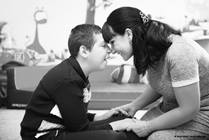
Blog
Disaster Response for Families of Children with Disabilities
Parents of children with disabilities and medical needs may find disaster preparedness overwhelming, and sometimes, they may need help finding and collecting resources. All families need to be ready for emergencies and disasters, and for families of children with disabilities, extra prepping may be necessary.
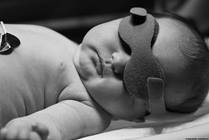
Blog
Infant Jaundice: What Is It and How Is It Treated?
Infant jaundice happens when bilirubin (a pigment made when the liver breaks down blood cells) builds up in a baby’s body. This usually happens because the baby’s liver is not mature enough to get rid of bilirubin as fast as it’s made.
Article
Seizures and Epilepsy
Has your child had a seizure or been diagnosed with epilepsy? This information will give you a basic understanding of your child’s condition.

Condition
Labial Hypertrophy
Larger-appearing labia minora, known as labial hypertrophy, may be completely normal. Labia vary in appearance with a wide range of normal regarding the size, shape and color. The majority of patients who have concerns about labial hypertrophy have normal labia.
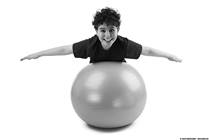
Blog
Core Stability: What Is It and Why Is It Important?
Having a strong, stable core helps us to prevent injuries and allows us to perform at our best. Read expert tips on how to help your child strengthen theirs.

Your Summer Safety Guide
Whether you are at home, on the road or in the water, you'll find the information you need for a fun and safe summer. Nationwide Children's is always just a click or call away.

Condition
Polycystic Kidney Disease
Learn about the two different types of Polycystic Kidney Disease.
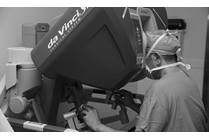
Blog
Robotic Surgery: Advancements in the Operating Room
Robotic-assisted, laparoscopic surgery can be used for many common operations, on kids of all ages and involves surgeons who are trained in pediatric urology and/or pediatric general and thoracic surgery. Nationwide Children’s currently has 11 surgeons certified to perform surgery using DaVinci.

Condition
Marfan Syndrome
Marfan Syndrome is an inherited disorder of connective tissue caused by genetic mutations that result in the dysregulation of the proteins of the extracellular matrix (fibrillin). The diagnosis is based on signs, family history, and results of diagnostic tests.
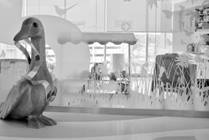
Condition
Acute Flaccid Myelitis
Acute flaccid myelitis (AFM) is a rare but serious nerve-related condition that occurs mostly in children. AFM comes from a virus that is the common cold. AFM attacks the spinal cord and the nerves that go to the muscles. Patients begin with a respiratory illness and then end up with muscle weakness.
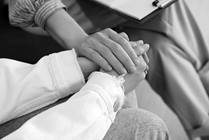
Coordinating and Improving Care for Young People who are Incarcerated
Youth in juvenile detention centers have worse health outcomes than their peers. Nationwide Children’s Hospital and Partners For Kids have created a care coordination team to improve access to health services and resources for those children, even after they are released.
News
Justices Give Hope Holiday Campaign Benefitting Nationwide Childrens Hospital Kicks-Off Nov. 5
During the 2017 Holiday season, Ascena retailer Justice will offer multiple opportunities for customers to give back to Nationwide Children’s Hospital throughout the “Give Hope” campaign, which will begin Nov. 5, 2017. Customers in all U.S.
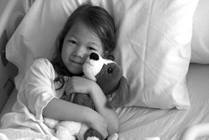
Specialty
Liver Care (Hepatology)
Our center is an integral part of the Division of Gastroenterology, Hepatology and Nutrition at Nationwide Children’s, caring for a wide range of liver diseases through medical management and surgery.

Condition
Otorrhea
Otorrhea is the medical term for ear drainage. In order for there to be drainage from the middle ear into the ear canal, there must be a connection present.

Condition
Prepubertal Vaginal Bleeding
There are several different reasons why a pediatric patient may experience vaginal bleeding. It is important to notify your health care provider if you notice your child is having vaginal bleeding.

Condition
Dysmenorrhea (Painful Menstruation)
A common reason patients experience painful menstruation, also known as dysmenorrhea, is because of inflammatory agents, called prostaglandins, which are released from the lining of the uterus during menstruation.
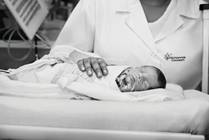
Article
Neonatal Early Career Exchange Program
Welcome! The Neonatal Early Career Exchange (NECE) program was created to pair early-career physicians with neonatologists at some of the nation’s most renowned hospitals for neonatal care.

40th Annual School Health Update Conference
Please join us for the 40th Annual School Health Update Conference hosted by Nationwide Children's Hospital, a leading pediatric care facility and research institute. This year's conference will highlight dynamic speakers on topics such as sleep equity, substance misuse, mental health in school aged children, and much more.

Specialty
Allergy and Immunology
We offer a wide range of services including allergy consultations, allergy shots, comprehensive asthma management plans, skin testing and more.
Article
Resources for Parents and Schools
Access logs, management plans, diabetes care tips and more.
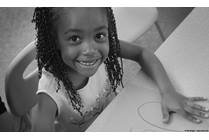
Blog
Getting Kids Ready for Kindergarten Screening with Occupational Therapy
An occupational therapist can evaluate a child’s performance in the developmental areas mentioned below and, if necessary, set up a plan of care that will help to address any skills in need of growth.
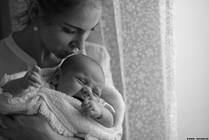
Blog
Treating Hirschsprung Disease: Meet Doctor Richard Wood
Hirschsprung disease is a congenital malformation where the nerves and ganglion cells within the colon do not develop properly. This occurs in 1 out of 5,000 live births.

Blog
Practicing Positive Discipline
It is important to fully understand the risks of hitting as a form of discipline as well as the lack of efficacy when compared to other strategies. We encourage parents to seek out positive forms of discipline whenever possible.
News
Nationwide Childrens Hospital Offers Halloween Safety Tips
On a night known for its mischief, parents should not have to live in fear for the safety of their children. To help ensure little witches and warlocks enjoy a safe Halloween, Nationwide Childrens Hospital offers a few quick safety tips.SAFETY MEASURES Be sure your childs costume is large enough to

Blog
Diabetes Nutrition Tips for the Holidays
Mashed potatoes, stuffing and pie, oh my! The holiday season brings lots of carbohydrate-heavy meals and sweet treats to the table, which can be intimidating for someone with diabetes.
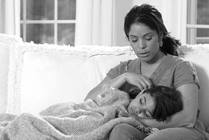
Blog
Surviving the Stomach Bug: Parent Edition
Vomiting, diarrhea, chills and aches…stomach bugs are never a fun adventure. Often times called the stomach flu, stomach viruses are actually not influenza, typically. Most of the time, it is caused by viruses such as rotavirus, adenovirus and echovirus.

Blog
Infant Sleep Machines May Damage Hearing
Babies are a precious gift. They come into this world innocent, small and helpless. They laugh, smile, coo, and break our hearts every day. What they often DON’T do is sleep. And of all the things we hope for our children, quality sleep habits are often at the top of the list.

Blog
Ouch! Straddle Injuries: Diagnosis and Care
Warm weather means more time at the playground, family bike rides, and trips to the pool. These activities are super fun but accidents can happen, and falls might result in injuries to the genitals.
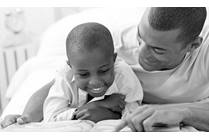
Blog
Kids and Pain: Treatment and Care After Surgery
After a surgical procedure, a person is often told to take a pill every few hours to feel better. According to guidelines from the American Pain Society, there are better options than just a pill for postoperative pain management.
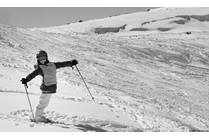
Blog
Skiing and Snowboarding Injury Prevention: Reducing Risk on the Slopes
Cold weather is here and snow is starting to fall, which means the unofficial start of skiing and snowboarding season! While this is a fun and exciting time of year, snow sport injuries are common and can range from minor bumps and bruises to serious trauma and head injuries.

Blog
Monkeypox: What Parents Need to Know
While we are still dealing with COVID-19, spread of another virus has been detected in the United States. Although monkeypox is uncommon, we need to be informed to protect against infection.
News
Doctors See Trend in Summer Injuries Among Children
It is a time most families look forward to every year – summertime. For parents, the warm summer months are often filled with family vacations and cookouts. For kids, it is a chance to play outdoors and enjoy a few months without homework.

Blog
Treating Your Child's Dry Skin This Winter
Although these techniques work year-round, they are especially important during the winter months (especially since we can’t get away to warmer weather year-round).
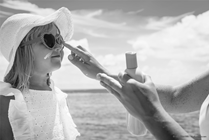
Blog
Sunscreen and Kids: What Parents Need to Know
Summer fun is here, but are you protecting your child’s skin the right way? Discover essential sunscreen tips, safe application techniques, and extra sun protection strategies to keep your little one safe from harmful UV rays.
Article
Understanding Pain
Pain is an alarm signal that occurs when the body is in danger. Think of it as protection from harm.
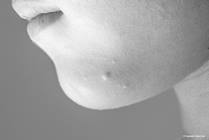
Blog
Molluscum Contagiosum: What You Need to Know
Despite its big, scary-sounding name, molluscum contagiosum is a common and relatively harmless skin condition seen in many children. It comes in the form of bumps that range in size from a pinhead to a pencil eraser.
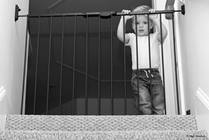
Blog
Home Safety Series: Stairs and Hallways
There is nothing more enticing to a newly mobile child than stairs. We want kids to be able to use the stairs safely. Until they’re old enough to get up and down the stairs on their own, follow these three steps to make your stairs safer for your children.
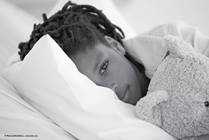
Blog
What You Should Know About Long COVID
Medical providers across the nation are seeing an increase in cases of what is being called long, or long-haul COVID. Here is what you need to know about the condition, which refers to cases with continuing symptoms that last beyond a few weeks.

Article
Fire Escape Plans
Fires in the home can start in an instant and spread in seconds. Everyone in your family should know the fastest and safest way out of any room in your home.
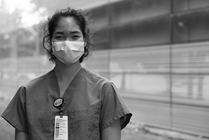
Creating a Youth Pipeline to Health Care Employment
Dozens of young people participated in a paid work experience at Nationwide Children’s during the summer, exposing them to future career paths in health care.

Blog
Choosing Toys for Children with Special Needs
Every holiday season is full of giving, and while that means children of all ages typically get a special gift, for families of children with special needs the holiday season can present a challenge.

Blog
Misdiagnosing Yourself or Your Child Can Be Dangerous
Instead of relying solely upon the internet to help answer all of your health questions, consider using that as a starting point for conversations with your (or your child’s) personal doctor.
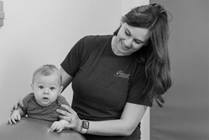
Condition
Craniopharyngioma
Craniopharyngioma is a rare tumor that develops at the central, bottom portion of the brain. It can affect the pituitary gland, optic pathway, and hypothalamus.
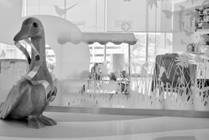
Condition
Gastroschisis
When the muscles and skin fail to form normally in the abdominal wall, this results in an abdominal wall defect. Gastroschisis is the most common of the abdominal wall defects. Babies born with gastroschisis have a hole in the abdominal wall.

Blog
Negative Behavior as a Form of Communication: How to Be a Trauma-Informed Parent
Every child experiences stress. It’s important to understand children’s stress can become toxic if it’s not acknowledged and addressed.
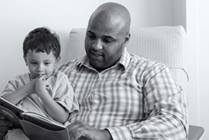
Condition
Anorectal Malformations or Imperforate Anus
Babies born with imperforate anus or anorectal malformation have a condition where the anal opening (where solid waste leaves the body) and rectum do not develop properly.
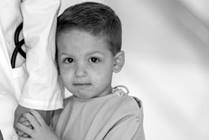
Condition
Upper GI Bleeding
Upper GI bleeding occurs when irritation and ulcers of the lining of the esophagus, stomach, or duodenum result in bleeding. When this occurs, the child will vomit bright red blood, or dark looking flecks or clots that look like “coffee grounds”.

Specialty
Adolescent Breast Program
The Adolescent Breast Program at Nationwide Children’s Hospital is dedicated to providing comprehensive, multidisciplinary treatment for breast conditions in teenagers and young adults, including macromastia (large breasts), breast asymmetry and gynecomastia.
News
Buck a Night at the Hampton Inn & Suites at Easton Supports Nationwide Childrens Hospital
The Hampton Inn & Suites at Easton is in the middle of their “Buck a Night” campaign running now through the end of March. All proceeds from the campaign will benefit Nationwide Children’s Hospital.

Specialty
Physical Medicine and Rehabilitation
We help patients rehabilitate from brain injuries, head and spinal cord injuries, stroke, burns, cancer, muscular dystrophy and other muscular disorders, feeding and swallowing disorders, amputation/limb deficiency, and other physically disabling conditions and injuries.
Article
Frequently Asked Questions
Review questions we frequently receive from patients and their families.
News
Study Shows Buying Breast Milk Online is Likely to Cause Illness in Infants
Results from a study led by researchers at Nationwide Children’s Hospital found more than three-fourths of breast milk samples purchased over the Internet contained bacteria that can cause illness, and frequently exhibited signs of poor collection, storage or shipping practices.
Specialty
Robot-Assisted Surgery
Robot- or robotic-assisted surgery provides a minimally invasive option in several pediatric specialties. These types of procedures provide surgeons additional precision and control during more complicated surgeries.
News
New Study Examines Stair-Related Injuries Among Children in the United States
A new study by researchers at the Center for Injury Research and Policy of The Research Institute at Nationwide Children’s Hospital found that from 1999 through 2008, more than 93,000 children younger than 5 years of age were treated in U.S. emergency departments for stair-related injuries.
News
U.S. Poison Control Centers Receive 32 Calls a Day About Children Exposed to Prescription Opioids
A new study published online today by Pediatrics and conducted by the Center for Injury Research and Policy and the Central Ohio Poison Center at Nationwide Children’s Hospital found that there were more than 188,000 calls to US Poison Control Centers for pediatric exposure to opioids from
Article
Perfusion
Use of the heart-lung machine in cardiac surgery is called cardiopulmonary bypass. Cardiopulmonary bypass provides patients with cardiac and pulmonary support, while bypassing the heart and lungs.
Article
Awards and Recognition
Medical staff leadership would like to acknowledge physicians for recently receiving positive comments from patients and families.
Article
Awards and Recognition
Medical staff leadership would like to acknowledge physicians for recently receiving positive comments from patients and families.
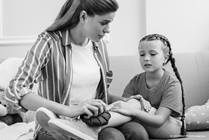
Blog
Inflammation and Swelling: What You Need to Know
If you’ve ever experienced a sprained ankle or broken bone, you know that swelling at the site of injury is a common occurrence. It’s all part of the healing process! However, inflammation and swelling come at a price.
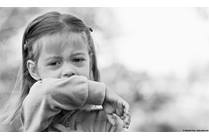
Blog
All About Croup
What causes croup? What other symptoms are present? How do we treat croup, and can it be prevented? Let’s take a closer look.

Blog
When Kids Draw Violent Pictures, Should you Worry?
A single picture in isolation is generally not a cause for concern. The accompanying conversation you have with your child should be a guiding tool to help you identify whether this is a reflection of their worry about a particular situation and/or can necessitate getting more detailed information.

Blog
How to Read a Prescription Label
Taking too little or too much medication can be dangerous. Directions should be followed as prescribed unless directly instructed by a healthcare provider.
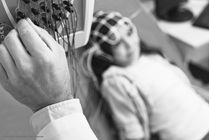
Blog
Epilepsy Monitoring: What to Expect
Monitoring, which is an in-patient procedure, makes it possible for your child’s medical team to determine if concerning events are seizures as well as where in the brain seizures are occurring.

Specialty
Down Syndrome Clinic
We provide diagnostic and treatment services to children and adolescents with Down syndrome. Our team connects families with medical, educational, social and financial support and resources to help meet their child's unique needs.
News
U.S. Health and Human Services Secretary Kathleen Sebelius Celebrates Quality Improvement Efforts, Patient Safety Results with Ohio Hospitals
An effort to improve quality and make Ohio the safest state in the nation for health care has garnered national attention. U.S. Secretary of Health and Human Services Kathleen Sebelius visited Nationwide Children’s Hospital today to celebrate the achievements of Solutions for Patient Safety,
Article
Direct Laryngoscopy and Bronchoscopy
Learn about a direct Laryngoscopy and/or Bronchoscopy procedure to examine a voice box.
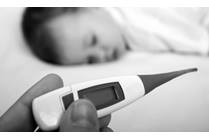
Blog
Fevers: What They Are and Why They Happen
At urgent care, we address a wide variety of problems, but one of the most common concerns we discuss with parents is fever. When a child develops a fever, parents are often scared or worried.

Condition
Central Nervous System (CNS) Tumor
The central nervous system is made up of the brain and the spinal cord. This system is responsible for sending, receiving and processing information throughout your body, controlling how your body functions. When tumors grow in the central nervous system, they can cause significant symptoms.
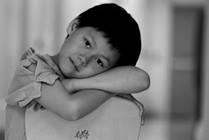
Condition
Hirschsprung Disease
Hirschsprung disease, also known as megacolon, is a congenital condition that causes blockage of the intestine. The blockage is caused by a lack of nerves in the bottom segment of the colon. Children with Hirschsprung disease will need surgery to remove the non-functional segment of the intestine.
Article
Awards and Recognition
"This was our first experience with an infant going to urgent care, and everyone from the front desk staff to registration to the doctor was beyond our expectations. The team showed compassion for our little guy, and we are glad to be able to have such an awesome facility close to us."

Blog
Doomscrolling and Brain Rot: What Are They?
It’s not about completely avoiding screens (because let’s be real, that’s practically impossible). But we can help kids and teens reduce their reliance on technology and recalibrate their brains. Here are a few tips.

Blog
Anxiety and Food Allergies
When parents learn of their child’s food allergy, it is common to feel overwhelmed, frightened and even depressed. As with many things in life, knowledge and experience ease the initial fright.
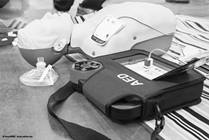
Blog
Preventing Sudden Cardiac Death in Children and Adolescents
Sudden Cardiac Arrest happens when the heart goes into a rapid, lethal heart rhythm called ventricular fibrillation. While cardiac arrest in this age group is rare, it does happen and is more likely to happen at school or during a sporting event.
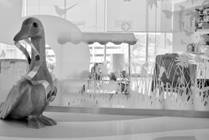
Condition
Amniotic Band Syndrome (ABS)
Amniotic band syndrome (ABS) is a rare congenital disorder that occurs when the lining of the amniotic sac is damaged during pregnancy, creating strands of tissue that wrap around different parts of the developing fetus or umbilical cord. The compression causes a wide range of birth defects.
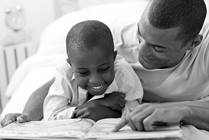
How Nationwide Children’s Hospital Became the World’s Largest "Imagination Library” Affiliate
Nationwide Children’s now distributes 47,000 free monthly books to young children in central Ohio, making it the largest single affiliate of Dolly Parton’s Imagination Library. The program – launched and supported by Ohio First Lady Fran DeWine – is still working to reach some of the children it could help the most.
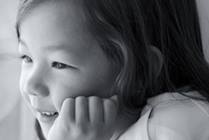
Condition
Embryonal Tumor with Multilayered Rosettes (ETMR)
If you are worried about your child’s symptoms or development, reach out to a physician. The sooner your child is diagnosed, the better the chances are of survival.
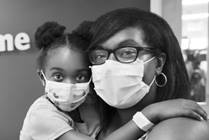
Specialty
Coronavirus (COVID-19): Information for Patient Families
Learn more about the symptoms of Coronavirus (COVID-19), how you can protect your family, and how Nationwide Children's Hospital is preparing.
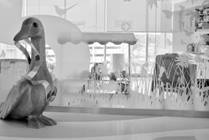
Condition
Dandy-Walker Syndrome
Dandy-Walker Syndrome (DWS) is a congenital condition where the cerebellum does not develop normally. The cerebellum is an area at the back of the brain that controls movement and balance. With DWS, parts of the cerebellum may never develop, may be very small, or may become filled with fluid.
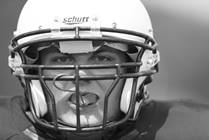
Article
Football Injuries
Football safety equipment should include a helmet with a NOCSAE seal, mouth guards, shoulder pads, football pants with pads, and football shoes with cleats.
Article
The ABCs of Blister Care
We have all undoubtedly had a blister at one point and will more than likely encounter them again. Though blisters may be nagging they can be prevented. The key to blister success is prevention and proper treatment.

Blog
Babies and Safe Sleep: Tips for Tired Parents
Becoming a new parent is exciting, overwhelming, and amazing all at once. And while we all parent differently, one thing is true no matter our parenting style – we all want to do what is best for our children.

Blog
Food Fight: Battle Against Anemia
I’ve never been anemic (as far as I know), but when I found out I was pregnant last winter, I rushed out to buy prenatal vitamins with a hefty dose of iron.

Blog
What Teens Need to Know About Being a Safe Babysitter
Being a babysitter can be really fun for a teenager. However, caring for children also comes with a lot of responsibility. There are many things you can do to make sure you are a safe babysitter.
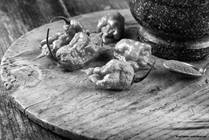
Blog
The One Chip Challenge: Too Hot to Handle
While it may seem harmless to eat a single chip, these contain two of the hottest peppers in the world. The immediate effects felt after eating the chip come from the presence of capsaicin and can lead to dangerous side effects.
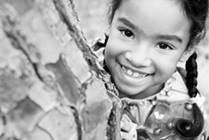
Article
Tree House Safety
Building and playing in tree houses is a favorite activity for young children. Though a tree house can be a place of great fun and imagination, unfortunately it can also lead to serious injury.
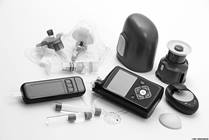
Blog
Choosing the Best Technology to Manage Your Child’s Diabetes
The ultimate goal is to find a cure for diabetes. Until then, available technology can help lessen the burden and allow diabetes to fit more easily into a family’s lifestyle.

Article
South Side Programs and Resources
Our goal is to work with partners in the South Side neighborhood to provide programs and services for community members.

Article
Visiting the Emergency Room
When you know about emergency services at Nationwide Children's Hospital, you will be prepared if your child needs unexpected emergency medical care.
Article
Resources
“What does this mean for my child?” and “Now what?” are common questions parents ask after learning of a cerebral palsy diagnosis. These resources can help support you along your child's journey.

Condition
Substance Use Disorders
When a person loses control and misuses a substance like alcohol or drugs, it can become a harmful habit. This is called substance use disorder.
Article
Single-Sport or Multi-Sport Participation
As your youth athlete explores sports— and may even show interest in specializing in a particular sport— how do you know whether single-sport or multi-sport participation is best for their development?
News
Ethan Bortnicks Its All About Music Tour Coming to Columbus and Benefits Nationwide Childrens Hospital
Ethan Bortnick, the 11-year-old musical sensation who has headlined more than 100 live shows across the globe and shared the stage with legendary artists such as Beyoncé, Reba McEntire and Natalie Cole, is partnering with Children’s Miracle Network Hospitals on his “It’s
News
More Than a Cold, Doctors Warn of a Common Respiratory Illness in Children
Like most moms, Shanisty Ireland had dealt with many bugs being passed between her three children. Last winter, she thought her newborn, Adam, had the same cold that had caused her older children to cough and sniffle.
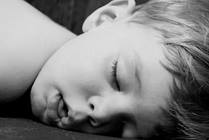
Blog
Noisy Breathing in Kids
Is your child a noisy breather? Find out why – and what to do about it.

Blog
Down Syndrome Regression Disorder: Not One-Size-Fits-All
For as much as we think we know about Down syndrome, there is still more and more that we are learning. In fact, we are sometimes explaining things to families at the same time we are learning them.

Blog
Lactation During the Formula Shortage
The recent formula shortage is undoubtedly putting stress and panic into the minds of parents with babies who already feel the stress of caring for a newborn. Parents who are exclusively providing human milk are encouraged to continue breast/chestfeeding as well as pumping to protect and sustain their supply.
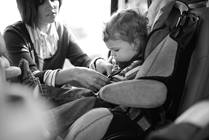
Blog
Car Seat Rules Are Changing-What You Need To Know
There is nothing more overwhelming to a newly pregnant woman than walking into a baby super store. I like shopping, but I was on the verge of a full- blown panic attack when I went to register for my first child and the woman behind the counter handed me a folder of everything you
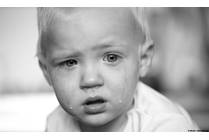
Blog
RSV: A Common Virus Causing Severe Respiratory Infection in infants and Young Children – And Prevention is Now Here!
Most pediatricians and those of us who study and treat respiratory viruses in children often say that respiratory syncytial virus is the most common illness that no one knows about. Called RSV for short, the virus infects almost every child at least once before the age of 2. Why, then, haven’t you heard of it?
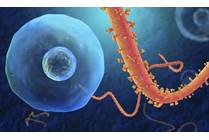
Blog
5 Ebola Facts We Want You To Know
Here at Nationwide Children’s, you will be seeing signs asking families to notify the receptionist immediately if within the past 21 days you have traveled to Guinea, Liberia or Sierra Leone or if you have had contact with someone suspected to have Ebola AND have any of the symptoms.

Condition
Hypermobile Joints
Hypermobile joints, also known as loose joints, describes the ability of a joint to move beyond its normal range of motion. People with hypermobile joints are sometimes referred to as being double jointed. Benign hypermobility syndrome can lead to weak, loose ligaments and joint instability.
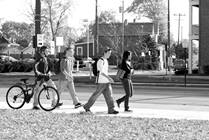
Article
Walking Safely
Walking is a great way to get exercise and enjoy the outdoors. However, kids have a hard time identifying danger and can be seriously injured or killed by cars.
Article
Medical Tutorial
Treatment for all Jeune's patients begins with a series of tests by our multidisciplinary team of Jeune's specialists. Less severe cases of Jeune's are typically then treated with various forms of medical support for the lungs.
Article
Gastric Pacemaker
Gastric pacemaker is an advanced therapy to treat patients with gastroparesis when other standard treatments have not worked.
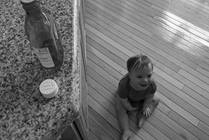
Blog
Flow Restrictors Make Medicine Dispensing Safer, Easier, and Cleaner
Next time you pick up liquid medicine from the pharmacy, ask for a flow restrictor. They can keep your family safer, prevent messy medicine spills and make it easier to dispense medicine.

Blog
What You and Your Teen Need to Know About Male Birth Control
Teens are responsible for their own health and should prioritize the health of their partner as well. Parents and trusted adults also play an important role by encouraging communication about healthy behaviors and relationships.

Specialty
Therapeutic Recreation
Therapeutic Recreation uses play activities to treat children with disabled function caused by trauma or disease.
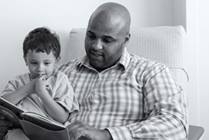
Condition
Congenitally Corrected Transposition of the Great Vessels
Congenitally corrected transposition of the great vessels (CCTGA; l-TGA) is an uncommon congenital heart abnormality, where the receiving chambers (atria) are connected to their opposite pumping chambers (ventricles) because the ventricles are switched from their normal anatomic positions.
News
Build-A-Bear Foundation Gives 20,000 Teddy Bears to Childrens Hospitals Across the Country in Partnership with United Way and UPS
(ST. LOUIS) October 10, 2017 – In honor of the company’s 20th Birthday, Build-A-Bear today announced a donation of 20,000 teddy bears that will be distributed among two dozen children’s hospitals across the United States.

Blog
Kids and Nutrition: Making Vegetables Taste Good
Getting kids to eat vegetables is not always an easy task. The good news? We can make them taste good! If you have a picky eater, here are some recipes to help you to just that.
Article
Clinical Partnerships
We are proud to collaborate and lend our pediatric expertise to several adult hospitals in the state of Ohio.

Condition
Endometriosis
Endometriosis is an inflammatory and estrogen-dependent condition in which the menstrual tissue is found outside the uterus, within the pelvis. Pain due to endometriosis is different from normal menstrual pain. Girls who have a family history of endometriosis have an increased chance of developing it.
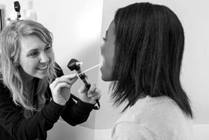
Condition
Tracheomalacia (Primary and Secondary)
Tracheomalacia is characterized by collapse of the walls of the windpipe (trachea). If the collapse is due to weakness of the cartilage in the tracheal wall, it is called primary tracheomalacia. If it's due to compression by a structure outside of the windpipe, it is called secondary tracheomalacia.
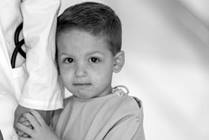
Condition
GI Bleeding (Upper and Lower)
Pediatricians and pediatric gastroenterologists see this quite regularly. It is estimated that GI bleeding accounts for 1% of all pediatric hospitalizations.
Article
Family Guidelines in the NICU/NSCU
We want to make sure your stay at Nationwide Children’s is comfortable. These guidelines were designed to make a safe environment for your baby here in the NICU/NSCU.
Article
Nasal Cautery
Learn about the procedure Nasal cautery, or nasal cauterization, used to treat nosebleeds (epistaxis).
Article
Sinus Surgery
Everything you need to know if you child is having sinus surgery, or FESS (functional endoscopic sinus surgery) is a procedure.

Blog
Autism Awareness Day: A Time for Acceptance and Action
April 2 marks the 11th annual World Autism Awareness Day – a day to recognize people living with autism.

Blog
My Son's Journey With Spina Bifida
Guest post written by Megan Mompher, mom to Blake I have never been as scared in my life as the moment when I found out my unborn son had spina bifida. Blake’s future was unknown and my husband and I had no idea what to expect.
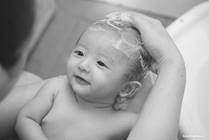
Blog
How to Bathe Your Baby: What You Need to Know
Giving a baby a bath can be intimidating at first – they are wiggly and slippery and SO tiny. Below are some tips that will help you have a positive and safe bath time experience.

Blog
E-cigarettes and Liquid Nicotine: Are They Safe to Use Around Kids?
You already know that secondhand smoke from cigarettes is bad for your kids, but do you know about the dangers of e-cigarettes? Since e-cigarettes, vape pens, and other similar devices hit the U.S. market several years ago, their popularity has skyrocketed.

Blog
What to Expect at Your Child's First Dental Appointment
Have you ever wondered when your child should visit a dentist for the first time? If so, you are among many parents who frequently ask the question. And like many parents, you may be surprised by the answer.
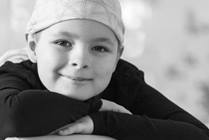
Specialty
Hematology, Oncology & Blood and Marrow Transplant
Our hematology, oncology, and blood and marrow transplant teams treat patients with all forms of cancer and blood disorders. Our specialists participate in collaborative research across the country and around the world to bring innovative treatments to our patients.

Article
Upward Bound
TRIO Upward Bound Math and Science (UBMS) aims to increase the number of students who pursue postsecondary education in math and science and help those students succeed in high school and college.
Article
Curriculum
Our Sports Medicine is built on a broad curriculum that gives our fellows the opportunity to practice in different fields. Learn more about our curriculum.

Blog
11 Period Myths and Facts
Period talk is everywhere, but how do we separate fact from fiction? Here, we breakdown the top 11 myths about periods.

Condition
Jaundice in Children
Jaundice is a common condition in newborns that occurs when a yellow pigment (bilirubin) cannot be removed from the body fast enough and levels in the blood become too high. The buildup of bilirubin causes the skin and the white part of the eyes to appear yellow. Most cases clear without treatment.

Condition
Acanthosis Nigricans
This Helping Hand™ discusses acanthosis nigricans (AN), which is a dark patch that appears on a child's neck, armpit, under the breast or a skin crease. It is usually a sign that the body is making extra insulin that it cannot use well.

Article
What to Expect
The road to pediatric heart transplantation can be a long journey for some families, while for others the need may arise quickly and unexpectedly. Learn what to expect.

Article
Columbus Youth Helmet Ordinance
In the city of Columbus, children younger than 18 years of age are required by law to wear a helmet when they are participating in wheeled sports. Violators may be issued a citation.
Article
Is Your Ankle Playing Tricks on You?
Ankle sprains happen. Athletes learn the concepts of P.R.I.C.E. (Protect, Rest, Ice, Compression, Elevation) early in their career as a way to manage acute (recent) injuries with swelling and pain.
News
Nationwide Childrens Hospital Offers Halloween Safety Tips
On a night known for its mischief, parents do not have to live in fear. To help ensure little witches and warlocks enjoy a safe Halloween, Nationwide Childrens Hospital offers a few quick safety tips.SAFETY MEASURES Be sure your childs costume is large enough to be worn over warm clothes but isnt
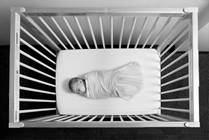
Blog
Safe Sleep and Your New Baby
With all of the “mommy” blogs, baby super-store registries and well intending friends, new moms are often overwhelmed with the amount of information and opinions on baby gear.

Blog
Keeping Your Family Safe After an Abusive Relationship
Domestic violence is a complex issue that affects more than just two intimate partners. Children may also be direct victims, especially of ongoing coercive control. Children experience abuse the same ways that adults do – feeling confused and afraid, and even entrapped by the perpetrator.
News
Nationwide Children’s Hospital Offers Many Ways to Give to Patients During the Holiday Season
There are many opportunities for the local community and supporters of Nationwide Children’s Hospital around the country to give back to help patients during the holiday season.

Article
Sleep in Infants (2-12 Months)
Infants sleep between 9 and 12 hours during the night and nap between 2 and 5 hours during the day.
News
Study Shows Unsafe Storage of Firearms Continues to Put Guns in the Hands of Children
(COLUMBUS, Ohio) – Firearms are the leading cause of death among children and teens 1-19 years old in the United States. According to new research from Nationwide Children’s Hospital, most unintentional firearm fatalities in which a child shoots another child involve boys, occur in the

Blog
Traveling with Kids: Planes, Trains and Automobiles
Going on trips with small children requires a lot of packing and A LOT of planning, but it is totally worth it. Take lots of pictures, make lots of memories and have fun!

Condition
Swallowing Disorders
A swallowing disorder can result in aspiration or food “going down the wrong pipe.” Aspiration can place a child at a higher risk for respiratory/pulmonary issues.

Condition
Hymen Variants
Hymen is a thin piece of tissue located at the opening of the vagina. The hymen needs to be open to allow menstrual blood and normal secretions to exit the vagina. Hymens come in different shapes including imperforate hymen, microperforate hymen, cribiform hymen and septate hymen.

Condition
Vaginal Atresia
Vaginal atresia is a condition a child is born with. The vagina might not be formed completely, meaning it is closed or absent. Treatment includes dilators or surgery.

Condition
Pelvic Inflammatory Disease
Pelvic inflammatory disease, also known as PID, is an infection in the uterus, the fallopian tubes or the ovaries. PID most commonly occurs in sexually active females, but may also occur in females who have never been sexually active.
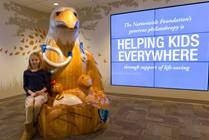
Article
Eagle Animal Friend
Meet our Eagle animal friend, created in honor of our partnership with Nationwide and the Nationwide Foundation.
Article
About Your Room
Learn about meals, room controls and other basics in your room at The Heart Center at Nationwide Children's.

Blog
#ClearTheCrib: Supporting Safe Sleep Practices
October is Safe Sleep Awareness Month – a time to remind each other about safe sleep practices.
News
MEDIA ADVISORY: Big Lots Behavioral Health Pavilion Community Open House
WHAT: Big Lots Behavioral Health Pavilion Community Open House WHEN: Sunday, March 1, 11 a.m.-3 p.m. Media are recommended to arrive at 1 p.m. for the best visual opportunities.

Blog
Preventing Skin Infections in Wrestling
Wrestlers use strength, agility and finesse to wrestle for victory against their opponent. In every practice and match, skin-to-skin contact between two players is inevitable. This environment of skin and sweat is a breeding pool for organisms such as bacteria, fungus, and viruses.

Blog
For the Grieving Parent After a Miscarriage or Infant Loss
During the month of October, our nation recognizes those who have endured a pregnancy or infant loss. Even though October is only one month, we hold a space for your family and child in our hearts.
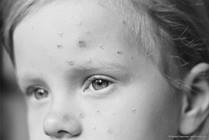
Blog
Monkeypox, Now Mpox, Is Spreading: What You Need to Know
Preventing Mpox involves avoiding close, skin-to-skin contact with individuals showing symptoms. Practicing good hygiene, such as frequent handwashing and avoiding shared items, is also essential.

Condition
Jeune's Syndrome
Jeune's Syndrome is a form of congenital dwarfism causing children to have a deformity of their chest wall. Learn more about signs, symptoms, and treatment.
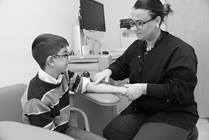
Blog
Food Sensitivity Tests: The Pitfalls of Home Testing Kits
At-home tests are being marketed as a convenient way to determine food sensitivity. Read what our allergy expert has to say about what these tests can and can't do.
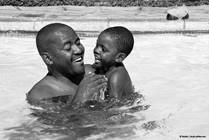
Blog
Public Pool Safety
Everyone loves to take a dip in the pool—especially during the dog days of summer! While swimming is a great way to play, exercise, and cool off, there are certain things to keep in mind.
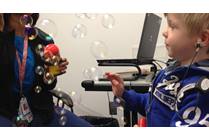
Blog
Why Are Speech and Hearing Screenings Necessary for Kindergarteners?
As your child begins Kindergarten, you’ll need to prepare him or her for the many tests that lie ahead over the years. The Ohio Department of Education recommends that ALL children entering Kindergarten have a developmental screening.

Blog
Screen Apnea in Kids and Finding Balance with Technology
While technology isn’t starving our kids of oxygen, it does have an impact on the way they act, think, and sleep. Being aware is the first step. Take a deep breath and plan to take a screen-free break with your kids today.
News
Study Shows Asking Adolescents Sensitive Health Questions by Computer Results in Honest Answers, Better Care
Parents of teens know just how difficult it is to get them to talk about their personal lives, let alone their health. With only 20 percent of children with mental health problems in the United States being properly identified and treated, it is imperative that a solution be found.
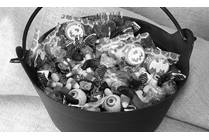
Blog
6 Tips for Trick-or-Treating with Food Allergies
Any food centered event can introduce challenges for families and children with food allergies. Trick or treating and Halloween celebrations, in particular, present opportunities for increased exposure to food allergens, which can be present in candy and other treats.

Blog
Cervical Cancer Screening: Why It's Important
Most cervical cancer is caused by the human papilloma virus. This virus enters cells and causes changes that can lead to cancer. HPV is transmitted from person to person through sexual activity and genital contact.

Specialty
Intracranial Hypertension Clinic
The recognition of idiopathic intracranial hypertension in children has increased dramatically. We are leading the response to this trend with the development of a multidisciplinary clinic for the specialized diagnosis, treatment and ongoing care of these unique children.
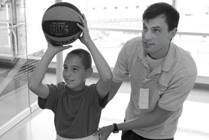
Condition
Diffuse Intrinsic Pontine Glioma (DIPG)
Diffuse intrinsic pontine glioma, also know as DIPG, is an aggressive, malignant brain tumor that develops in a part of the brainstem called the pons.

Blog
"To the Bone" and Eating Disorder Treatment: Did Netflix Get it Right?
The Netflix movie To the Bone portrays a semi-autobiographical story about a 20-year-old girl named Ellen and part of her journey through recovery from an eating disorder, Anorexia Nervosa. Overall, this movie seeks to raise awareness about something that doesn’t get enough discussion. But in doing so, it raises many questions.
Article
Hearing Team Education Series
The Hearing Program has designed an education series to discuss topics related to hearing loss in a relaxed, supportive atmosphere.
News
Liquid Nicotine Used in e-Cigarettes Still a Danger to Children Despite Recent Decline in Exposures
A new study published online today by Pediatrics and conducted by the Center for Injury Research and Policy and the Central Ohio Poison Center at Nationwide Children’s Hospital found that there were more than 8,200 calls to US poison centers regarding exposures to liquid nicotine and e-cigarettes among children younger than 6 years of age from January 2012 through April 2017, averaging 129 calls each month or more than 4 a day.
Article
Our Healing Environment
When your child needs a hospital, everything matters. Years of careful planning paved the way. There are thousands of moving parts involved in opening a new main hospital. More than 8,000 tasks to be precise.
Article
STINKY University DIY Sessions
Below you will find video clips, gross recipes, and PowerPoint slides that will help YOU become an Instructor of Ickiness! Kids will become Graduates of Grossness! Lesson Plans include supplies needed for hands-on activities.
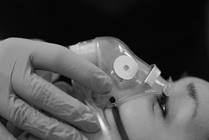
Blog
Enterovirus D68: Learn the Facts
Runny nose, cough and congestion are sweeping across central Ohio. You know this because you’ve seen it in the news, on social media feeds, and (if you’re like me) in your own home. It happens this time every year.

Condition
Obsessive Compulsive Disorder
Obsessive compulsive disorder (OCD) is a common mental disorder in which “obsessions” and “compulsions” cause extreme anxiety and daily life disruptions.
Article
Why Choose Our Rehabilitation Program
We are a leading pediatric Inpatient Rehabilitation Program. Learn why families choose us.

Article
Trainee Association
The Research Institute’s Trainee Association (RITA) was created in 2013 to help better train and prepare trainees for their “next steps.”

Article
E-cigarettes and Liquid Nicotine
Just a small amount of liquid nicotine can be deadly to a child. Poisoning can happen in two ways: when the liquid is swallowed or when it is absorbed through the skin.
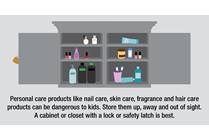
News
Hidden in Plain Sight: New Study Finds Personal Care Products Send a Young Child to the Emergency Room Every Two Hours
A new study conducted by researchers at the Center for Injury Research and Policy at Nationwide Children’s Hospital found that 64,686 children younger than five years of age were treated in U.S. emergency departments for injuries related to personal care products from 2002 through 2016 – that is the equivalent of about one child every two hours.
News
Pediatric Clinic Tests Virtual Reality for Hemophilia Patients during Procedures
As a nurse clinician in the comprehensive hemophilia treatment center at Nationwide Children's Hospital for nearly 30 years, Charmaine Biega, RN, has watched her patients endure hundreds of needle sticks for infusions and other procedures which can mean tears, frustration, wiggling and –

Blog
Baby’s Head Shape: Should You Be Concerned?
Bringing a baby home from the hospital can be a scary time for a parent as they navigate the first few months as an expanded family. The list of things to worry about as a child develops can seem endless, and baby’s head shape is a common item on that list.
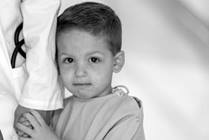
Specialty
Hospital Medicine
Hospitalists in the Sections of Hospital Pediatrics and Adult Hospital Medicine provide care for your child on the general medical floors.
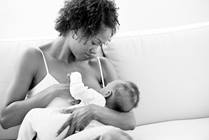
Redefining Breastfeeding Help as Preventive Health Care
Breastfeeding is linked to an array of benefits for both the parent and the child, but it is often overlooked in preventive services. A team of health professionals are working to remedy that and integrate breastfeeding support and education into primary care visits.

Condition
Osteosarcoma
Osteosarcoma is the most common form of bone cancer in young people under age 20. Tumors are lumps or masses and usually affects the long bones near the knee or the shoulder.

Condition
Hereditary Multiple Osteochondromas
Hereditary multiple osteochondromas (HMO) is a rare genetic disorder. Children develop non-cancerous (benign) bone tumors called osteochondromas. Knees, shoulders, ankles and wrists are the most common sites for osteochondromas.
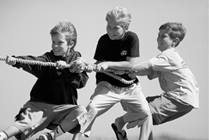
Article
Summer Camp
About 11 million children and young adults attend summer camp each year. While there are many advantages to spending time at summer camp, there is, as always, the possibility of injury.
Article
Community Provider Corner
- Free Summer Resources for Families
- Navigating the Mental Health Crisis in Rural Ohio
News
New Study Finds Water Tubing-Related Injuries Up 250 Percent
Water tubing, a recreational activity in which participants ride an inner tube which is pulled behind a boat by a tow rope, has grown in popularity in recent years. Unfortunately, the number of injuries related to this activity has also increased.

Blog
Signs of Stroke in Children
In children and teens, stroke shares symptoms with many health problems that occur far more commonly. When these signs suddenly occur in some combination, the suspicion for stroke is much greater.
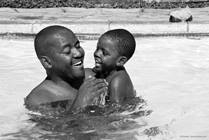
Blog
Delayed Symptoms of Drowning: Know the Signs
As it turns out, the overwhelming majority of kids with a close call in the water do fine, but a few don’t. Knowing the signs and symptoms of drowning—and what to do if they occur—can mean the difference between life and death.

Blog
How to Get Rid of Head Lice
“Mommy, my head itches!” Not the words you want to hear from your child, because it usually means one thing- head lice. The American Academy of Pediatrics recently released a statement that children with head lice do not need to be kept home from school which understandably has many
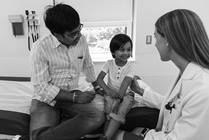
Blog
5 Questions Parents Need to Ask Before Leaving the Emergency Room
A sick child is every parent’s concern. Most aim to alleviate their kid’s discomfort at home and follow up with their pediatrician, but when an emergency room visit is required, that concern can become overwhelming.
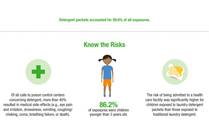
Blog
Laundry Detergent Packet Dangers
Hey, moms and dads: I get it. You are busy. I’m a parent. I’m busy, too. My calendar is so full that I have to schedule time with my husband or it doesn’t happen. So I love products that make my life easier.
News
Nationwide Children’s Hospital’s Proposal for ‘South Side Career Homes’ Selected as a Contract Awardee for Phase 1 of Fannie Mae’s Sustainable Communities Innovation Challenge
Nationwide Children’s Hospital’s proposal for “South Side Career Homes” was named as a contract awardee in Phase 1 of Fannie Mae’s Sustainable Communities Innovation Challenge (The Challenge).

Article
Resident Experience
At Nationwide Children's Hospital, we care for, support and mentor our residents. One aspect of that support is a series of monthly and annual development and social events to help you balance your responsibilities, provide mechanisms for your feedback, and just have fun!

Condition
Seizures and Epilepsy in Children
A seizure occurs when part(s) of the brain receives a burst of abnormal electrical signals that temporarily interrupts normal electrical brain function.
Article
Linden Programs and Resources
We have been a proud partner in the Linden community for more than 25 years. Now, our partnership will further deepen as the Linden community collaborates with Nationwide Children’s Healthy Neighborhoods Healthy Families (HNHF) initiative.
Article
Speech Language and Hearing Expectations for Children with Hearing Loss
Learn more about speech and hearing expectations for children with hearing loss.
News
Brueggers Hosts Free Coffee Day to Benefit Nationwide Childrens Hospital
Nationwide Children’s Hospital is proud to partner with Bruegger’s to host Free Coffee Day on Wednesday, November 10 at all central Ohio locations. Until 2 p.m., guests can fill up their coffee mugs with free regular drip coffee.
Article
Flexible Nasopharyngoscopy/Laryngoscopy
Learn about a test called Flexible nasopharyngoscopy, or “flexible scope.”
News
Nationwide Childrens Hospital Opens New MRI Suite Featuring a One-of-a-kind Layout
As technology continues to change and grow, Nationwide Children’s Hospital is keeping pace by unveiling a new combined operative and diagnostic MRI suite.
News
Nationwide Childrens Hospital Opens New MRI Suite Featuring a One-of-a-kind Layout
As technology continues to change and grow, Nationwide Children’s Hospital is keeping pace by unveiling a new combined operative and diagnostic MRI suite.
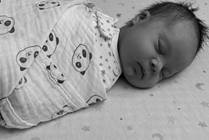
Blog
The ABC's of Safe Sleep
There are so many things for parents to research and learn before welcoming a new baby into the family. One of the most important things is safe sleep. Babies sleep a lot and there are a few steps to follow to make their sleep space a safe place.
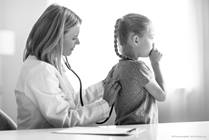
Blog
White Lung Pneumonia: Clearing the Air
As the winter months come around, there is always an uptick in respiratory illnesses. You may have heard of another one to contend with: white lung pneumonia.

Blog
Using a Booster Seat Until a Seat Belt Fits
Depending on age, weight and height, children need to be in car seats, booster seats, or seat belts every time they are in the car. We all know to put a newborn in a rear-facing car seat, but how long should older kids stay in a booster seat?
News
Culvers Gives Back To Columbus by Hosting National
Culvers® of Columbus, Powell and Reynoldsburg are among nearly 400 Culvers Restaurants donating 10 percent of sales on Tuesday, May 12, to local organizations during the annual system-wide "Day of Giving" fundraising event.

Blog
Dance Injuries: From Rehab to Rehearsal
When a medical professional is actively involved and there is appropriate communication, young dancers are less likely to miss dance time, and there is a reduced injury rate. Learn what to do if you’re a dancer with an injury.

Condition
Dermoid Cyst
Dermoid cysts, also called epidermoid cysts or dermal/epidermal inclusion cysts, are masses in children and adults, most commonly found in the head, face, neck and upper chest. Dermoid cyst ablation is a minimally-invasive procedure that is an alternative to surgically removing the dermoid cyst.
Article
Use Strength and Preparation to Keep Your Dancer in Top Form
Most young ballerinas can’t wait to take their dancing to the next level, but there are some things to consider so they don’t end up damaging their feet.
News
Nearly 2 in 5 Teen Drivers Text While Driving
(COLUMBUS, Ohio) – Cellphone use while driving has been estimated to increase crash risk by 2-9 times and texting while driving may be especially risky because it involves three types of driver distraction: visual (eyes off the road), manual (hands off the wheel), and cognitive (attention
Article
Medical Equipment in the NICU
This page will help you navigate the different medical equipment your baby is currently using.
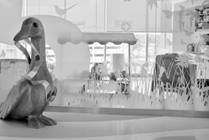
Condition
Lower Urinary Tract Outlet Obstruction (LUTO)
Lower urinary tract outlet obstruction is when pee is partly or completely blocked from leaving the body at the lower urinary tract. LUTO occurs in about 1 in every 5,000 pregnancies. It is more common in males.
News
Nationwide Childrens Hospital Tests, Trains School Staff on How to Respond to Kids Severe Allergy Attacks
Many children with severe allergies carry injectable epinephrine (EpiPens) – syringes filled with epinephrine to delay an allergic reaction – but the EpiPens sometimes require the help of an adult to dispense.

Article
Residency Wellness
Taking care of the emotional and mental well-being of our residents is a top priority at Nationwide Children’s Hospital.

Blog
Fungus Among Us: What Patients and Parents Need to Know About Histoplasmosis
Histoplasmosis is an infection caused by the fungus, Histoplasma capsulatum, which is found as spores in soil, bird and bat droppings and some decaying materials. It is the most common fungal infection in North America.

Blog
Pets and Children: Keeping Kids Safe When Animals Are in the Home
Dogs, cats, and other pets can be wonderful additions to the family. They can be fuzzy friends that provide love and companionship for many years. Unfortunately, even the most loving of pets can bite.

Blog
Endometriosis in Teens and Adolescents: More Than Just Cramps
Endometriosis is a condition in which the menstrual tissue is found outside the uterus, within the pelvis. Girls who have a mother, sister or aunt with endometriosis have an almost 10 times increased chance of developing it.
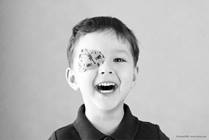
Blog
Amblyopia: Diagnosing and Treating "Lazy Eye"
Many eye conditions and diseases can affect children’s vision. It is important that children receive good eye care even at an early age, because that is when many vision problems begin. The leading cause of vision impairment in children is amblyopia.
News
Hyundai Hope On Wheels Presents Nationwide Children's Hospital with a $100,000 Hyundai Impact Award Grant to Support Pediatric Cancer Research
Hyundai Hope On Wheels® (HHOW), a 501c3 non-profit organization supported by Hyundai and its U.S. dealers, announces a $100,000 Hyundai Impact Award Grant to Nationwide Children’s Hospital to continue its long-standing fight against pediatric cancer.

Blog
Bladder Exstrophy: 4 Things to Know
Bladder exstrophy is a rare condition that happens when a baby's bladder sticks out through the wall of the stomach. Bladder exstrophy affects the organs in the urinary and reproductive systems. It can cause problems with the abdominal wall, bladder, genitals, pelvic bones, rectum and anus.

News
Experts Provide Practical Advice for Families Worried About Picky Eaters
Many families with young children experience bouts of picky eating, from toddlers who want to eat only chicken nuggets and mac and cheese, to kids who love sweet fruit but will not touch leafy green vegetables. Getting picky eaters to try new, healthier foods can be a challenge for parents and caregivers to navigate.
Article
Home Therapy
Most cystic fibrosis patients prefer to be at home rather than in the hospital. When our patients need IV antibiotics and it has been approved by our team, it is possible to have treatment at home.
News
Nationwide Children's Hospital Honors Legacy of Giving from Nationwide and the Nationwide Foundation
Today, Nationwide Children’s Hospital honored its relationship with Nationwide and the Nationwide Foundation through a special recognition ceremony and a permanent “animal friend” statue in the hospital. The relationship between these organizations dates back decades.
Tibial Spine Fracture
Tibial spine fracture is a break at the top of the tibia bone in the lower leg near the knee.

Condition
Spina Bifida and Myelomeningocele
Spina bifida is a type of neural tube defect, which is a problem with the spinal cord or the structures that cover it.
News
Nationwide Childrens Hospital to Introduce New Technology to Enhance Pediatric Assessment and Early Diagnosis
Nationwide Children’s Hospital announced today the introduction of a new pediatric diagnostic tool that assesses developmental milestones in early childhood while helping identify problems so that treatments for various conditions or disorders can begin sooner.
News
Nationwide Childrens Hospital Receives $5 Million Gift from Worthington Industries and McConnell Family Foundations Establishing the NEXT Consortium
Nationwide Children’s Hospital announced today it has received a combined $5 million gift from Worthington Industries and the McConnell Family Foundation to help establish the National Experimental Therapeutics (NEXT) Consortium.
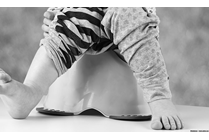
Blog
6 Things Every Parent Should Know About Toilet Training
Toilet training is a big milestone for children but can also be a nerve-wracking time for parents. Understanding the process is important and so is recognizing when it might be beneficial to reach out for professional help.

Blog
Lupus and Kids: Understanding Child Onset Disease
There are different types of lupus: skin only, systemic (affecting multiple organs), drug induced.
News
New Study Finds Child E-Cigarette Exposures up 1,500%
As the household presence of e-cigarettes and liquid nicotine has increased, so have exposures among young children. A new study conducted by the Center for Injury Research and Policy of the Research Institute and the Central Ohio Poison Center, both at Nationwide Children’s Hospital, found
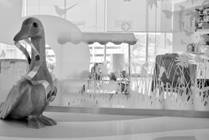
Condition
Congenital Diaphragmatic Hernia
Congenital diaphragmatic hernia (CDH), is a rare congenital condition where the muscles in the diaphragm do not grow together, leaving a hole. The hole allows the intestines and other organs (stomach, liver) to move up into the baby’s chest. When this happens, it makes it hard for the lungs to grow.

Condition
Anencephaly
Anencephaly is a condition present at birth that affects the formation of the brain and the skull bones that surround the head. Anencephaly results in minimal development of the brain. Often, the brain lacks part or all of the cerebrum. There is no cure or standard medical treatment for anencephaly.

Condition
Laryngomalacia
Laryngomalacia literally means “Soft Larynx”. It is caused by floppiness of the laryngeal tissues above the vocal cords (the supraglottic larynx).
Article
Newborn Screening
All babies, born in Ohio, have a blood test at birth called the Newborn Screening Test, which screens for 35 different treatable conditions. Each state has a Newborn Screening Test, but each one tests for a different number of conditions.
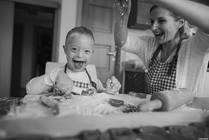
Blog
COVID-19: How to Keep Kids Busy and Connected
In these uncertain times, parents have the added stress of keeping their children busy and connected with friends and family, all while staying home to slow the spread of coronavirus. We did some crowdsourcing to get some great ideas for younger and older kids.
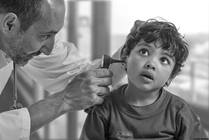
Blog
Ear Infections: Why Kids May Not Need 10 Days of Antibiotics
The American Academy of Pediatrics (AAP) updated their recommendations for treating childhood ear infections in 2013. The current guideline states that a full ten days of antibiotics may not be necessary for children over two years of age with non-severe ear infections.
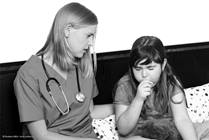
Blog
Whooping Cough (Pertussis): Everything You Need to Know
If your child starts coughing persistently, experiences difficulty breathing or if the cough is followed by vomiting or the classic “whooping” noise, seek medical care immediately. Early diagnosis and treatment are crucial for preventing severe complications.
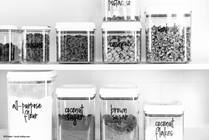
Blog
Organizing Your Home Safely
While I understand how satisfying this may be, or how tempting it may be to stage a room for the perfect Instagram or TikTok moment, some things really need to stay in their original containers, specifically medications and cleaning products.
News
International Symposium Explores New Hybrid Approach to Congenital Heart Disease
Interventional cardiologists and cardiothoracic surgeons from throughout the United States, North and South America, Europe, Australia and Asia will gather at Columbus Childrens Hospital from June 28-30, 2006, for the inaugural International Symposium on the Hybrid Approach to Congenital Heart

Blog
Vaginal Agenesis: What Is It?
Agenesis is a medical word that means a body part never formed before birth. The term vaginal agenesis means that the female does not have a vagina because it never formed. Vaginal agenesis affects about one in every 5,000 females.
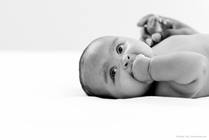
Blog
Recognizing Congenital Muscular Torticollis in Your Newborn
If an infant consistently holds his or her head turned or tilted to one side more than the other, however it could be a sign of a condition called congenital muscular torticollis.
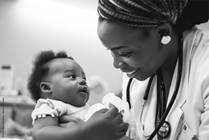
Blog
Turner Syndrome: Unique as a Butterfly
Turner Syndrome is a genetic condition, a difference in the number or type of sex chromosomes, in those assigned female at birth.
News
Nationwide Childrens Hospital Designated Translational Research Center in CF Foundations National Clinical Trials Network
Nationwide Childrens Hospital has been selected to serve as one of 13 special translational research centers in a network of 77 clinical trial sites that are part of the Therapeutics Development Network (TDN) of the Cystic Fibrosis Foundation.The translational research centers will lead the newest

Blog
5 Tips for Swimming Pool Safety
Planning a pool day with the kids? Before you dive in, brush up on these 5 essential tips to help prevent drowning and keep your little ones safe while they splash and play.

Article
Snow Shoveling
Each year, snow shoveling leads to approximately 100 deaths and 11,500 injuries and medical emergencies that require treatment in an emergency department.

Blog
The Mental Load of Moms
Who is in charge of “remembering,” otherwise known as “the mental load?” Historically, mothers have mostly been the ones to take care of all the details.

News
Nationwide Children's Hospital Celebrates Opening of the Big Lots Behavioral Health Pavilion
Nationwide Children’s Hospital held a Community Dedication Celebration of the Big Lots Behavioral Health Pavilion today. At nine stories tall, it is America’s largest and most comprehensive center dedicated exclusively to child and adolescent behavioral and mental health on a pediatric medical campus in the United States.

Blog
Kids and Self-Injury: What Parents Need to Know
Self-injury is the act of physically hurting oneself without the intent to die. It is a sign of emotional distress and indicates a person has a lack of healthy coping skills. The most common forms of self-injury are cutting, burning, or scratching the skin and bruising the body tissue.
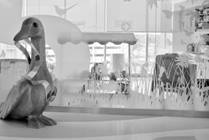
Condition
Giant Neck Mass
A giant neck mass is an abnormal growth of the neck. There are two different types of masses including cervical teratomas and lymphatic malformations. The cause of it is unknown, but it can be treated.

Condition
Abdominal Pain
Functional abdominal pain is a common problem that interferes with a child’s daily life. Some red flags to look for include weight loss, vomiting, lack of energy and bloody diarrhea. A physician can perform tests to determine the cause of abdominal pain. Treatment plans vary depending on the cause.
News
International Symposium Explores Hybrid Approach to Congenital Heart Disease
Interventional cardiologists and cardiothoracic surgeons from throughout the United States, North and South America, Europe, Australia and Asia will gather at Columbus Childrens Hospital from June 27-29, 2007, for the second International Symposium on the Hybrid Approach to Congenital Heart Disease
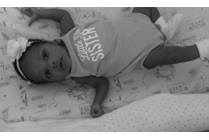
Blog
From Tragedy to Education: The ABCs of Safe Sleep
It was a Tuesday evening. It was a typical night that turned out to not be typical at all. My baby, Jaya, and I were together in my room. I had just changed her diaper and she was doing her usual tummy time. Dad came by, but didn’t stay long because he had to go to work.

Blog
Show Dogs: What Parents Need to Know
A new PG-rated children’s movie, Show Dogs, promises a light-hearted story of talking dogs who fight crime. However, it also sends a disturbing message to children about who is allowed to touch their private parts.

Blog
Teens and Tattoos: What Parents Need to Know
Americans love their ink. One in five have at least one tattoo, and the numbers are higher among young adults. So, it’s not surprising that teenage interest in tattoos is on the rise.
News
Columbus Resident Joan Wallick Donates $1 Million to Nationwide Childrens Hospital Supporting the Joan Fellowship in Pediatric Hemostasis-Thrombosis
Joan Wallick, a Columbus resident (43209), recently donated $1 million to Nationwide Children’s Hospital establishing the Joan Fellowship in Pediatric Hemostasis-Thrombosis which will train the next generation of physicians in the discipline.

News
Nationwide Children’s Hospital Announces Livingston Orthopedic & Surgery Center
(COLUMBUS, Ohio) – Nationwide Children’s Hospital announced today the Livingston Orthopedic & Surgery Center, which will break ground in the fourth quarter of 2021.
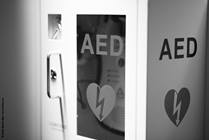
Blog
Heart Safe Schools Can Prevent Sudden Cardiac Death
Taking the necessary steps to become a Heart Safe School ensures that should a cardiac incident occur, there will be school personnel who are prepared to jump into action, with equipment that is easily accessible and operated, to save a life.

Blog
Should My Baby Get a Flu Shot?
Flu season is here and flu vaccines are more readily available than ever before. You can obtain a flu shot at the grocery store, every corner drug store, community centers and certainly at your pediatrician’s office.
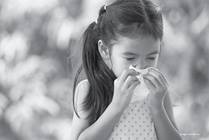
Blog
COVID-19 and Pollen Allergies: The Perfect Storm
As much as we all hoped we wouldn’t have to worry about this again, the COVID-19 pandemic persists as the spring tree pollen season begins. Pollen allergies affect millions of children and adults, causing misery for weeks to months each spring, summer, and autumn.

Blog
Organic Foods: Are They Safer For Our Kids?
When determining whether to choose conventional or organic food, it is important to understand what organic means.

Expanding the Reach of the Ohio Governor’s Imagination Library
In 2019, Fran DeWine, Ohio’s First Lady, introduced the Ohio Governor’s Imagination Library to promote literacy in the state. Nationwide Children’s Hospital is a founding member, and administers and promotes the program in Franklin and Delaware counties.

Condition
Sialorrhea (Drooling)
Sialorrhea, also known as hypersalivation or drooling, means excessive saliva flow. Anterior sialorrhea is when patients have forward spillage of saliva from their mouths onto their faces and clothes. Posterior sialorrhea is when patients have spillage of saliva from their mouths down their airways.

Condition
Ewing Sarcoma
Ewing sarcoma is a type of bone or soft tissue cancer. It is the second most common tumor of the bone and affects children and young adults.

Blog
Sexually Transmitted Infections: What You Need to Know
Sexually transmitted infections are infections that are spread from person to person through sexual contact, including vaginal, anal, or oral sex, or other skin to skin contact. They can be caused by bacteria, viruses, and parasites.
News
International Symposium Hosted by Nationwide Childrens Hospital Explores Hybrid Approach to Congenital Heart Disease
Interventional cardiologists and cardiothoracic surgeons throughout the United States and the world, who treat patients with congenital heart disease, will gather at the Hilton Columbus at Easton Town Center August 31-September 2, 2010 for the International Symposium on the Hybrid Approach to
News
Nationwide Children's Hospital Awarded $250,000 Childhood Cancer Research Grant from Hyundai Hope On Wheels
Hyundai Hope On Wheels® and Central Ohio Hyundai dealers will today award Nationwide Children’s Hospital with a $250,000 Hyundai Hope Grant for pediatric cancer research.

Blog
Transitioning from Crib to Toddler Bed
The American Academy of Pediatrics (AAP) recommends transitioning a child out of a crib and into a toddler bed once the crib railing is lower than their chest. At that height, children are more easily able to climb out of the crib, which can lead to injury.

Blog
Rare Disease: Finding Answers for Patients with Mysterious Conditions
For a disease to be considered “rare,” fewer than 200,000 people in the United States will be affected by it. Some rare genetic disorders can be very difficult to diagnose, and for parents of a child with a rare disease, one of the most anxious times is the period of waiting for a diagnosis.

Blog
Remote Learning: 5 Tips for Maintaining a Healthy Posture
Many students are finding themselves learning in virtual classrooms for the first time. Although remote learning may have some perceived perks like sleeping in, self-paced learning and days off, it also comes with new challenges.

Blog
Community Acquired Pneumonia in Children: What Parents Need to Know
As the seasons change, we often see a rise in respiratory infections among children. One such infection that has been making the rounds is community-acquired pneumonia, usually caused by Mycoplasma pneumoniae.
News
National Study Evaluates Playground Equipment-Related Injuries
Schools have opened their doors this fall and the sounds of children echo from surrounding playgrounds. While children’s activities on playgrounds can benefit their psychosocial and physical development as well as combat problems such as childhood obesity, these activities are not risk-free.
Article
Bladder Outlet Surgery
Bladder outlet surgery aims to stop urine from leaking from the bladder into the underwear or a diaper. Bladder neck reconstruction and sling procedures are usually done at the same time to stop urinary incontinence.
News
Mark Galantowicz, MD, and John P. Cheatham, MD, of Nationwide Childrens Hospital Honored with Endowed Chairs
Mark Galantowicz, MD (43220), chief of Cardiothoracic Surgery and co-director of The Heart Center at Nationwide Childrens Hospital, and John P. Cheatham, MD (43215), director of Cardiac Catheterization and Interventional Therapy and co-director of The Heart Center at Nationwide Childrens, were
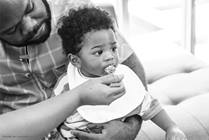
Blog
When Texture Is Tricky: Tips for Helping Your Child Overcome Food Texture Sensitivities
Navigating the nuances of feeding your child can sometimes be tricky, but for some families, the transition to solid foods can be particularly challenging. Some children have difficulty progressing from formula or human milk to pureed solids (like baby food) and beyond.
News
The Memorial Tournament and Nationwide Childrens Hospital Welcome Nicklaus Childrens Health Care Foundation as Partner
Tournament officials announced today an alliance among the Memorial Tournament, Nationwide Children’s Hospital and Nicklaus Children’s Health Care Foundation to create opportunities for funding and awareness.
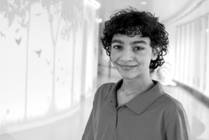
Condition
Autism Spectrum Disorder (ASD)
Autism Spectrum Disorder (ASD) refers to a complex neurodevelopmental disorder that impacts a child’s ability to communicate and interact socially. It also impacts the way the child thinks and behaves.

Specialty
Brachial Plexus and Nerve Program
The brachial plexus is a network of nerves that controls the arm, shoulder and hand function. Injury during birth, or later trauma, can leave the arm without feeling or movement. Surgery may be necessary. Our experts are ready to evaluate, educate and provide appropriate interventions.
Article
Seizure Information for Parents
Your child had a seizure. What do you do now? Learn more about safety, treatment and tips on living with seizures and epilepsy.


